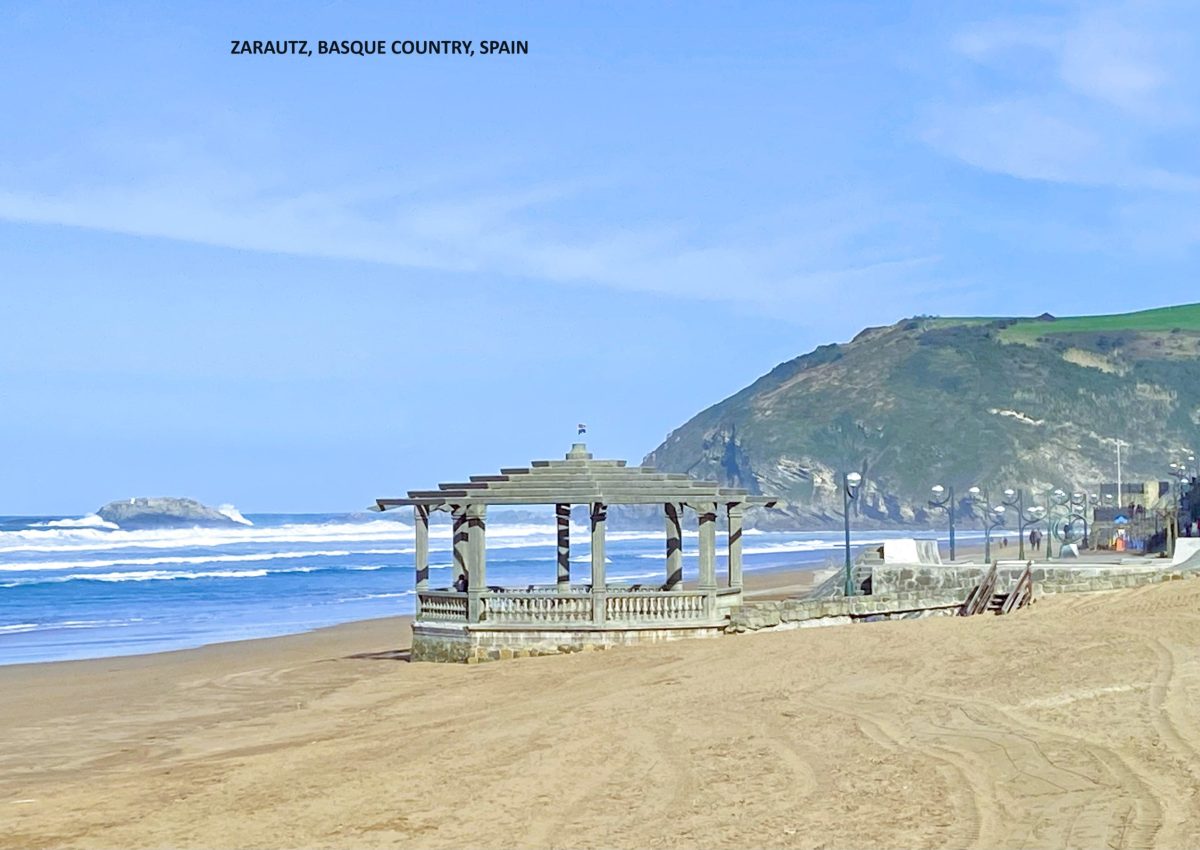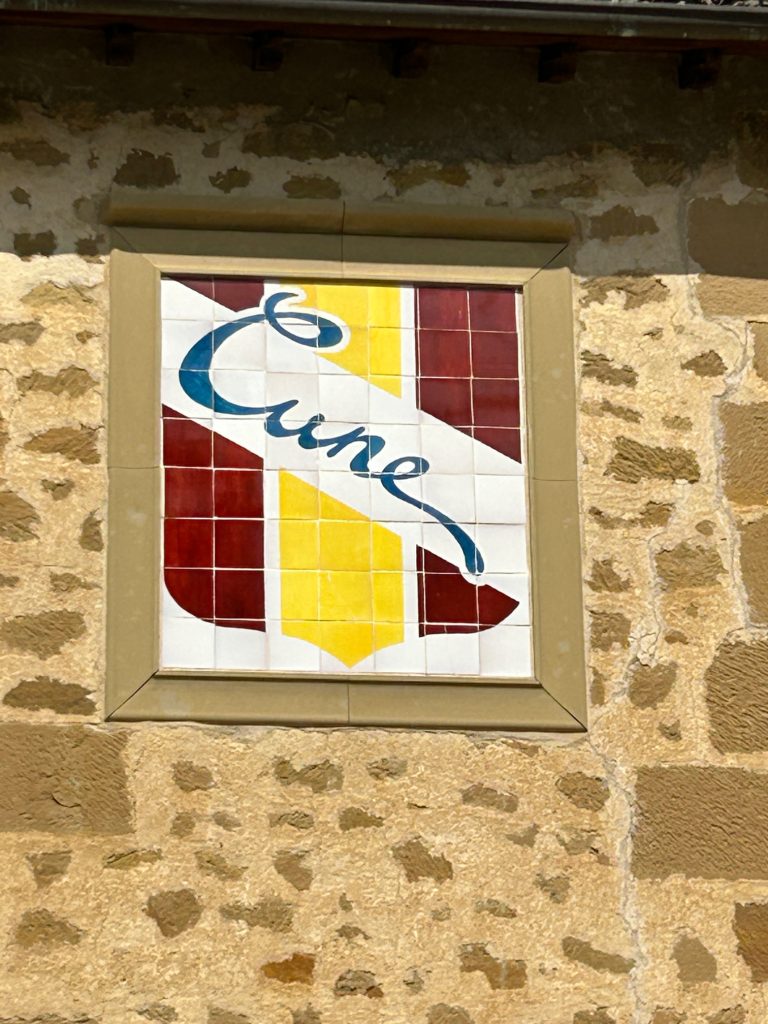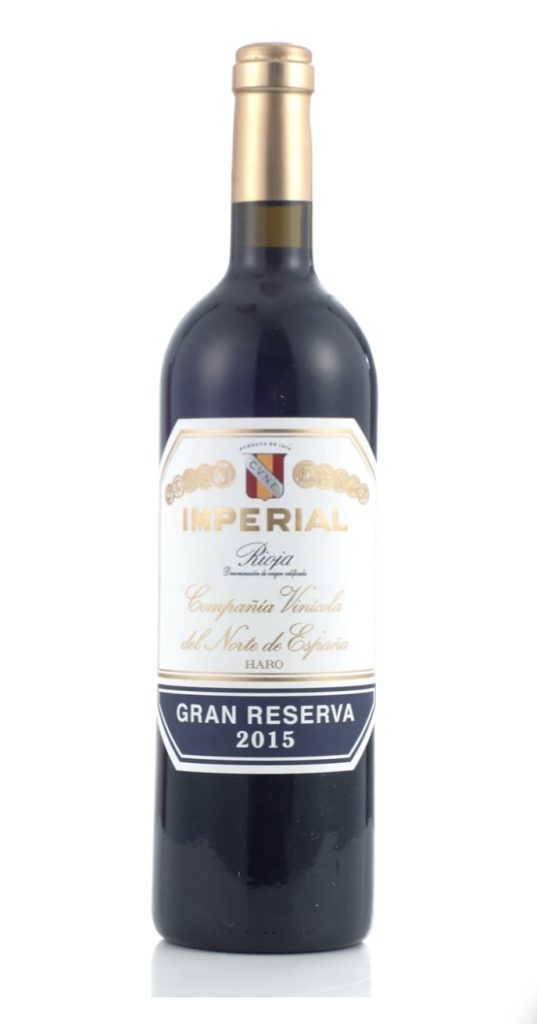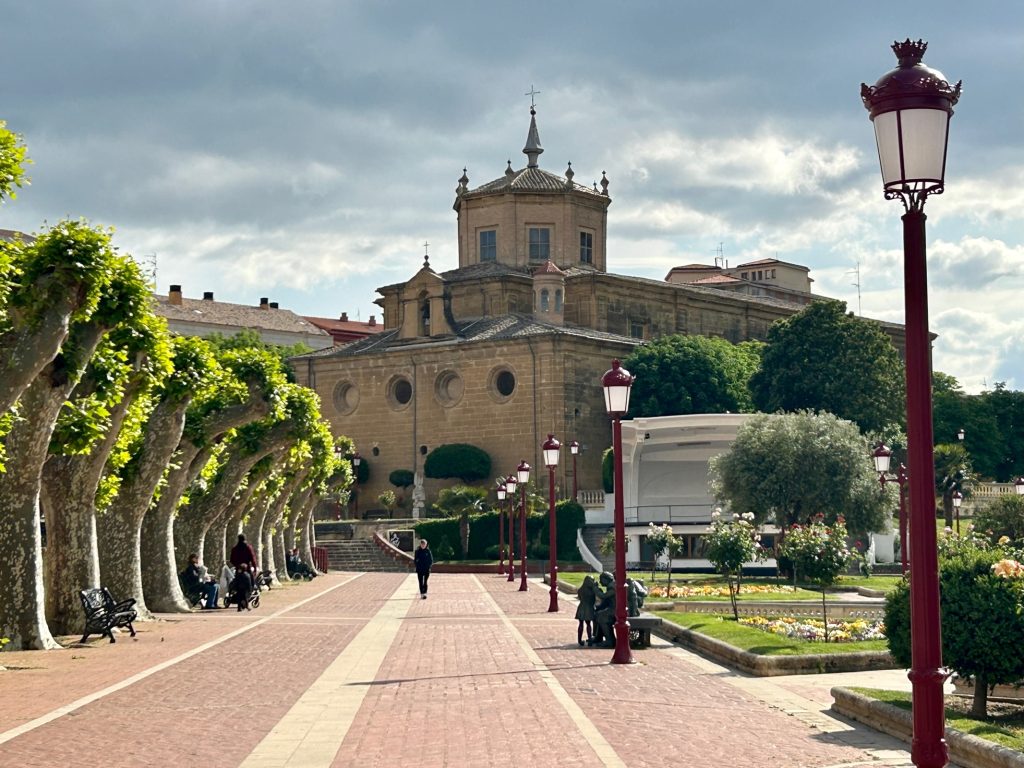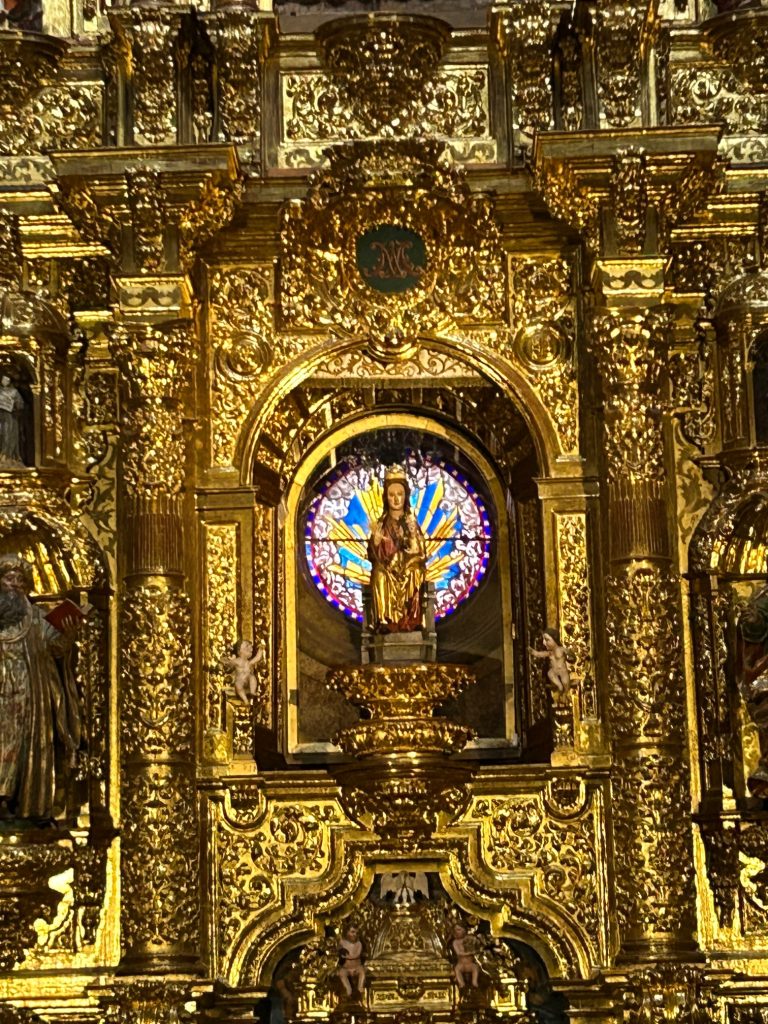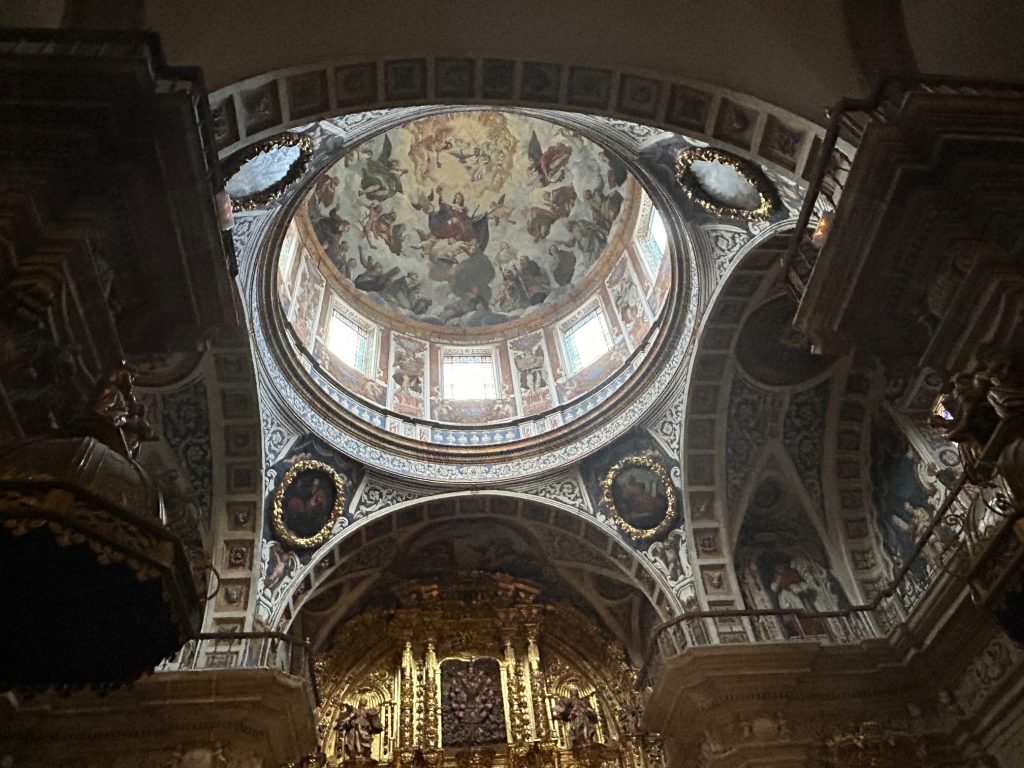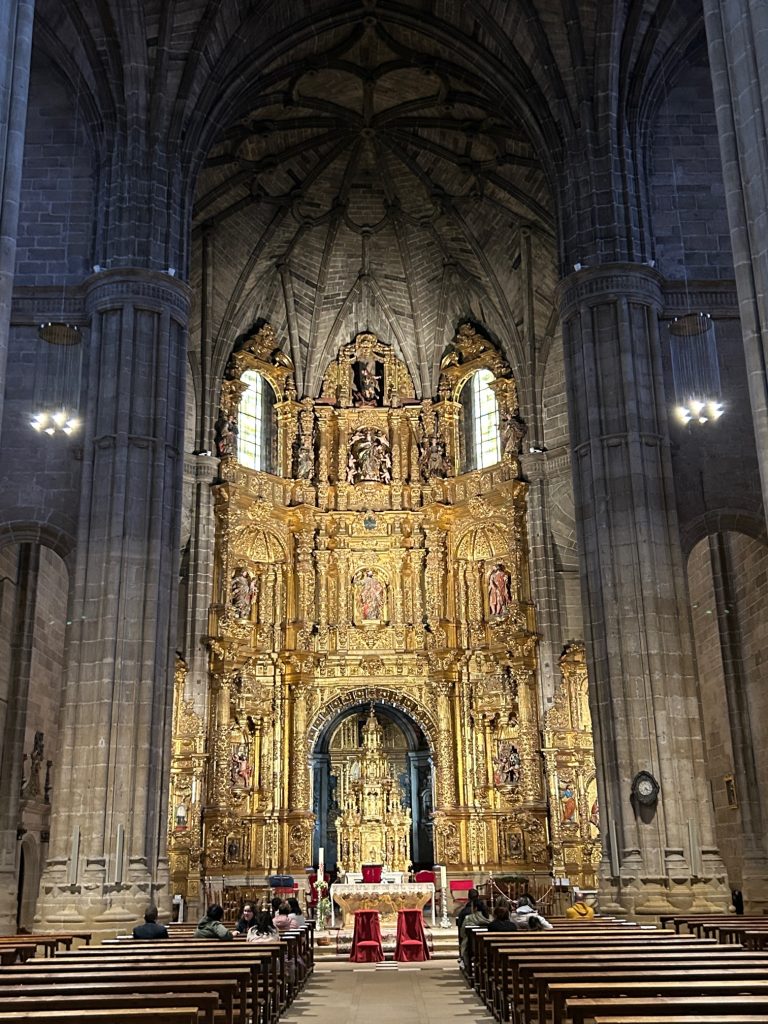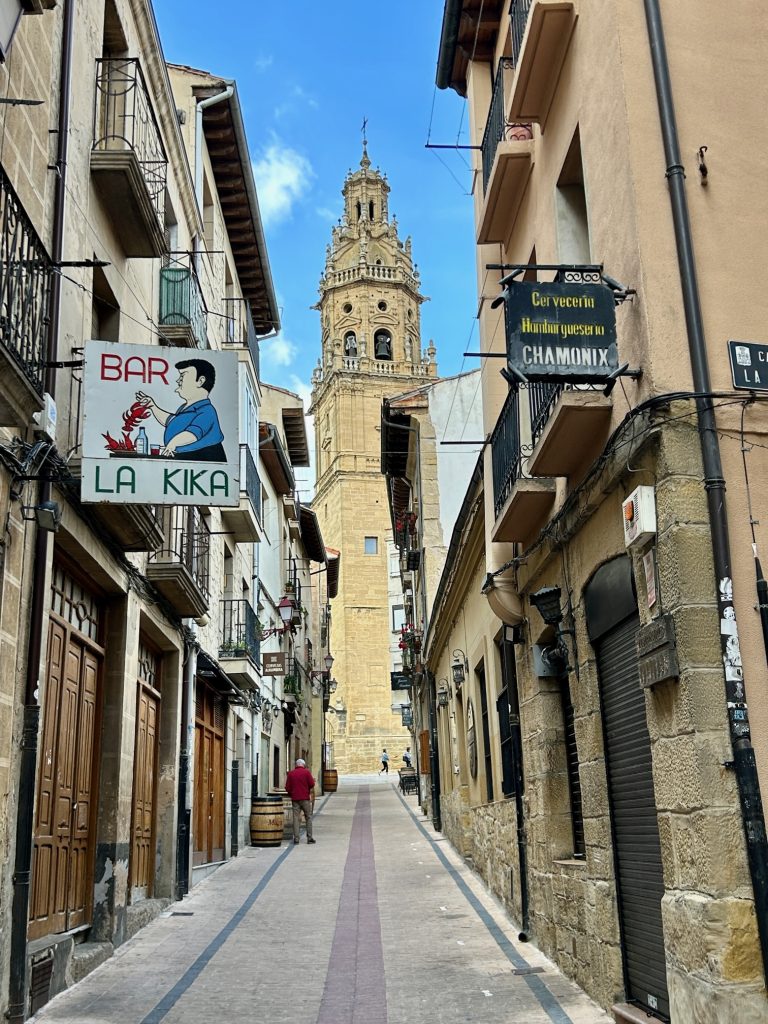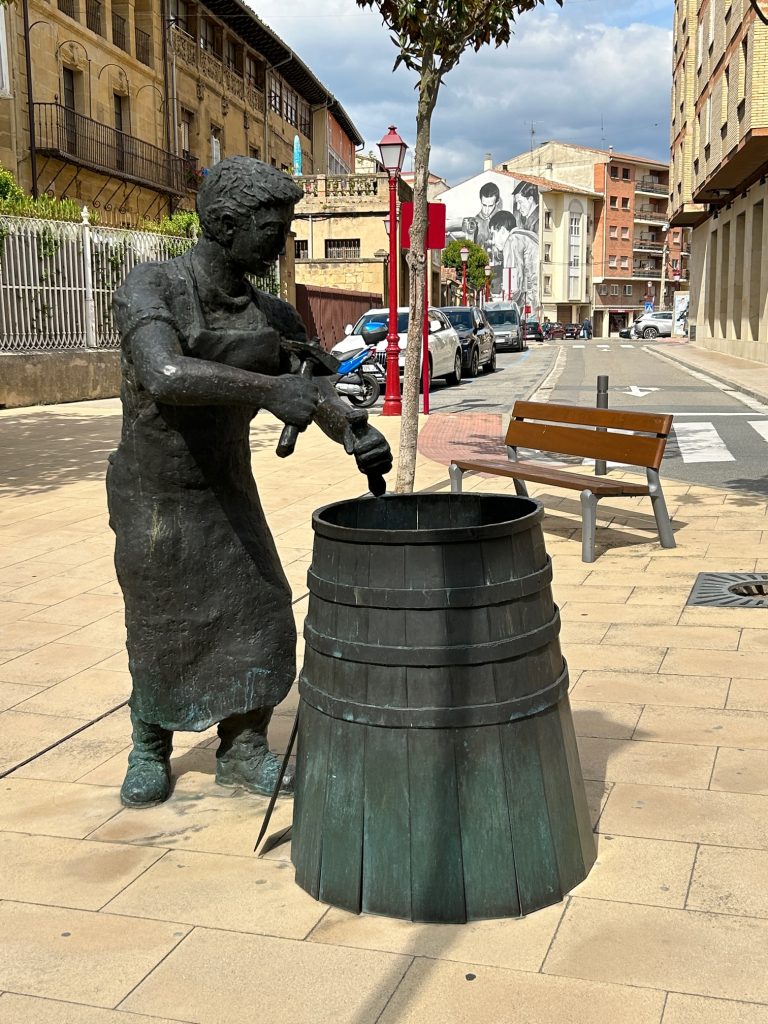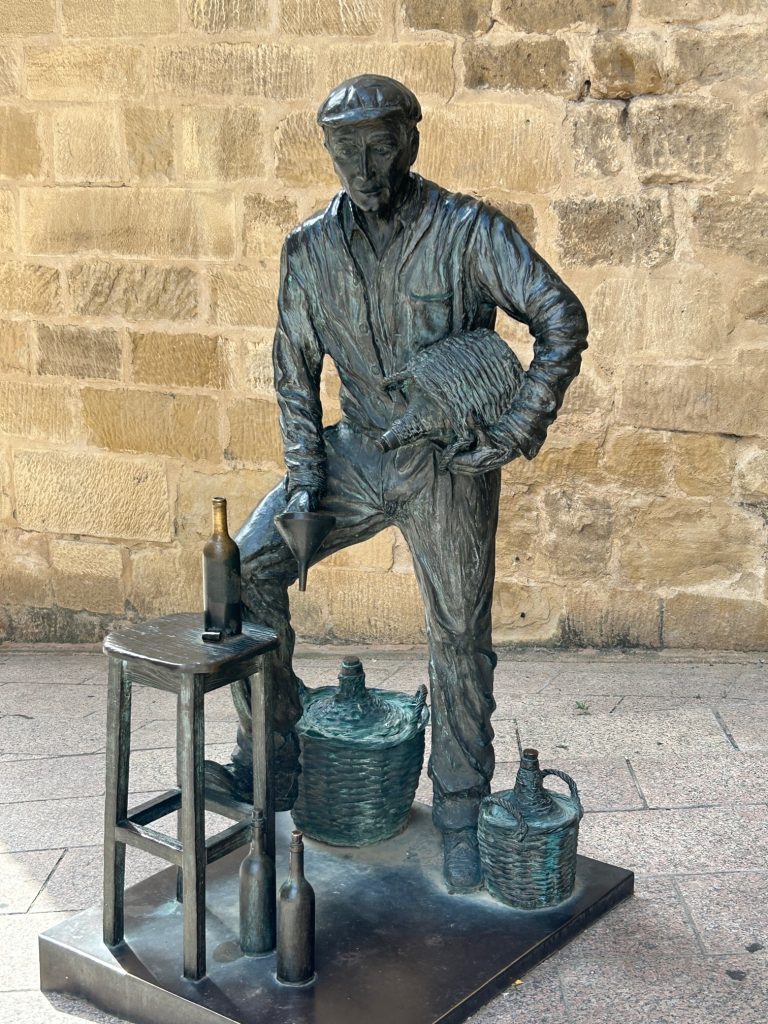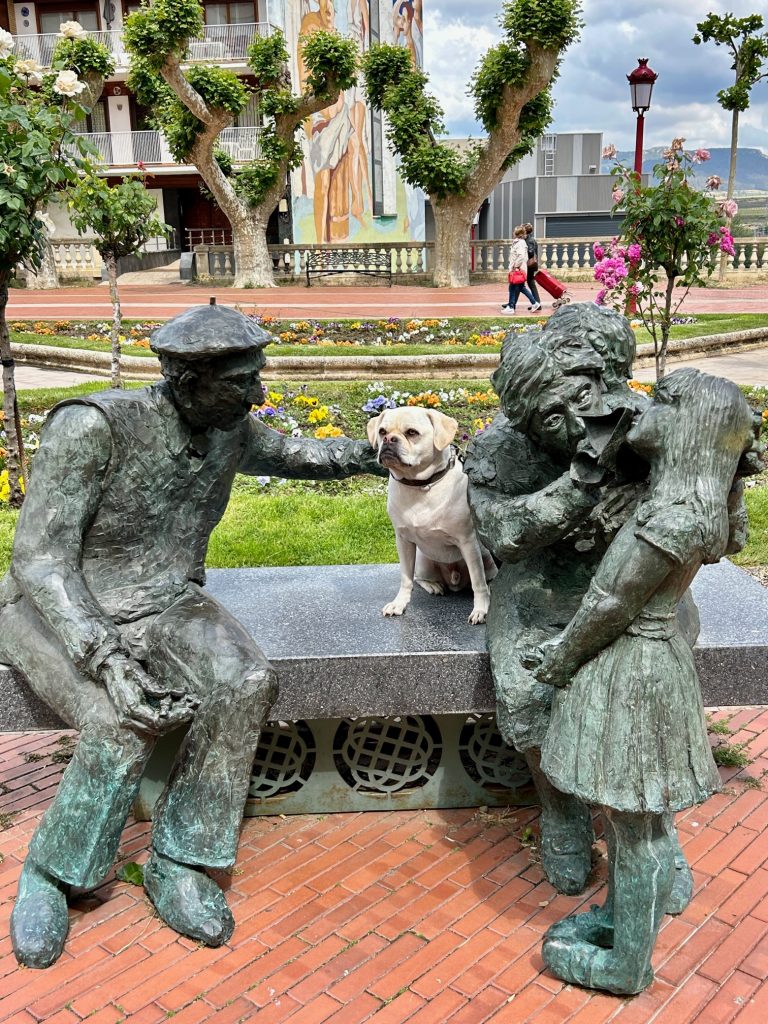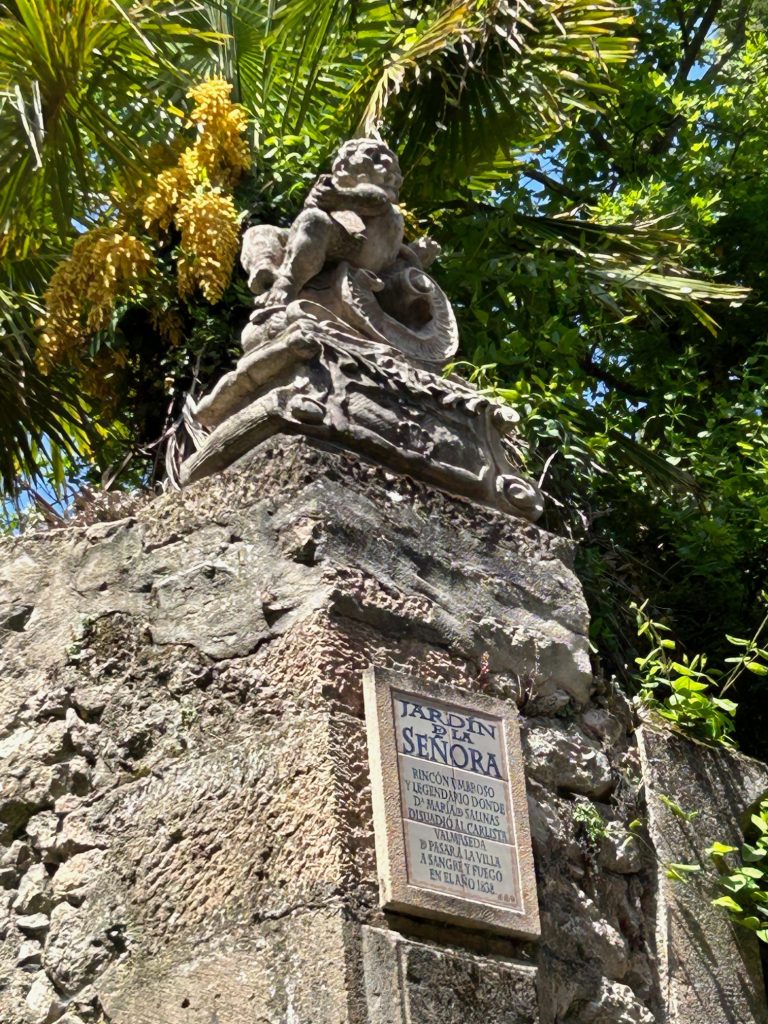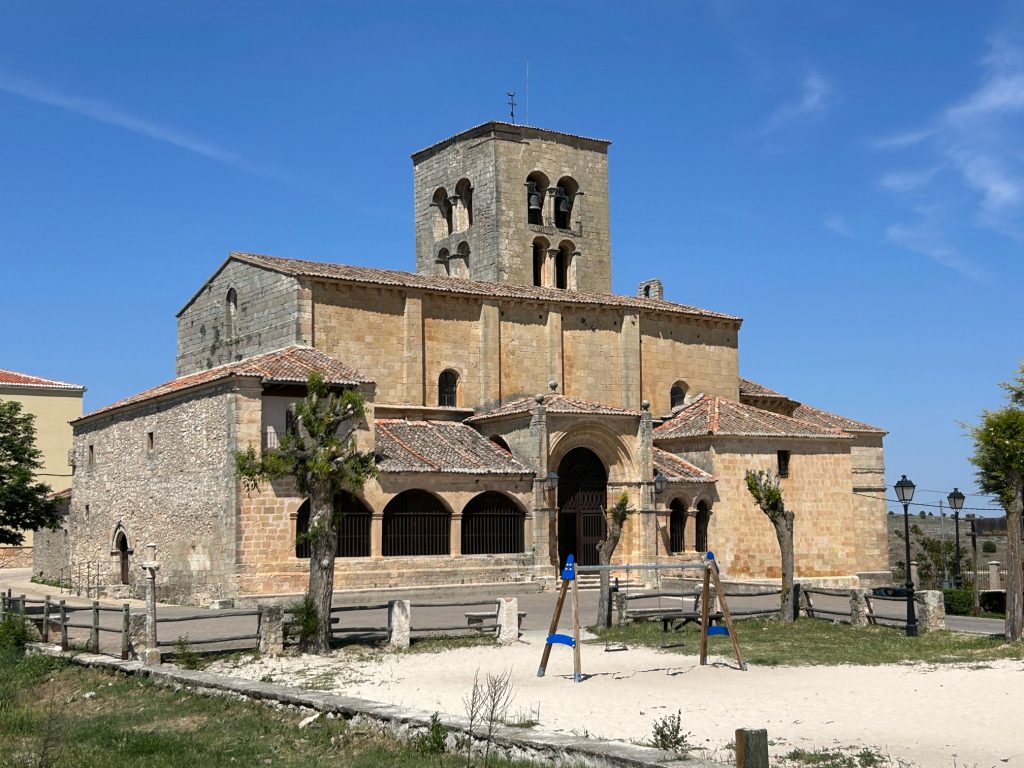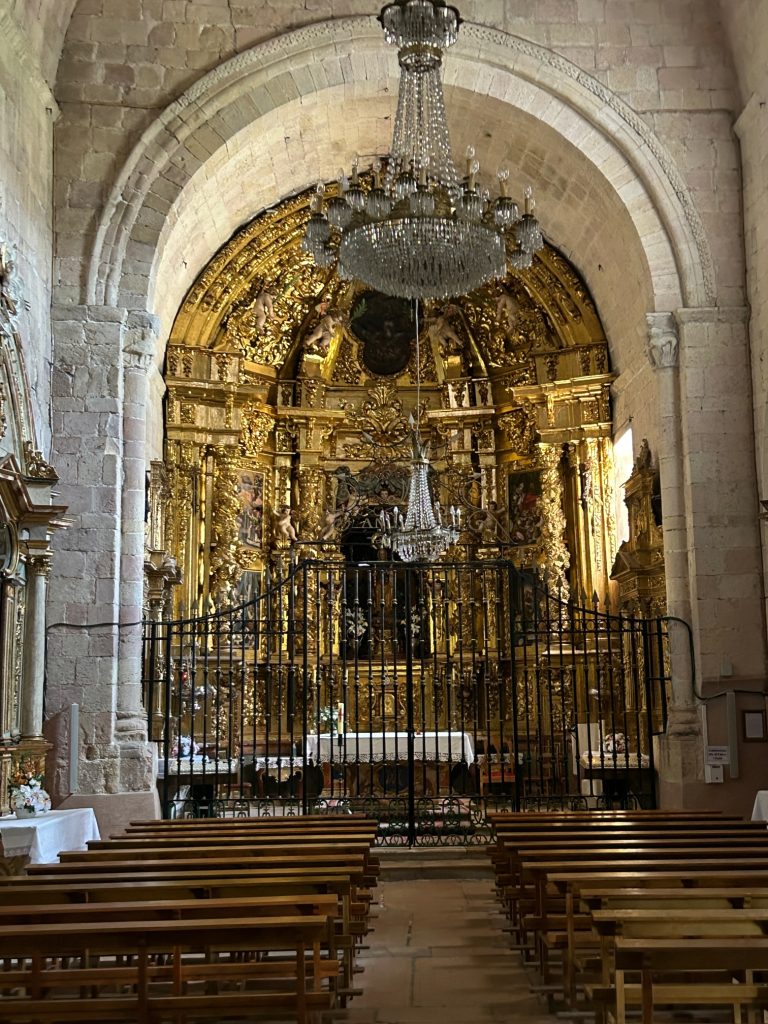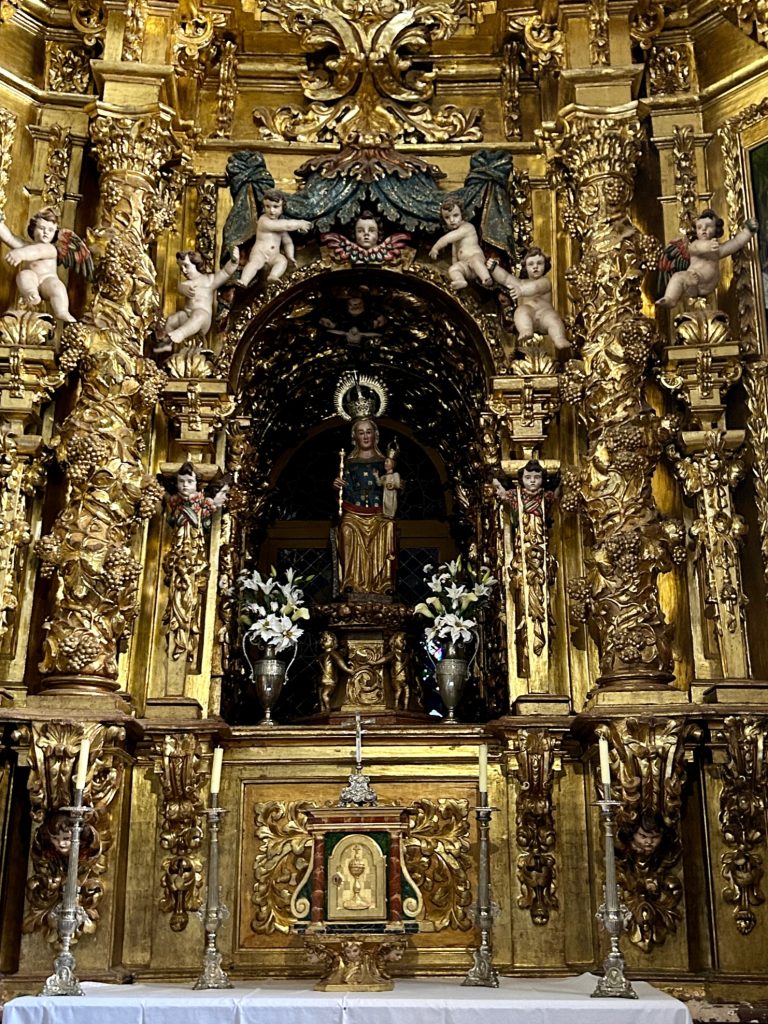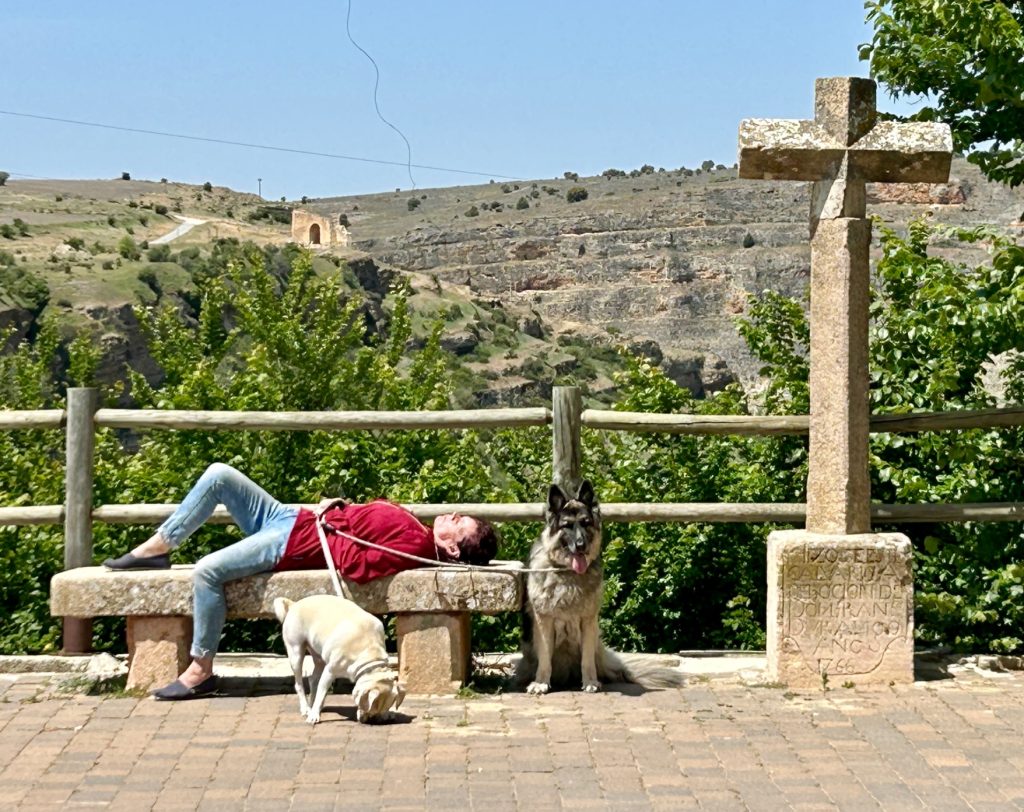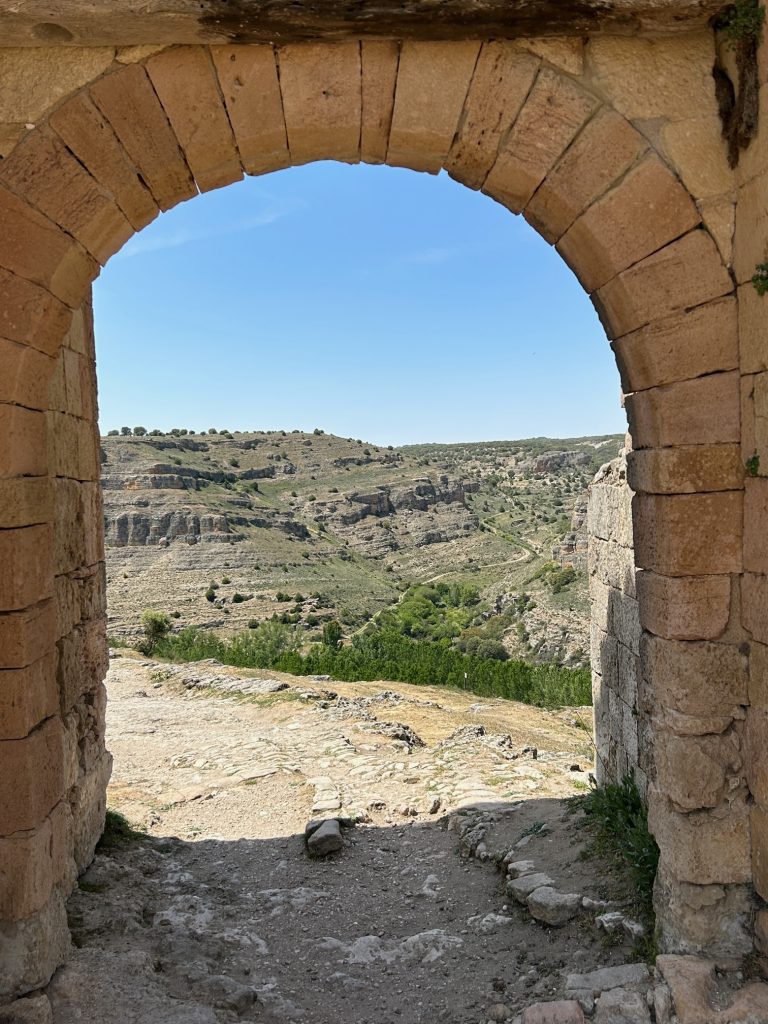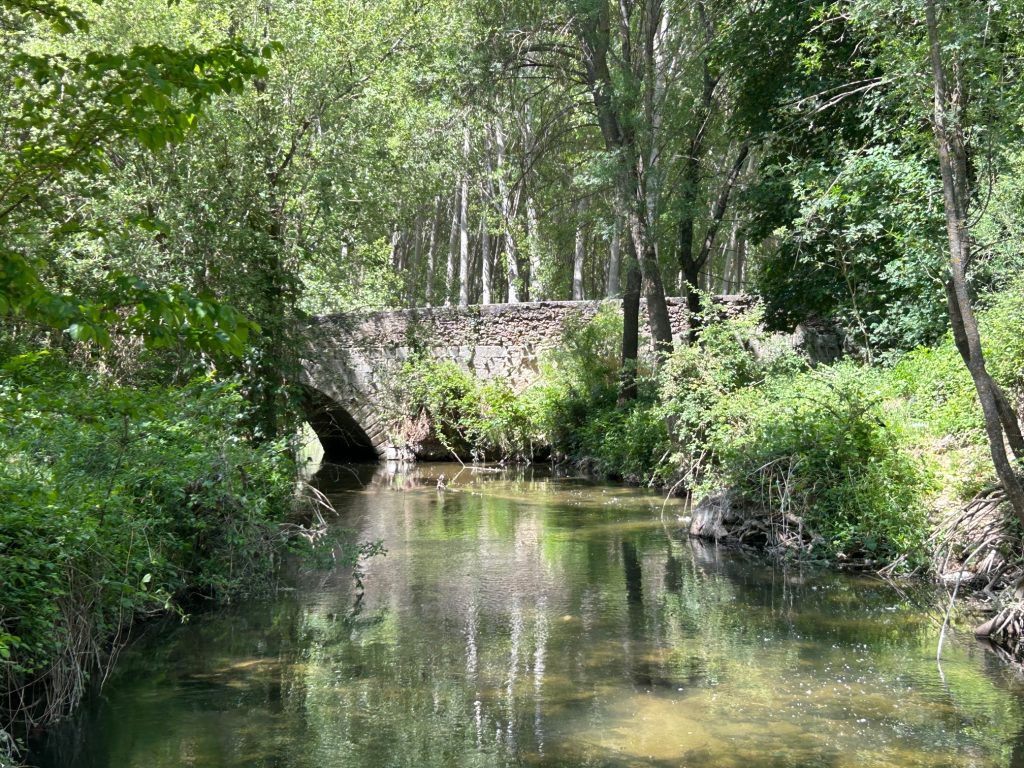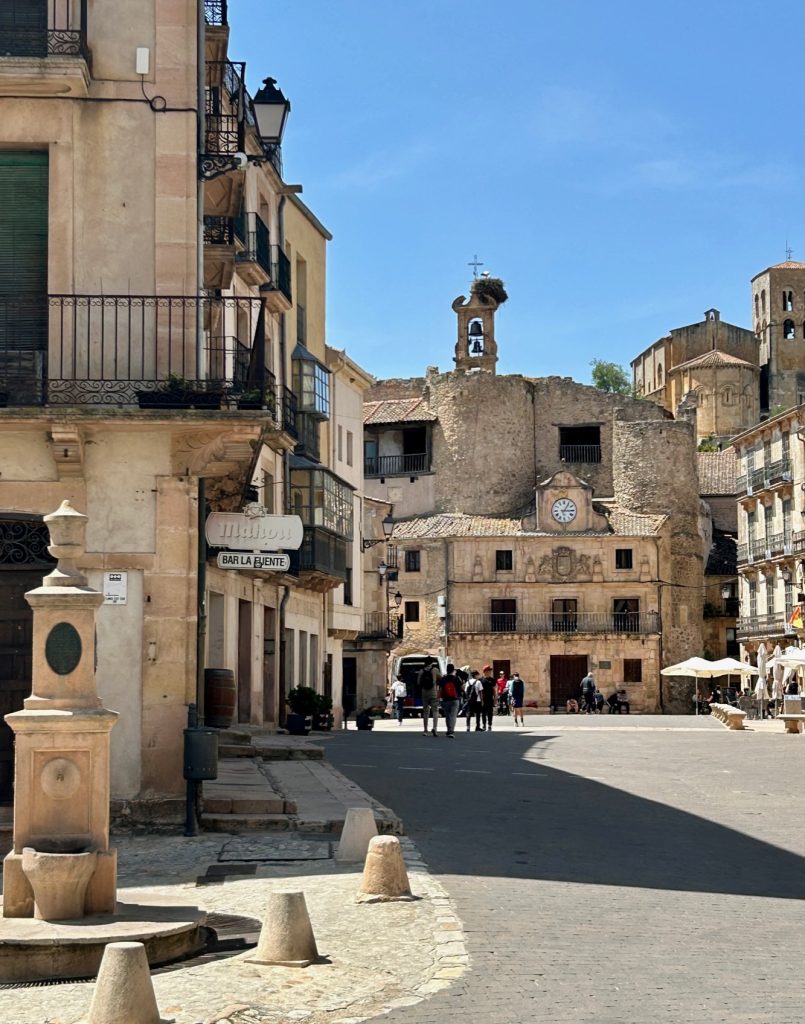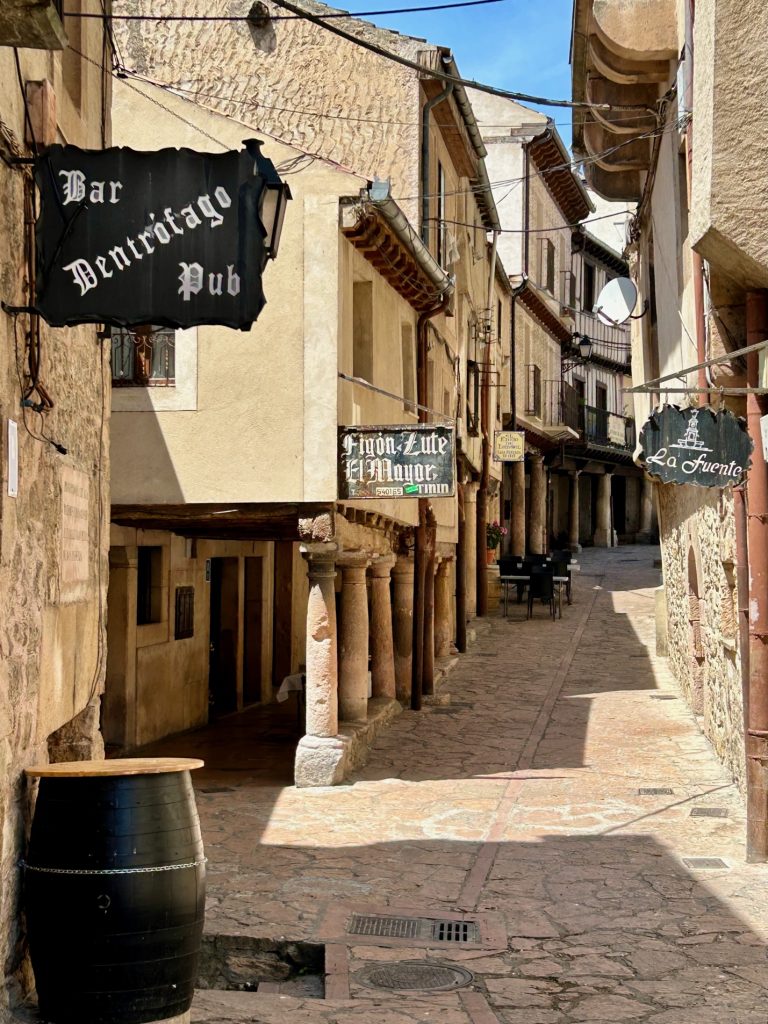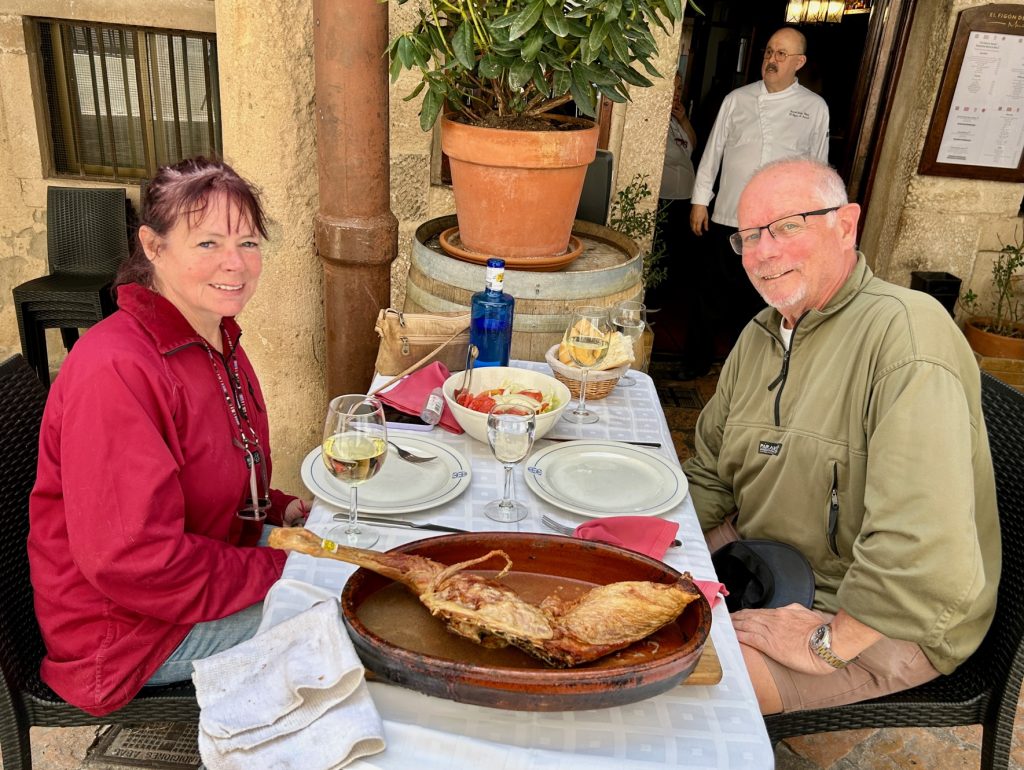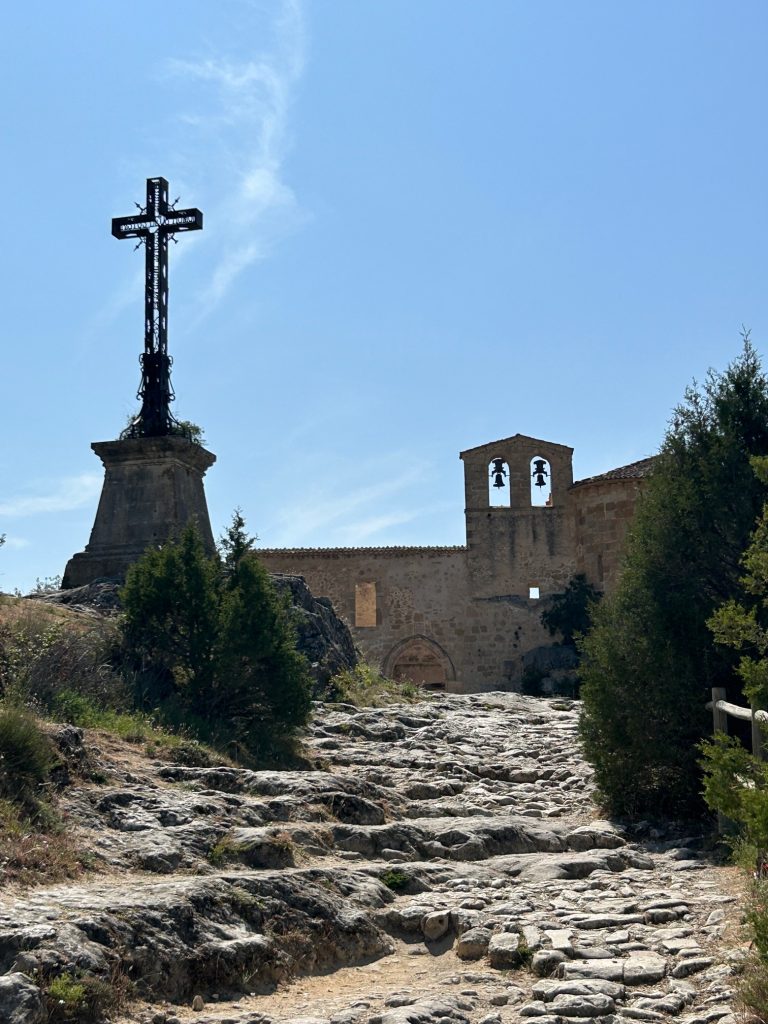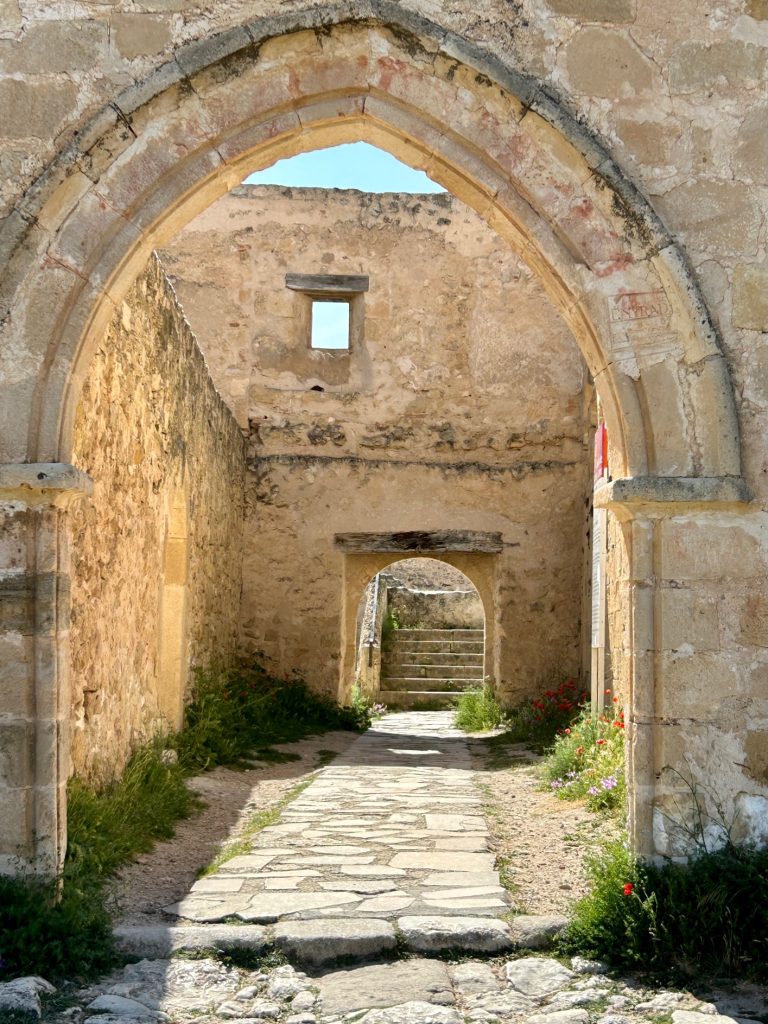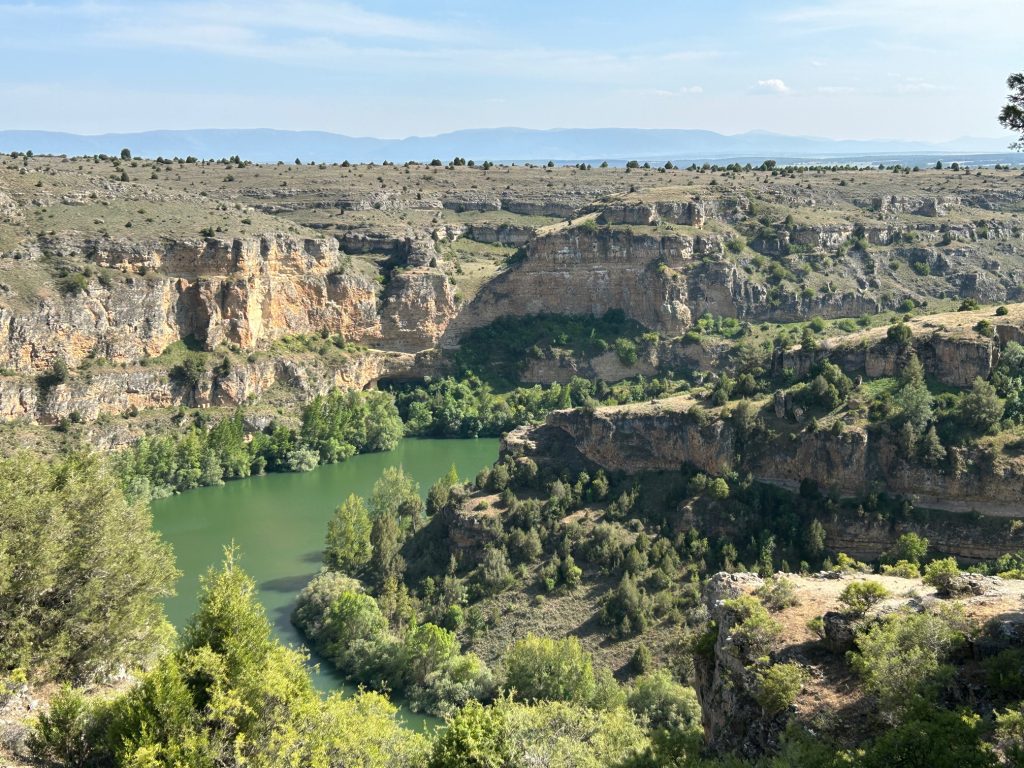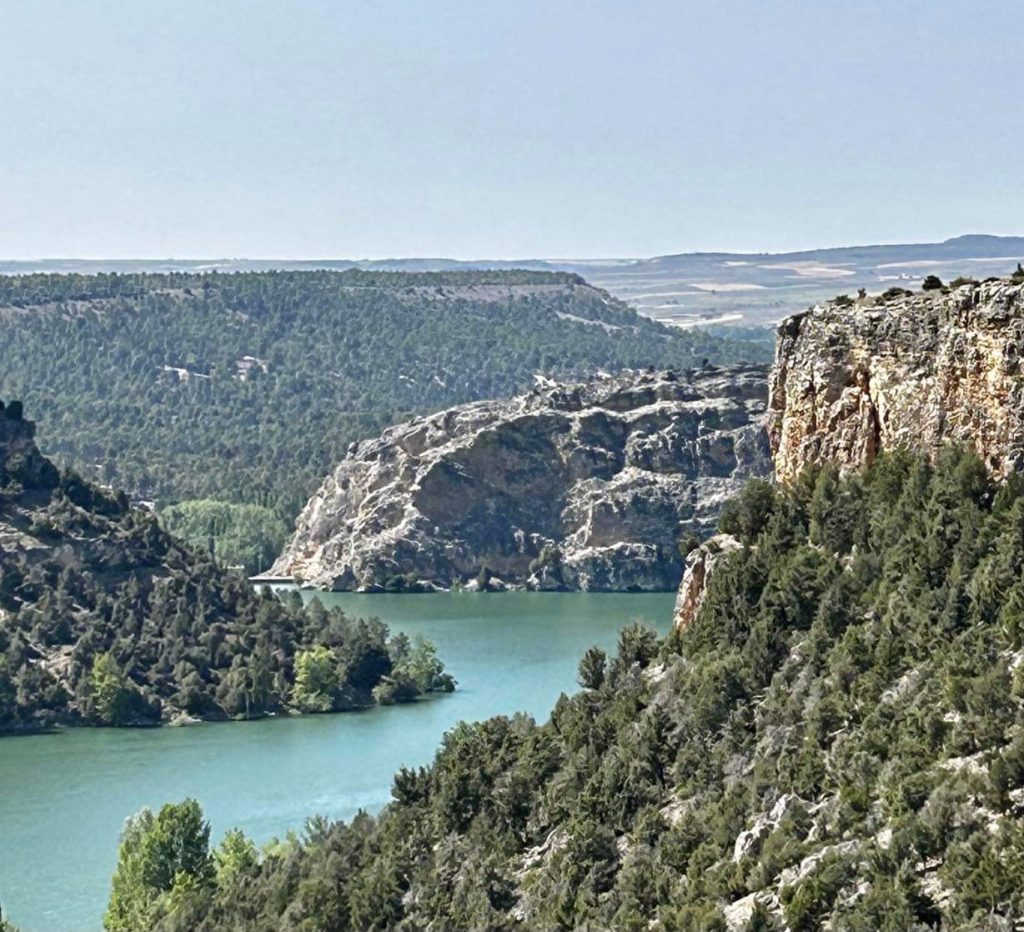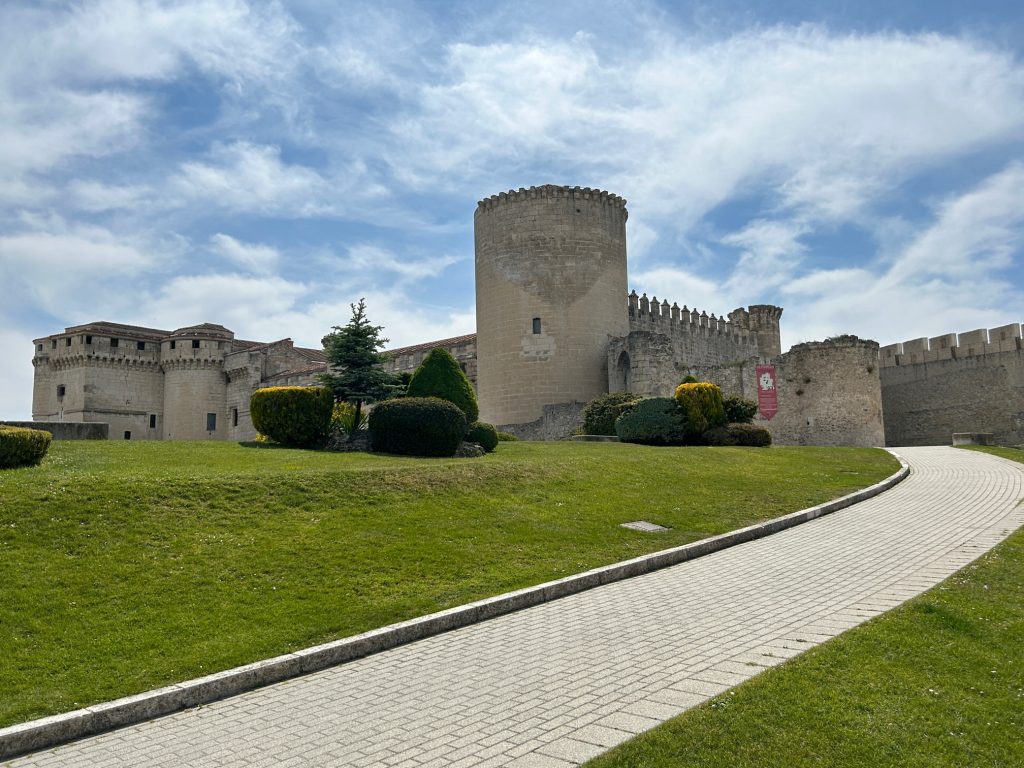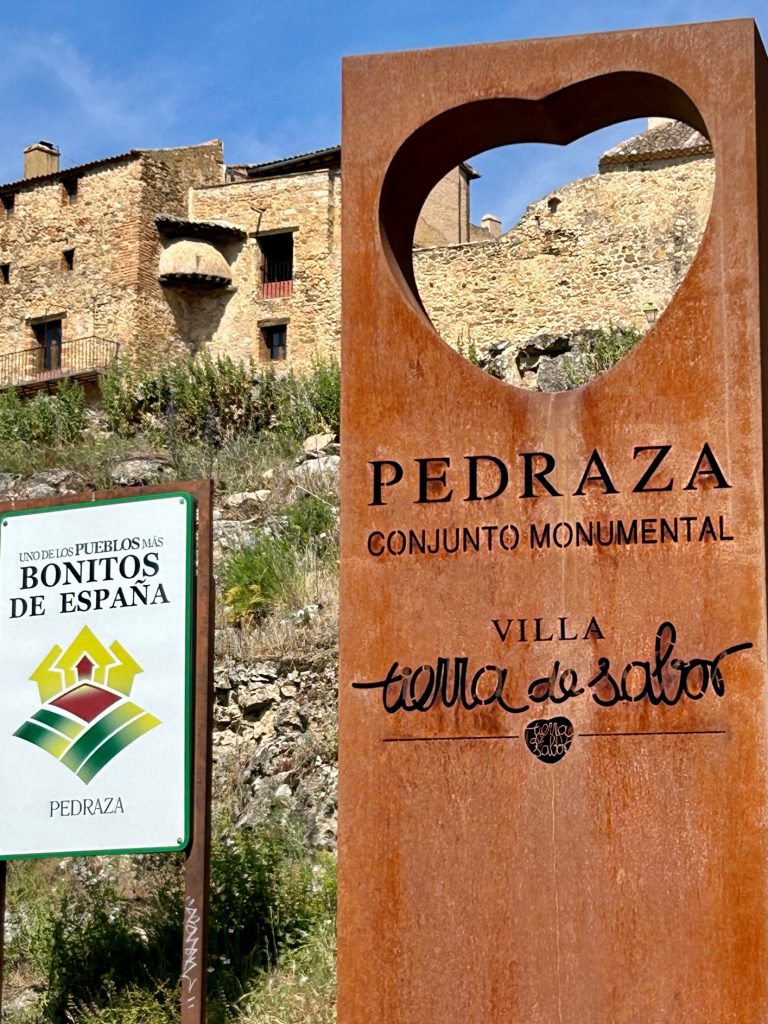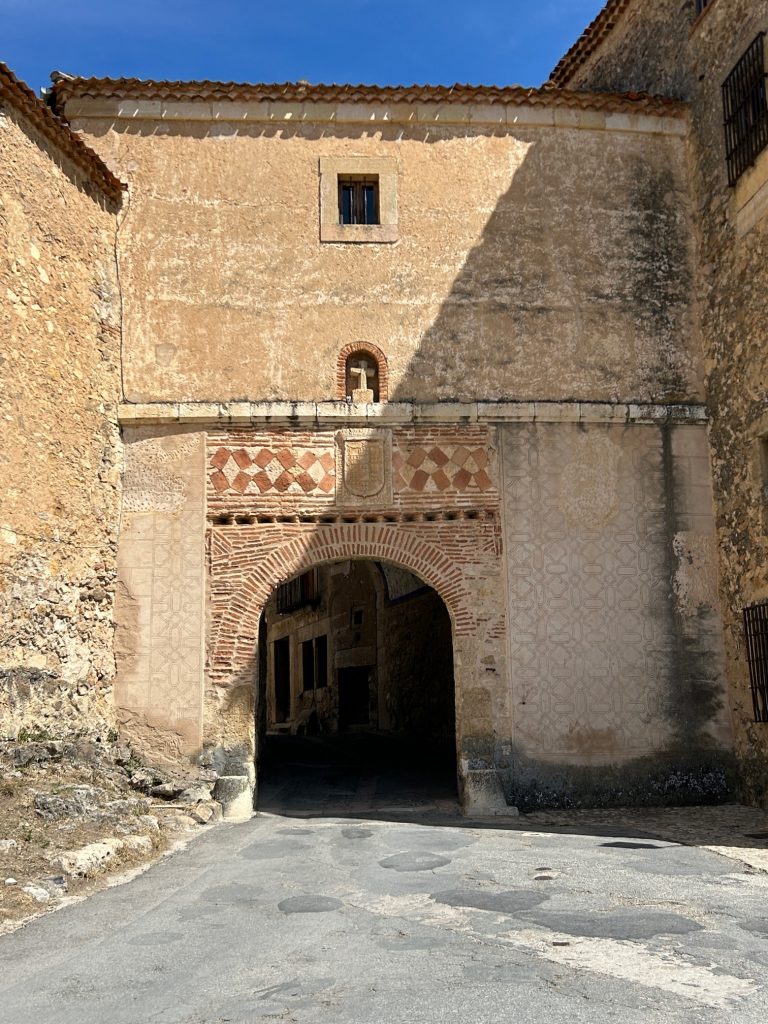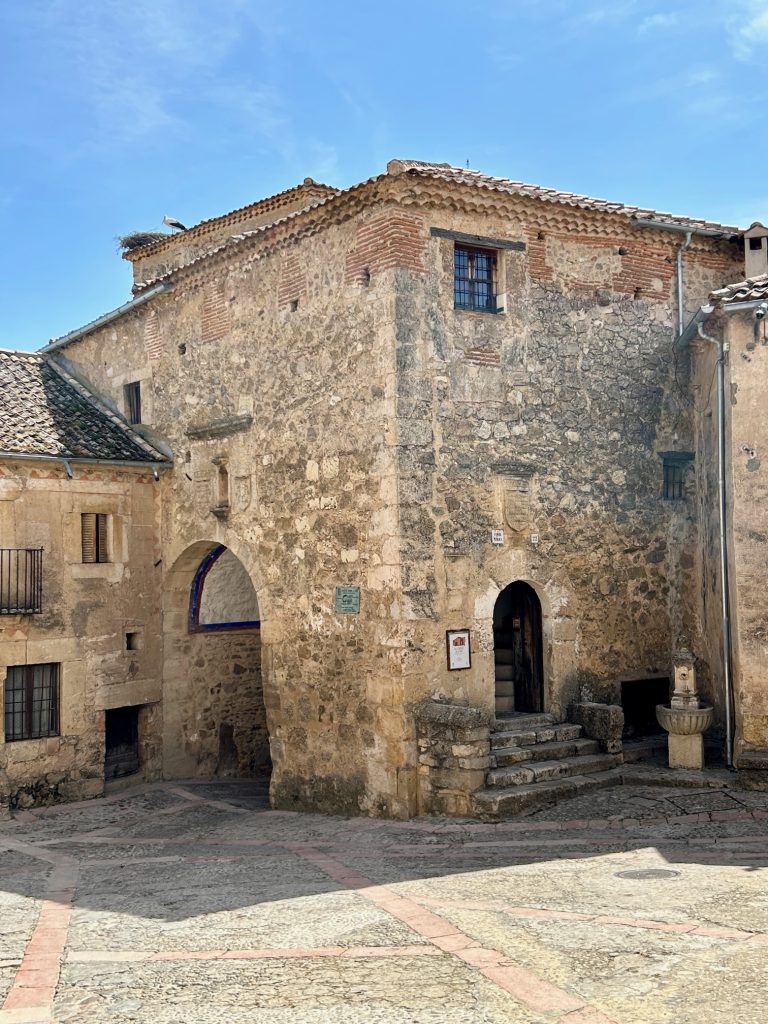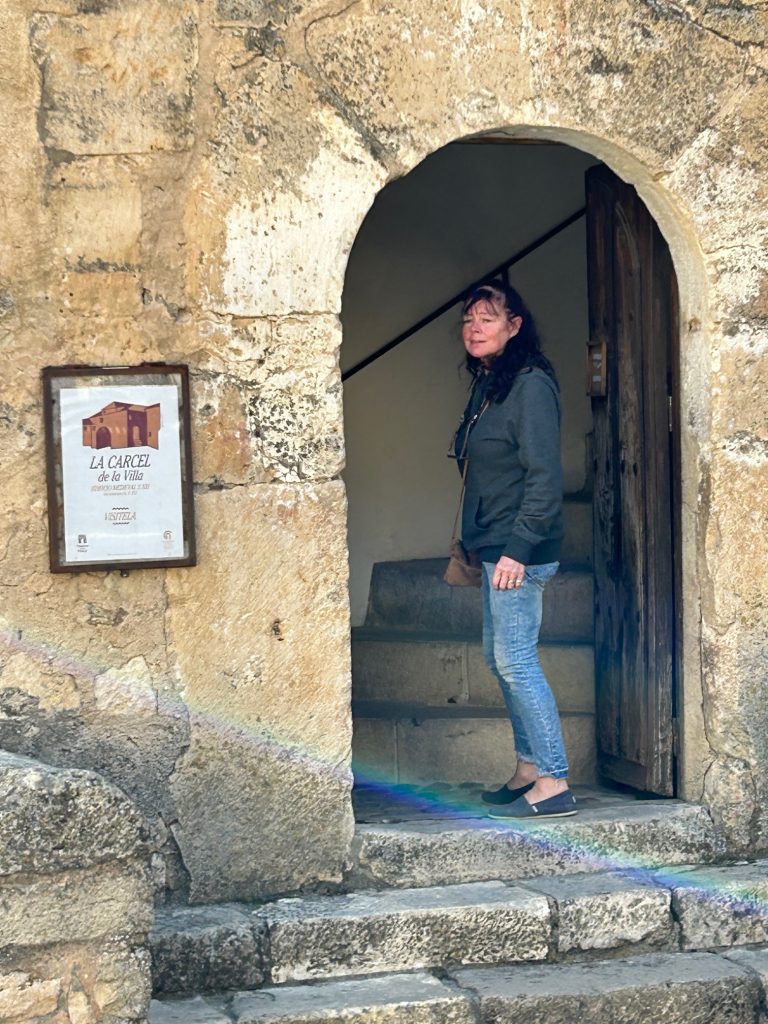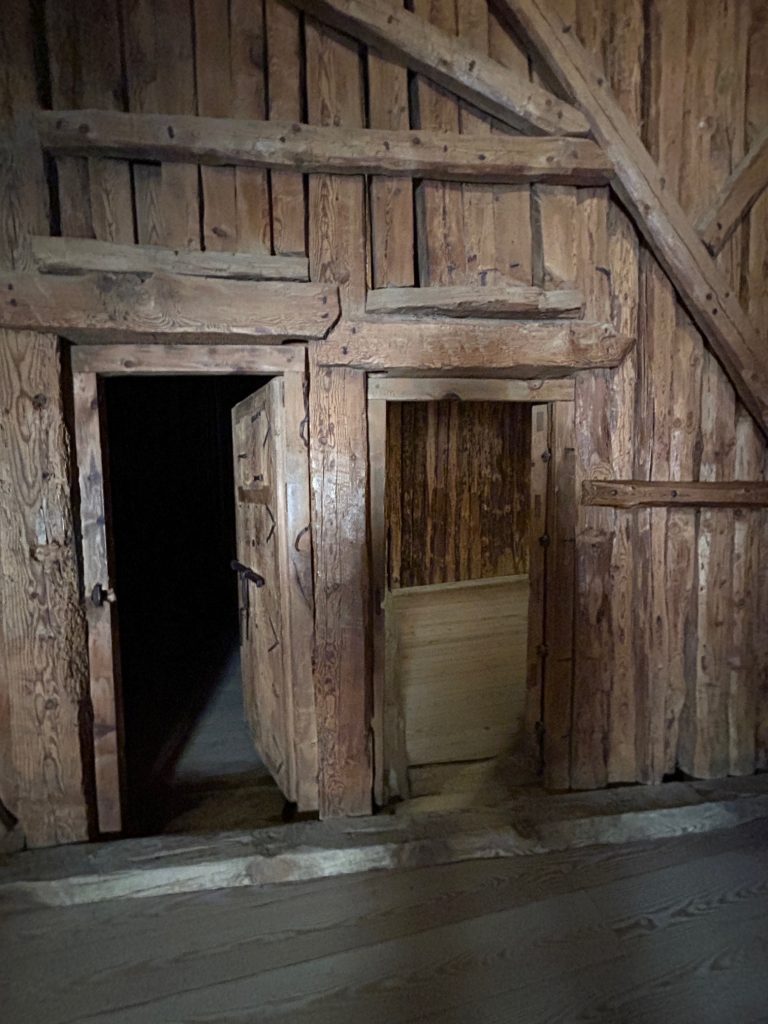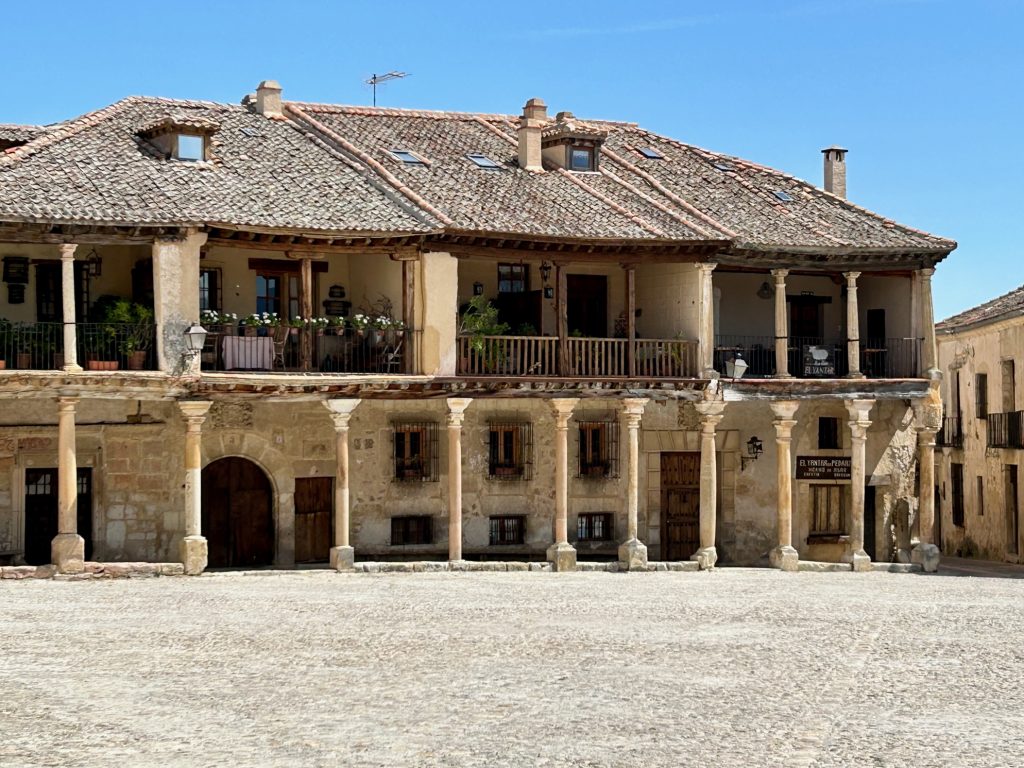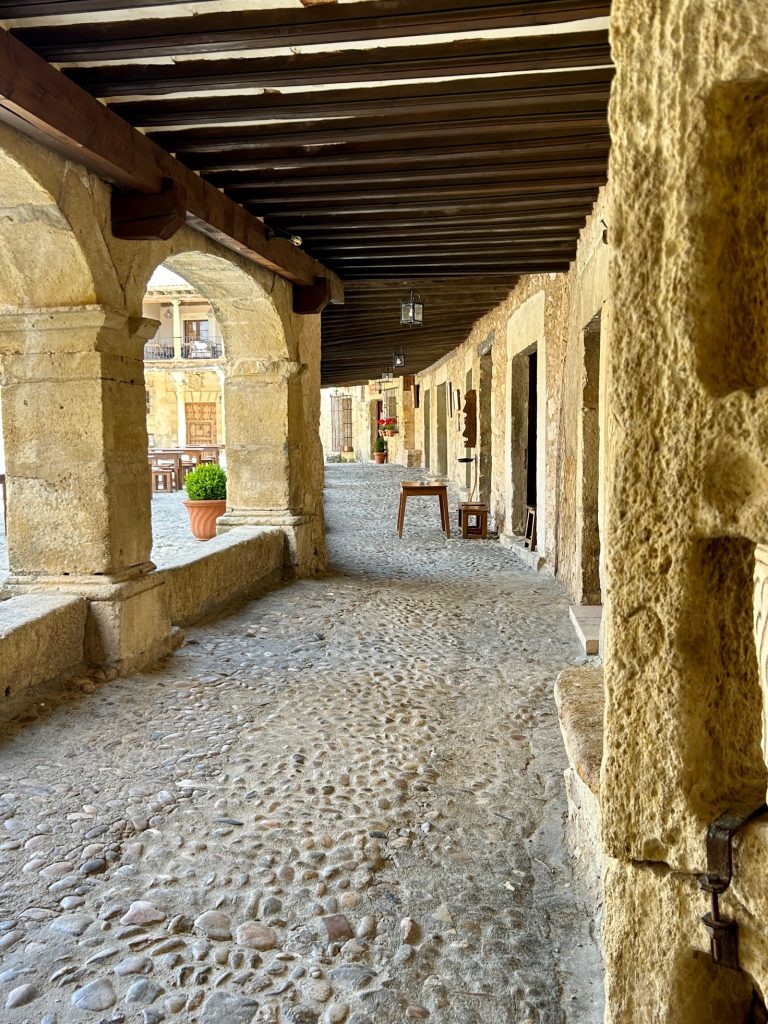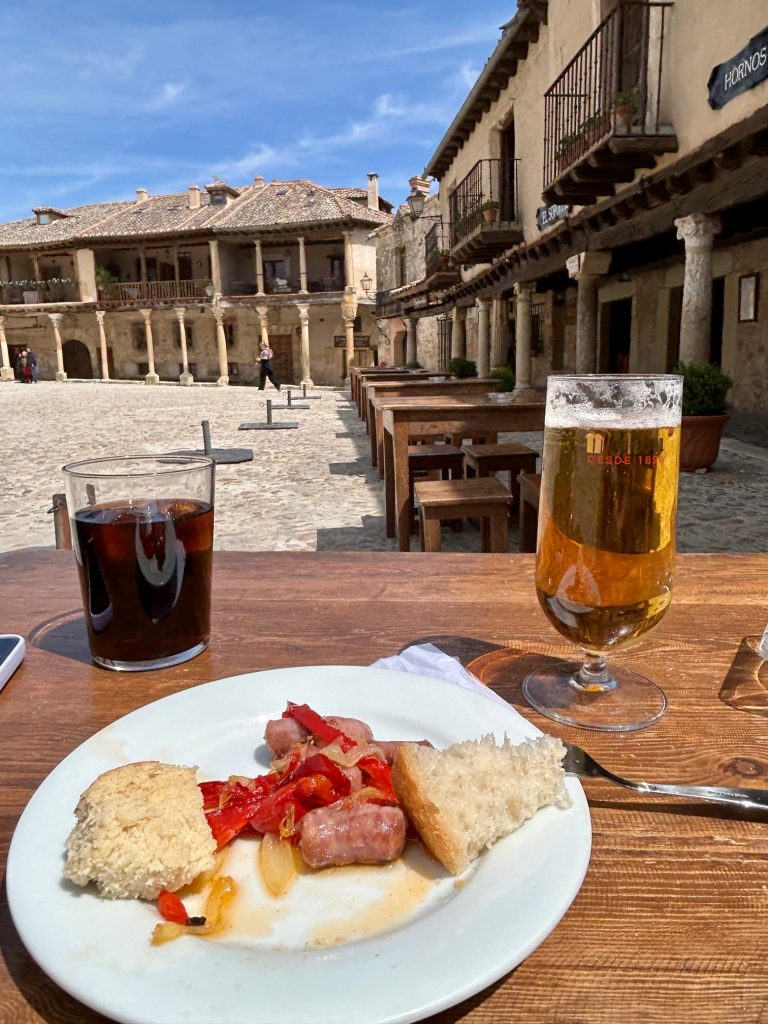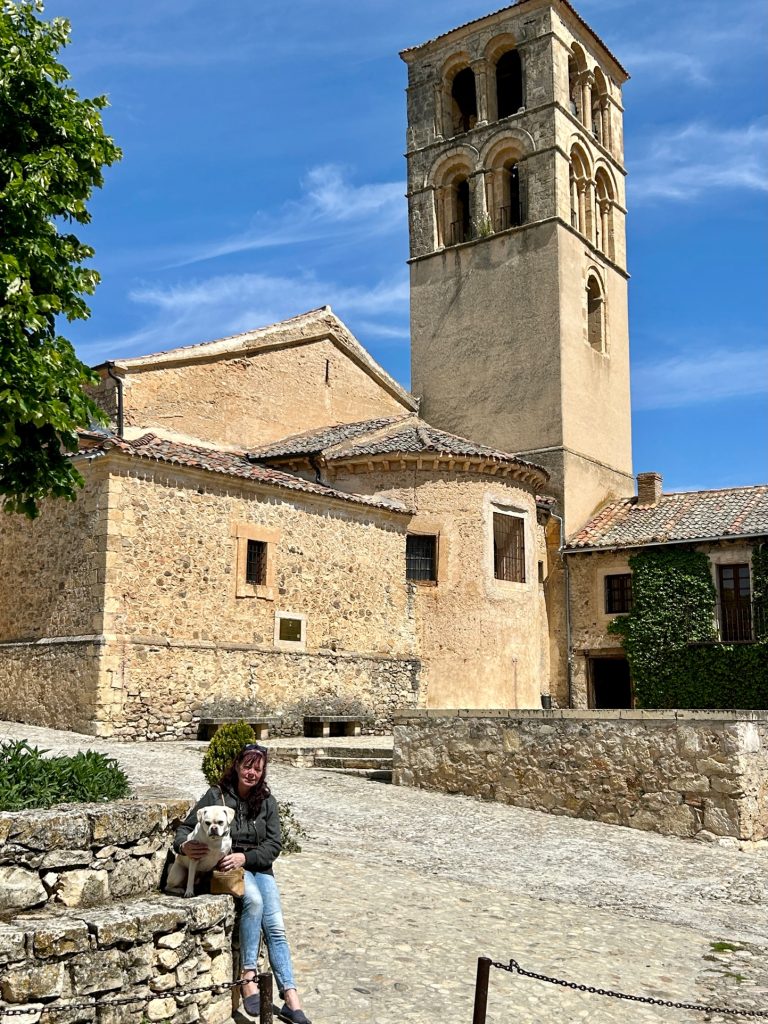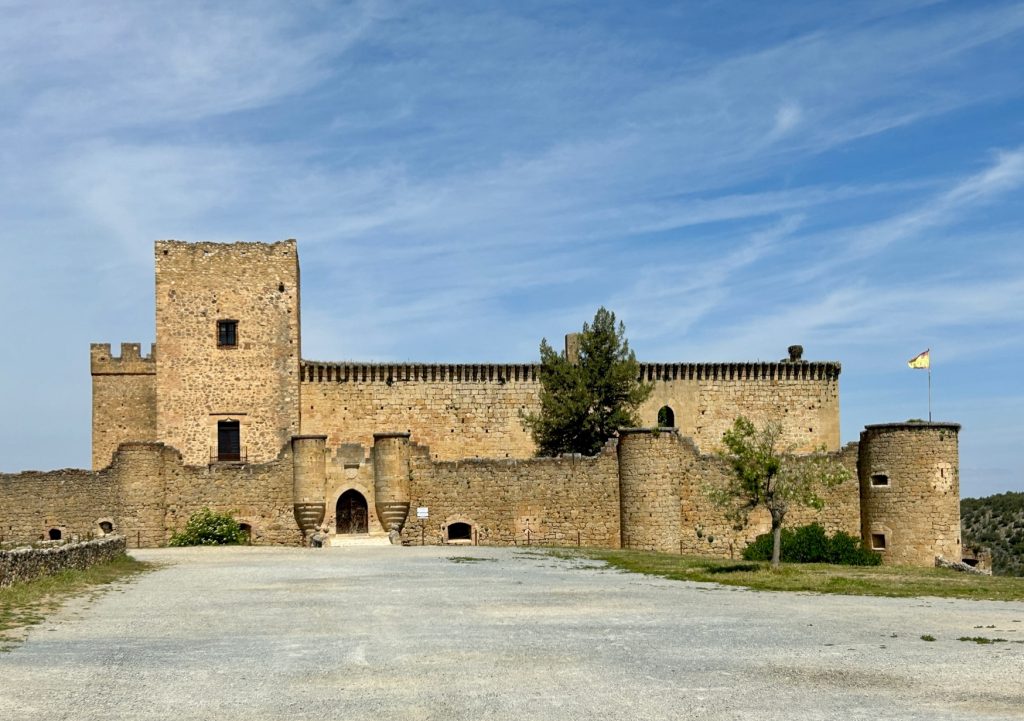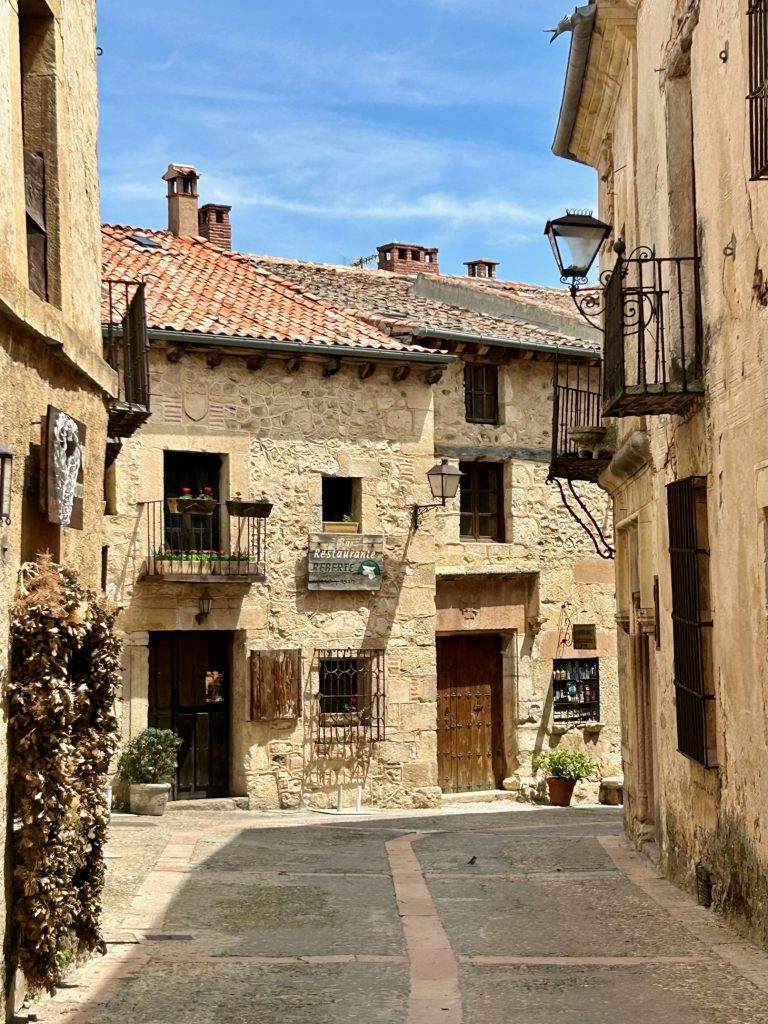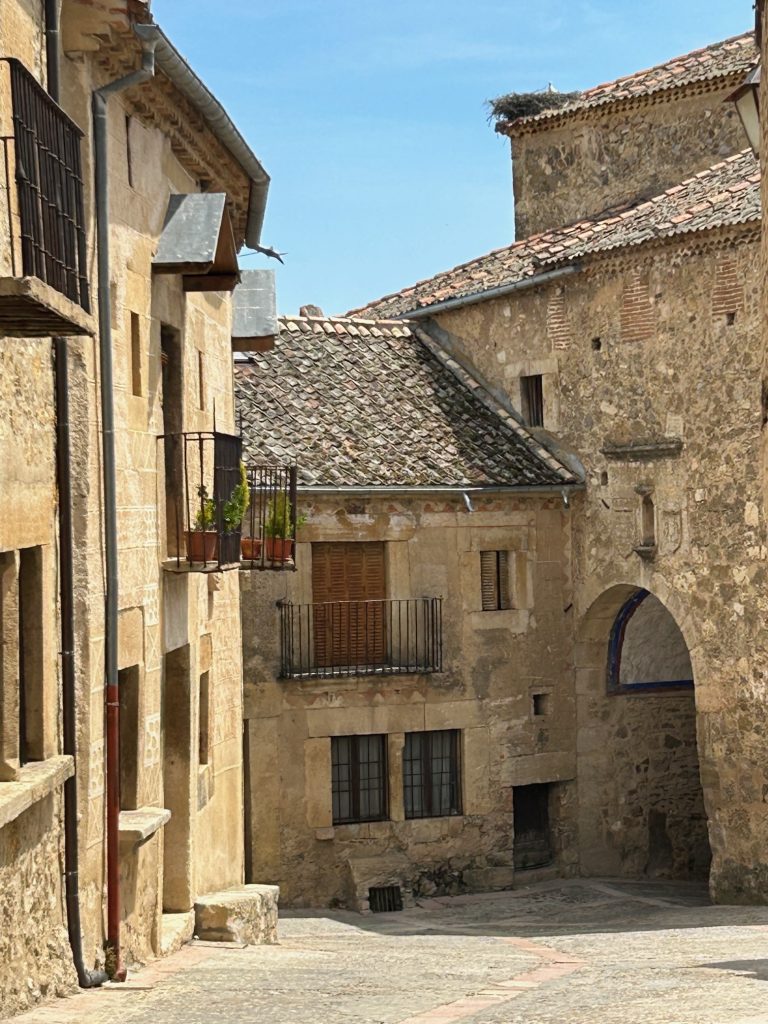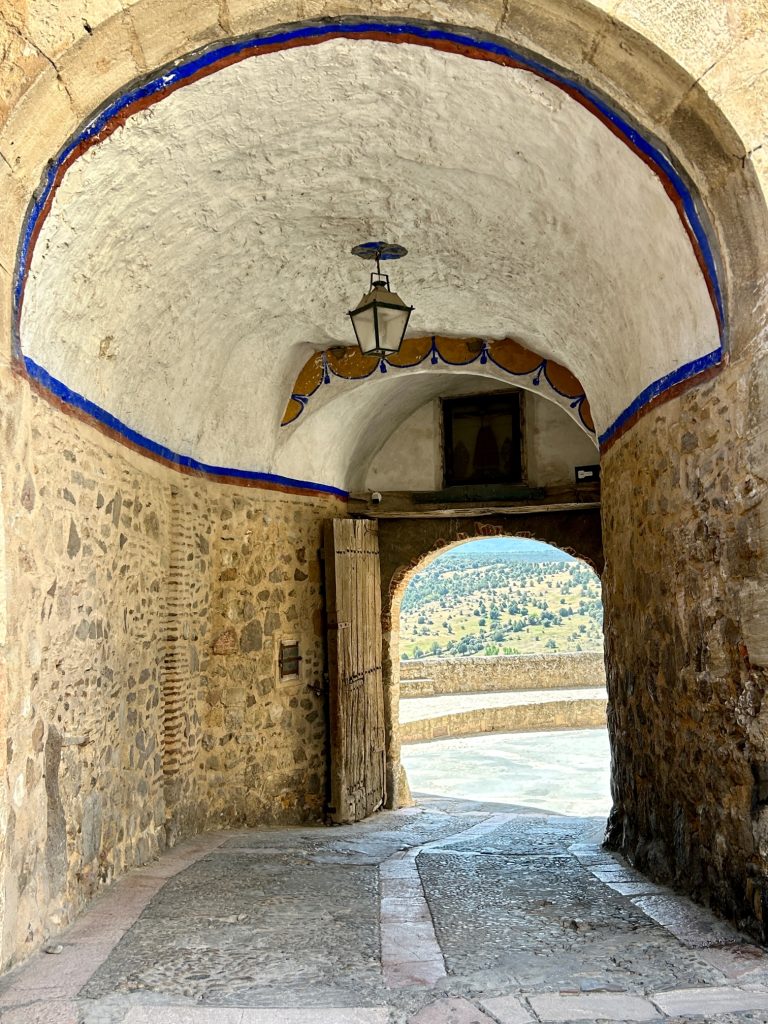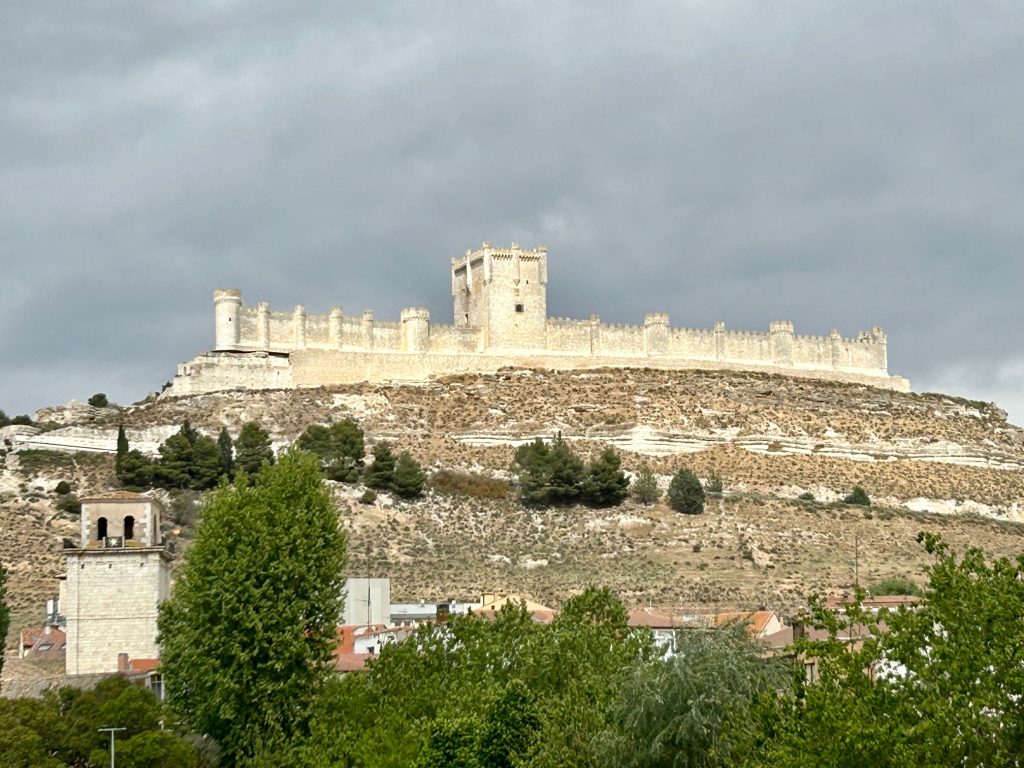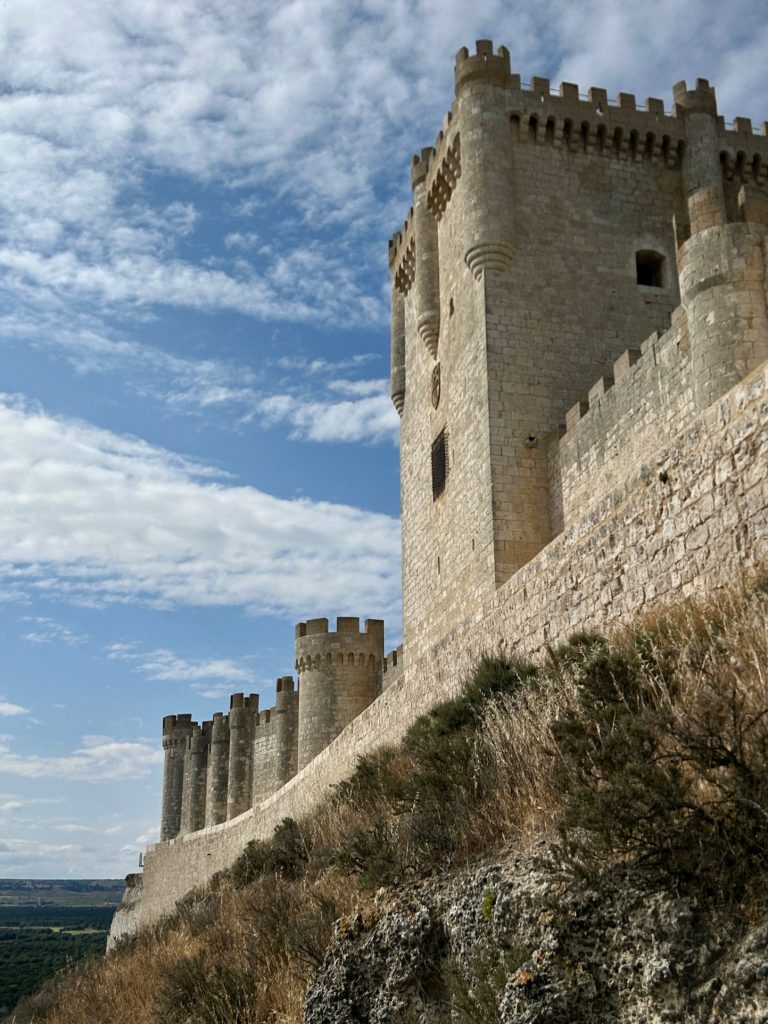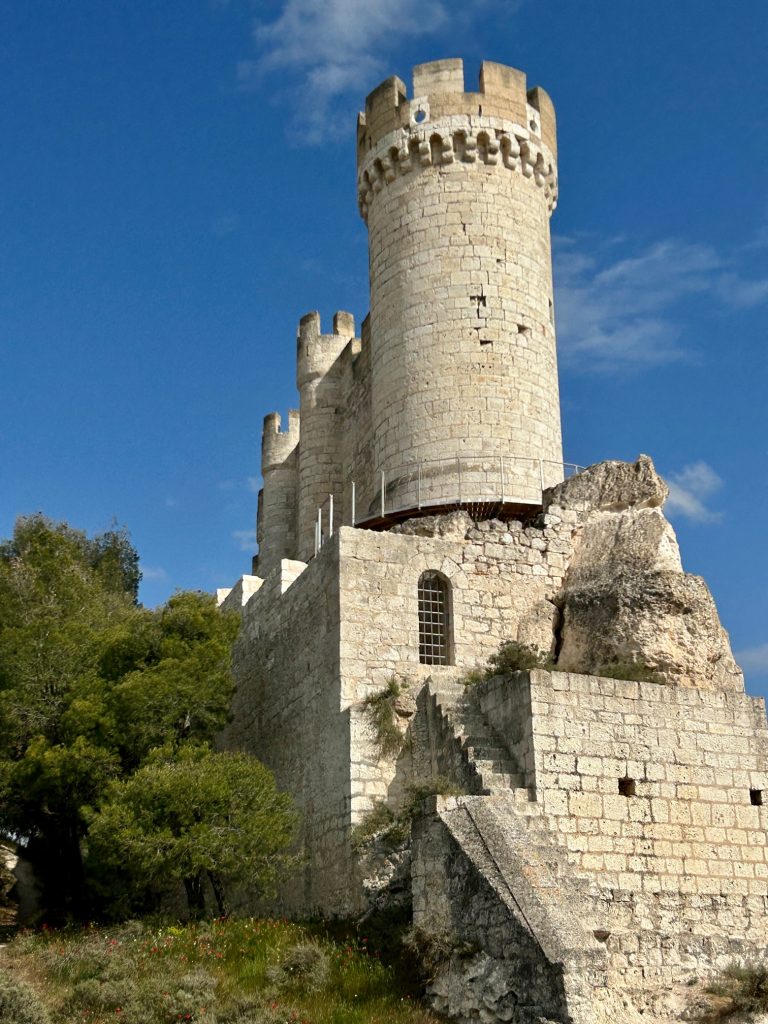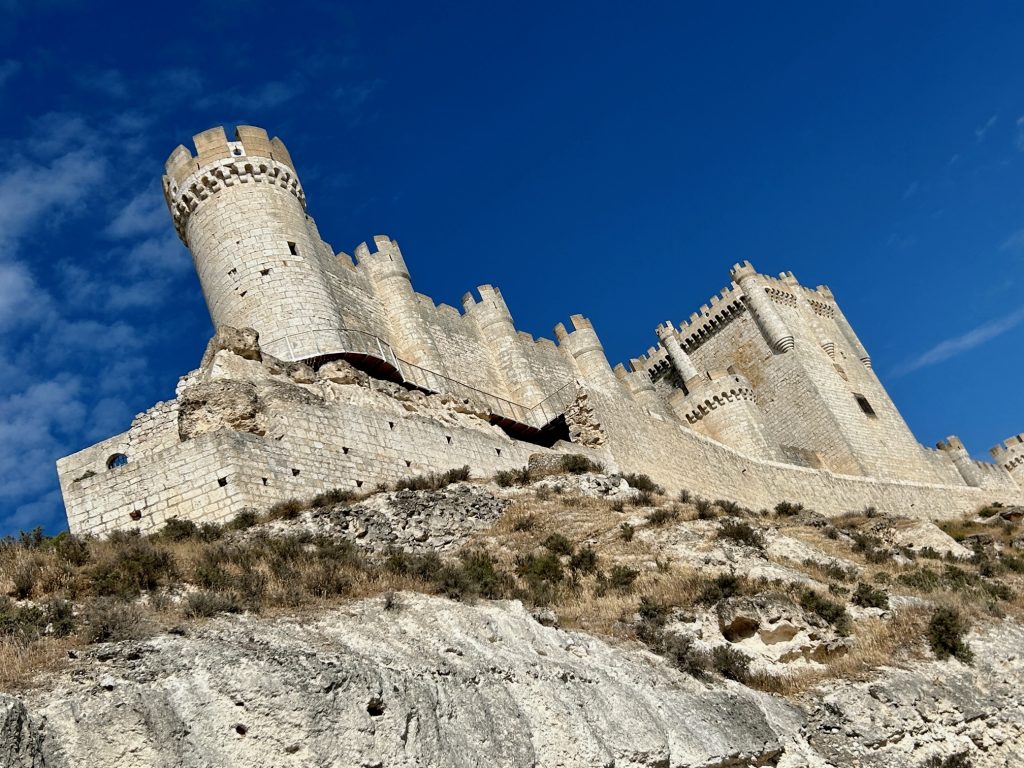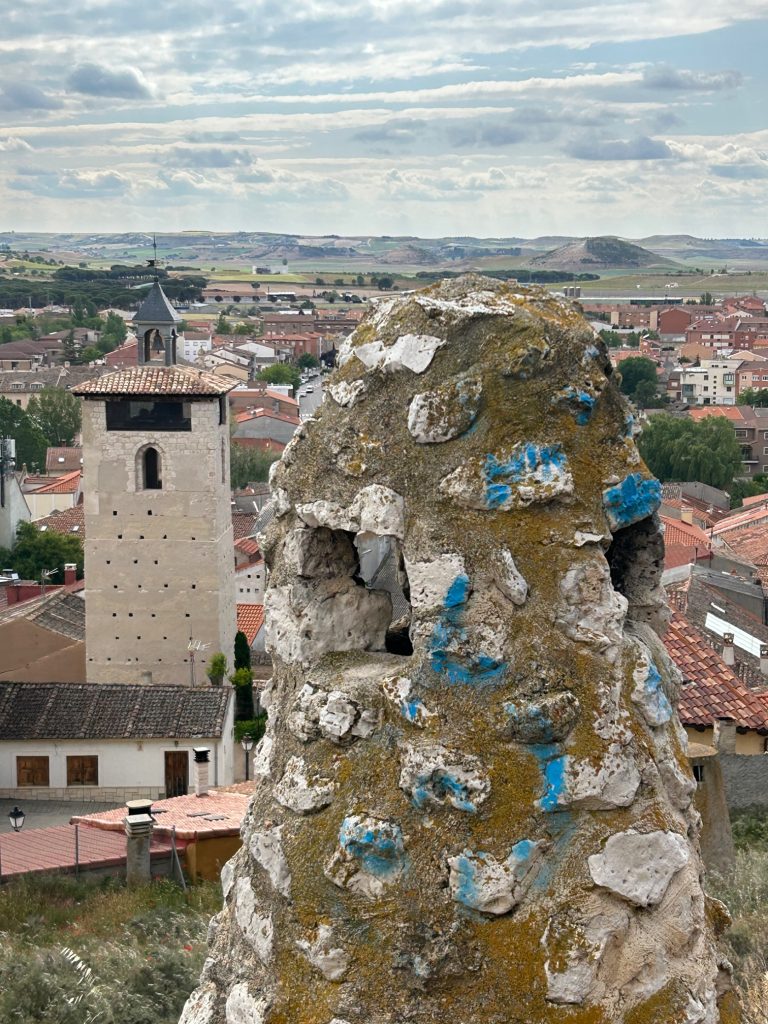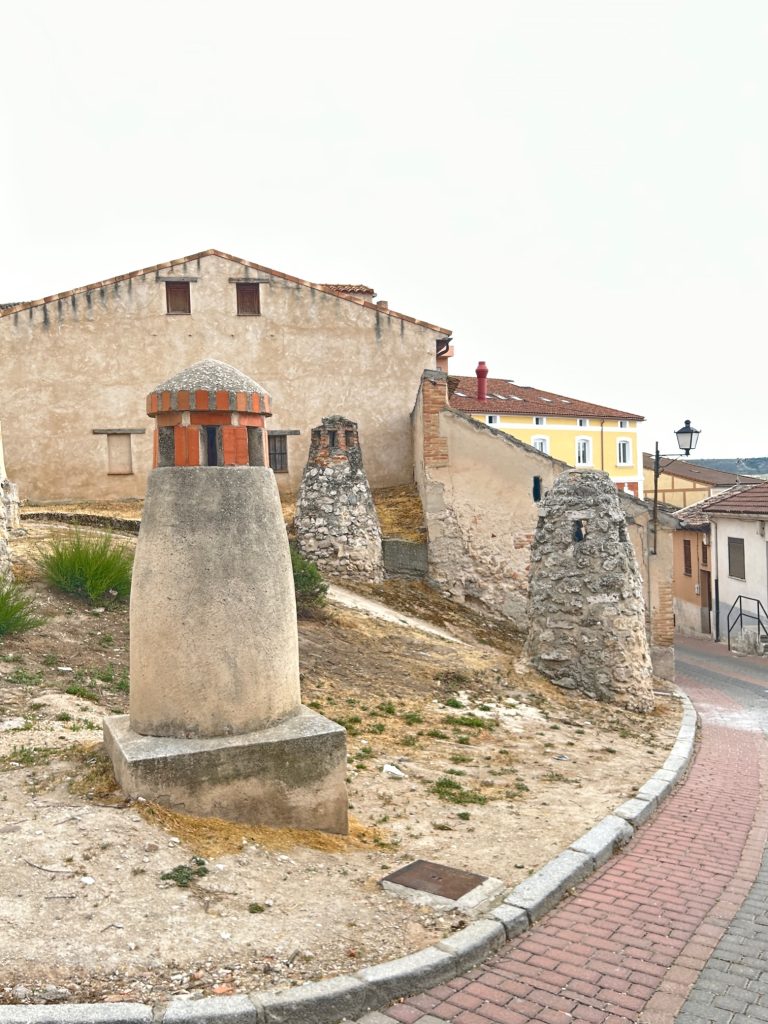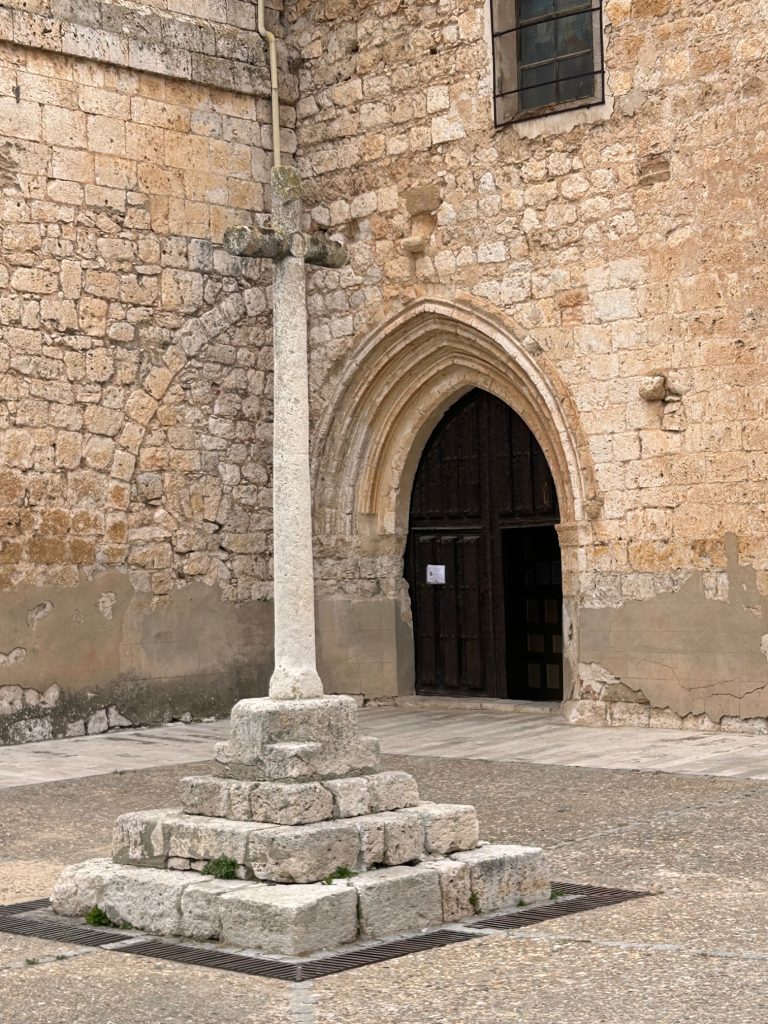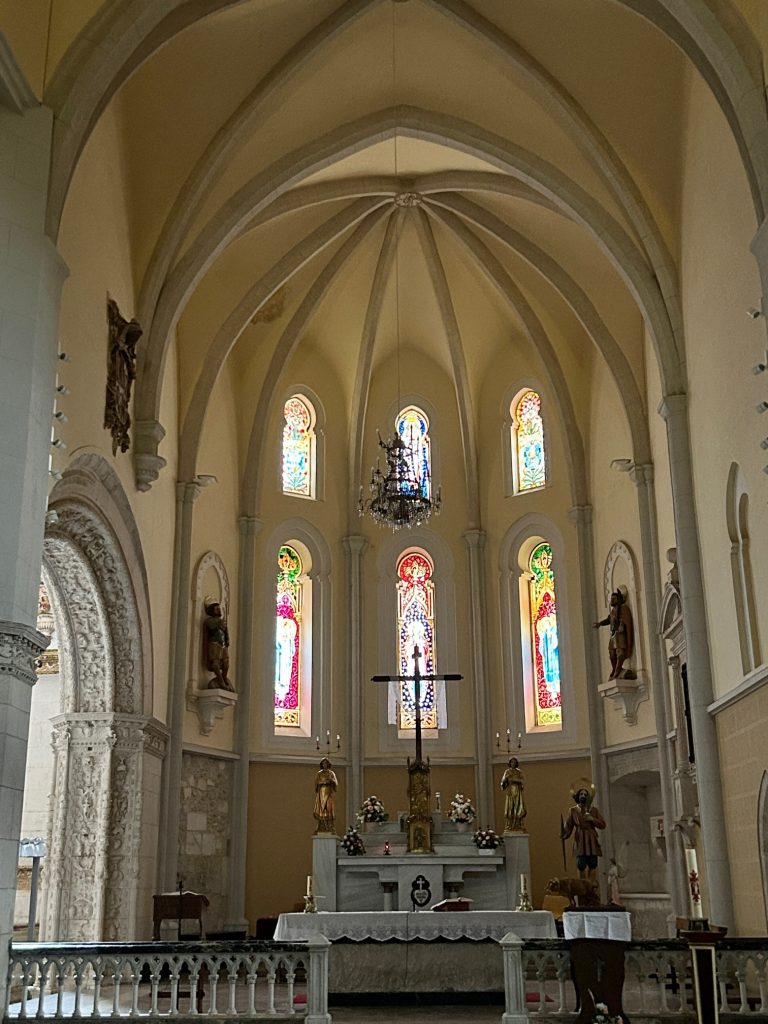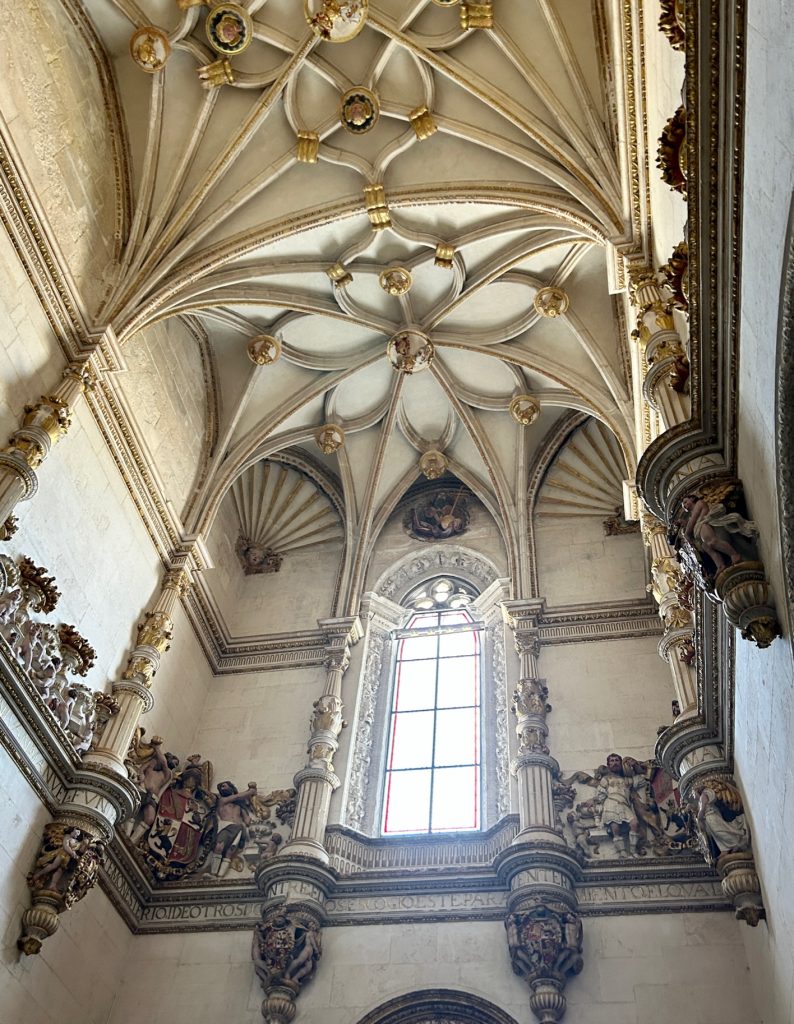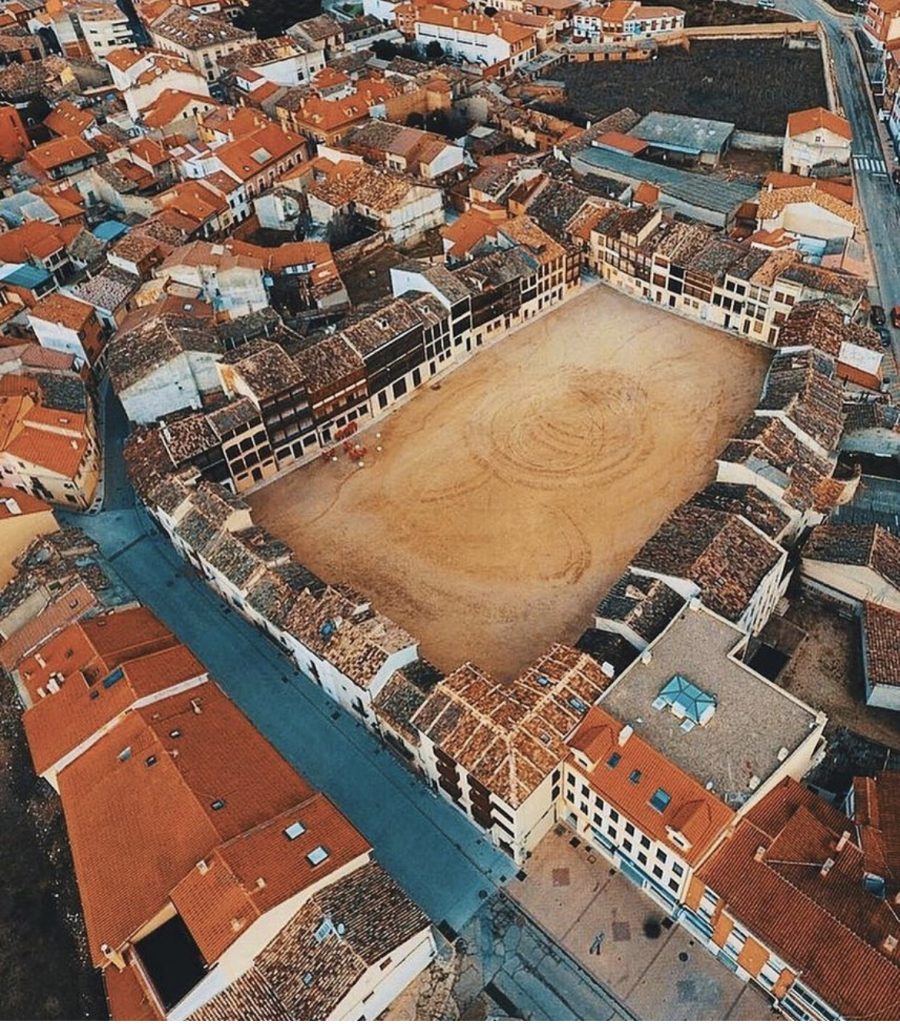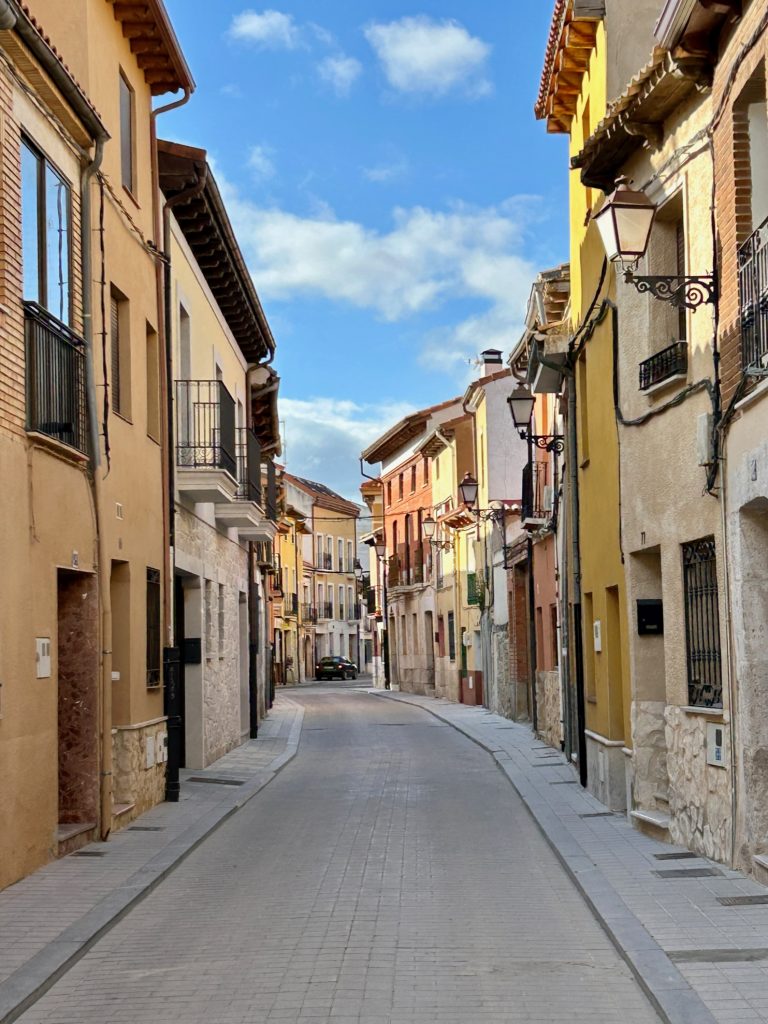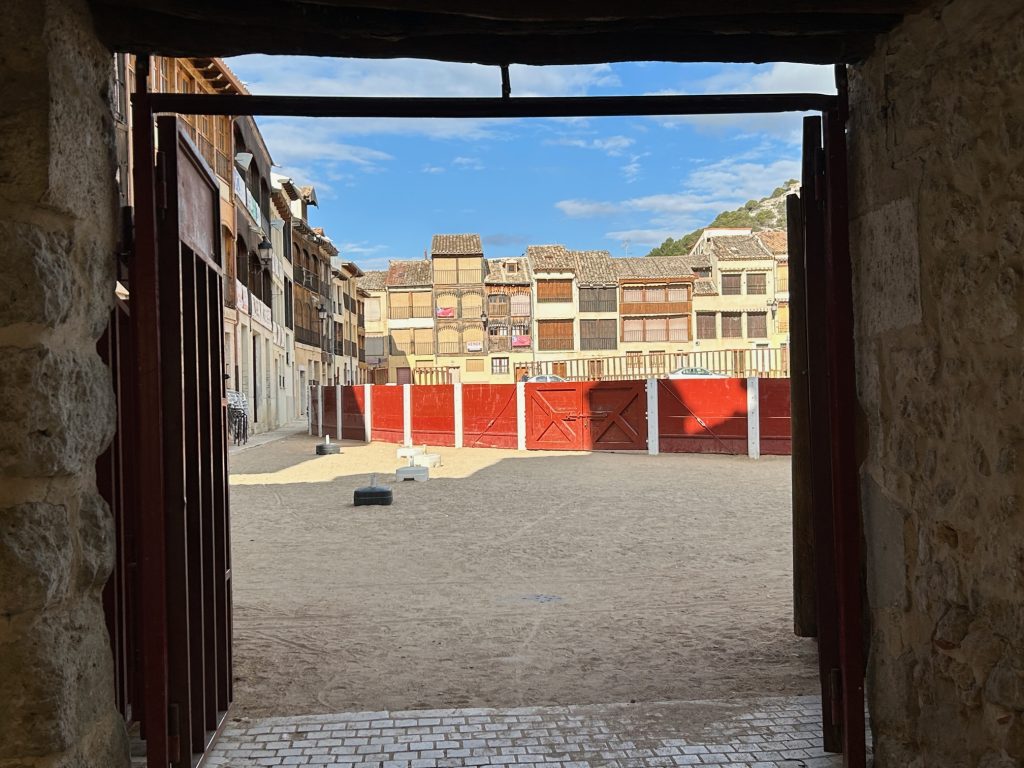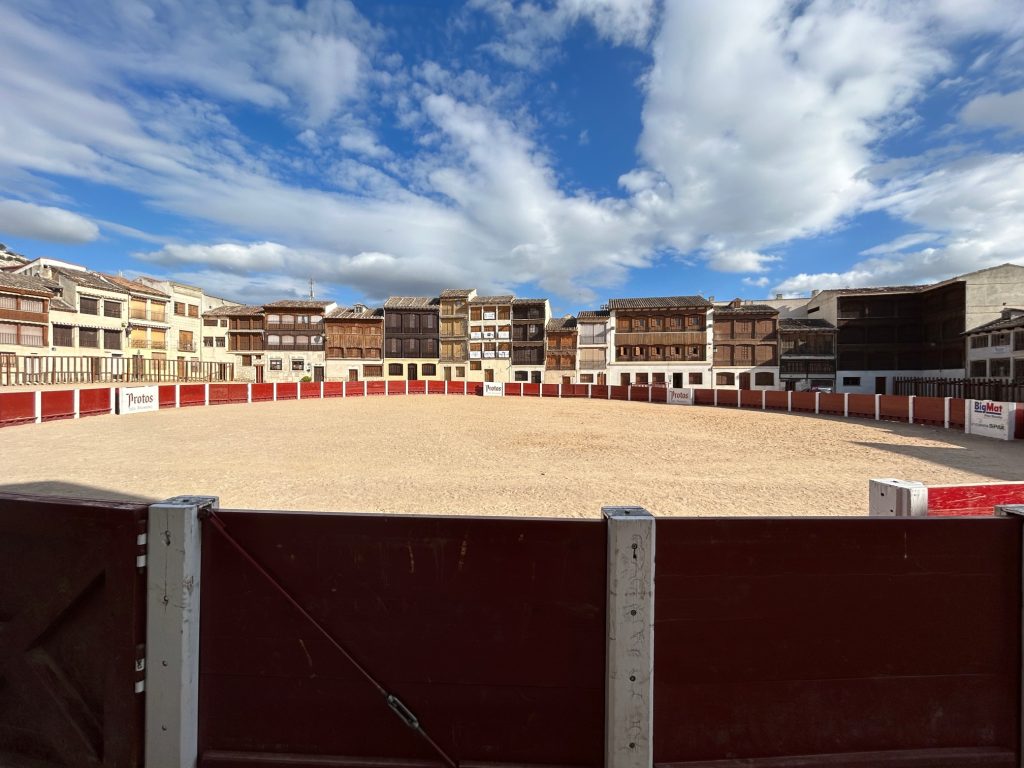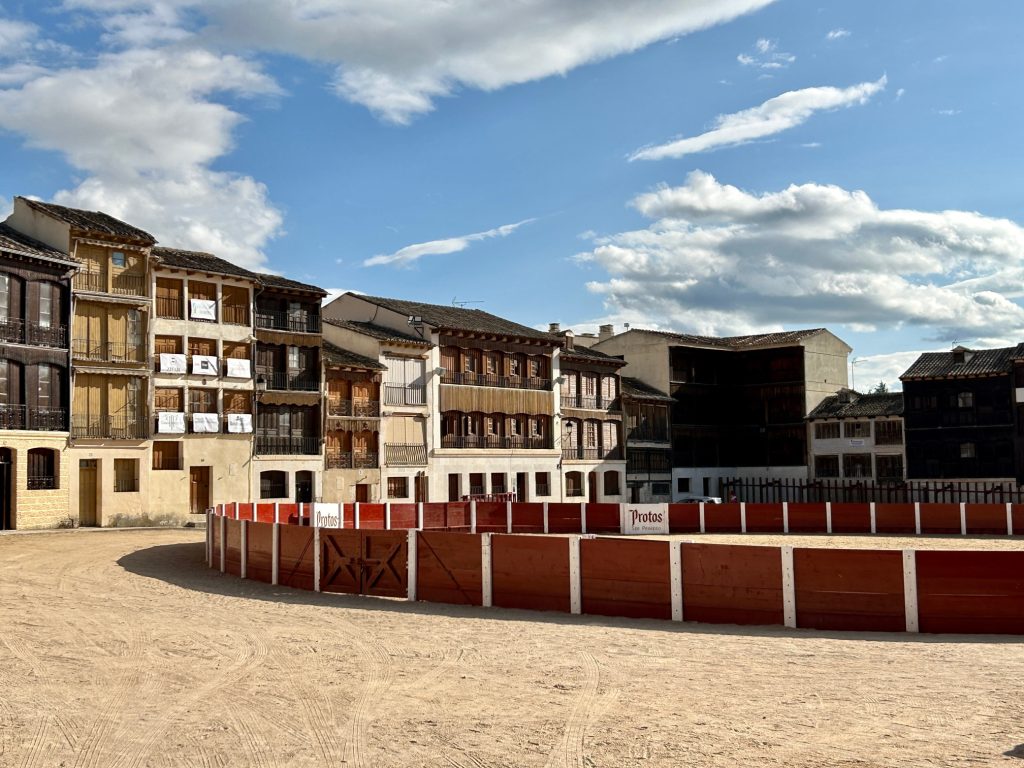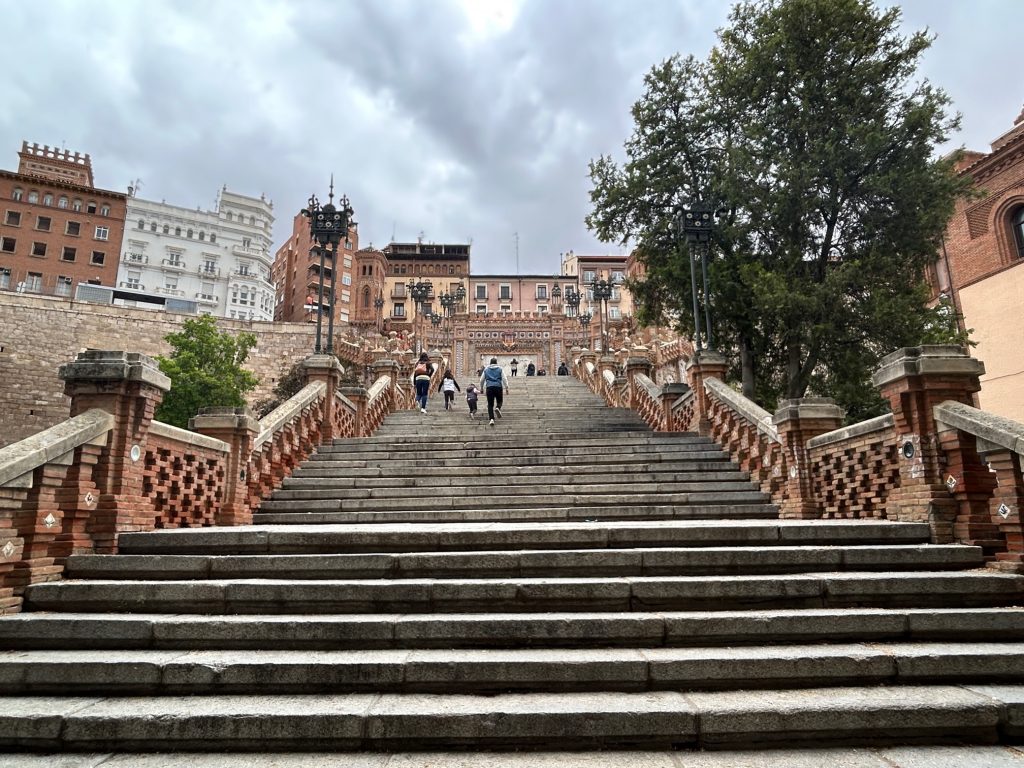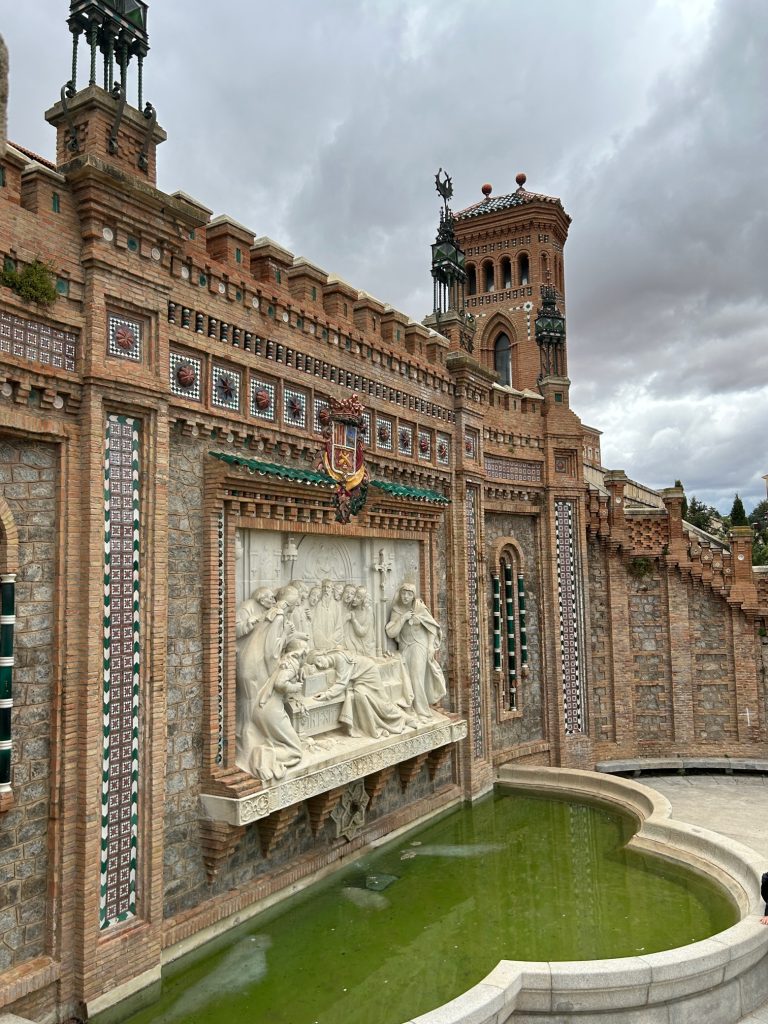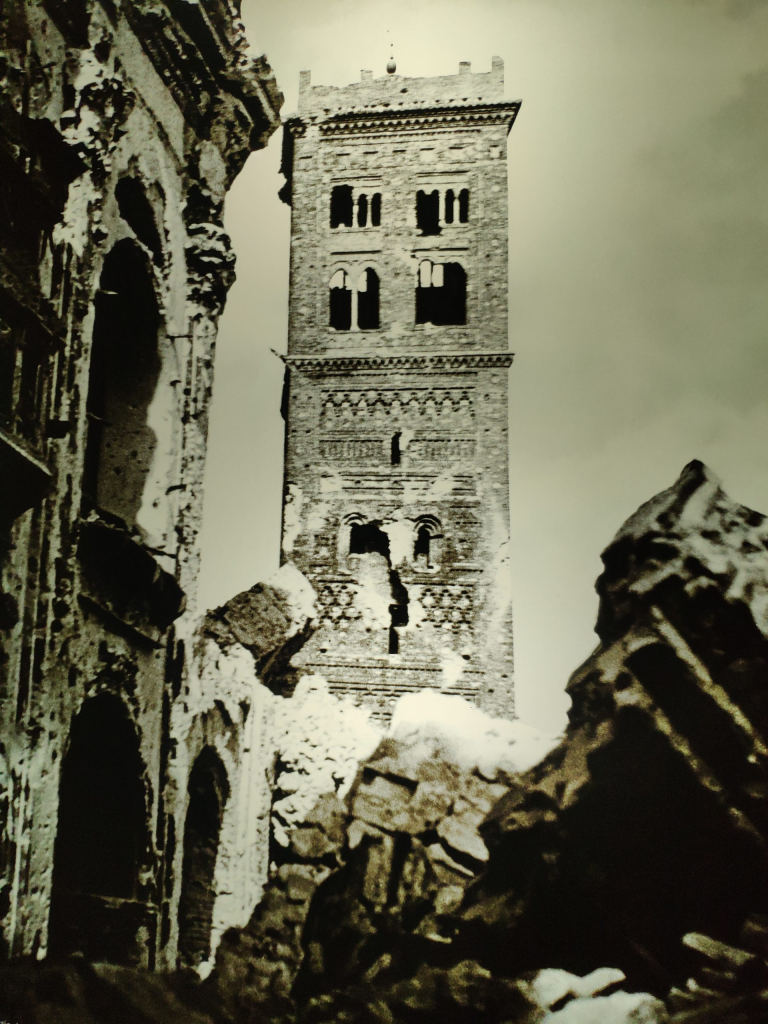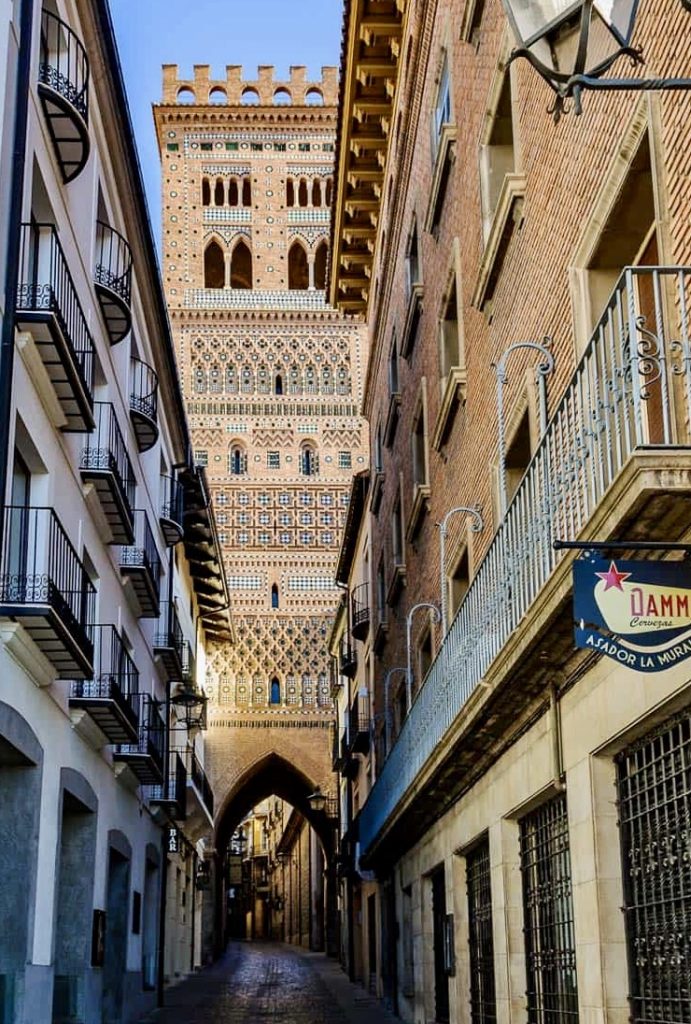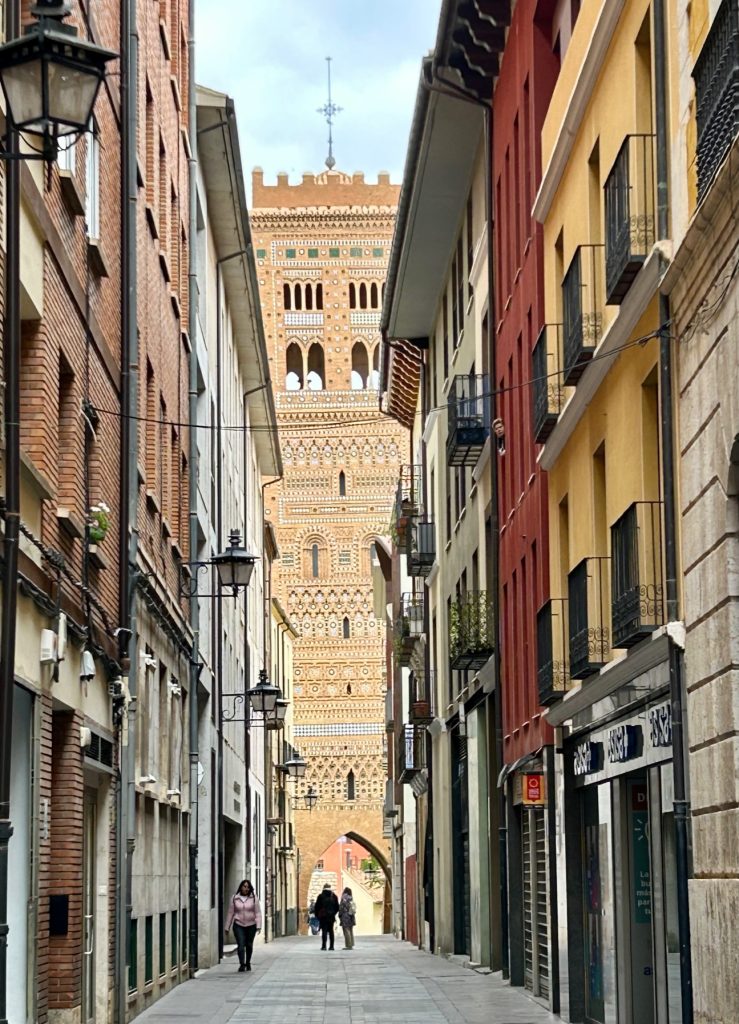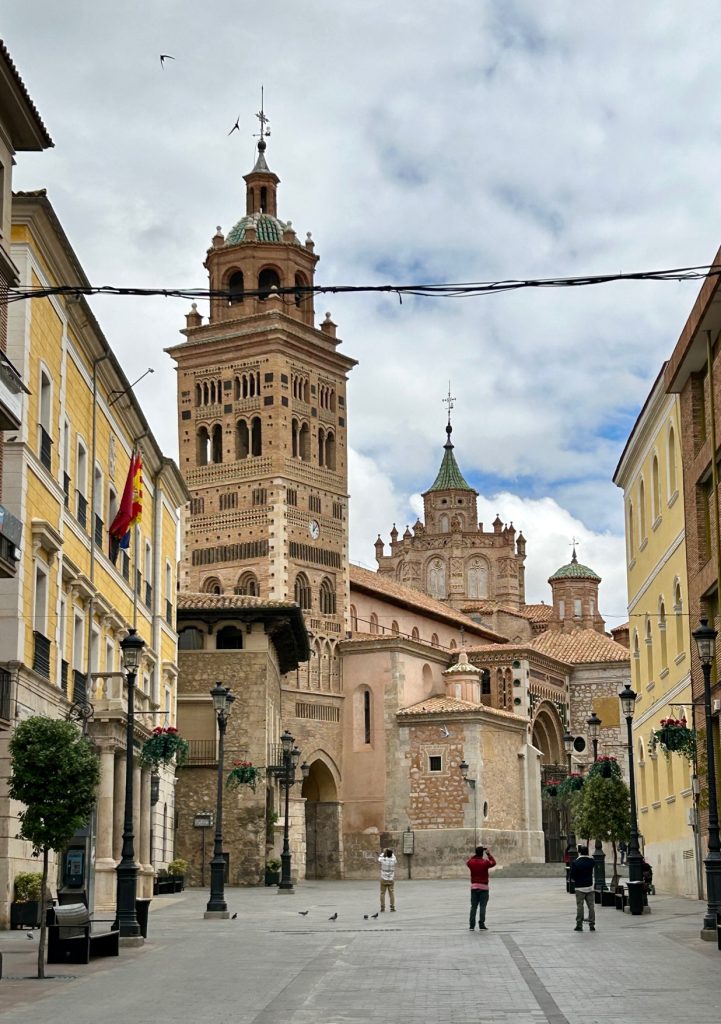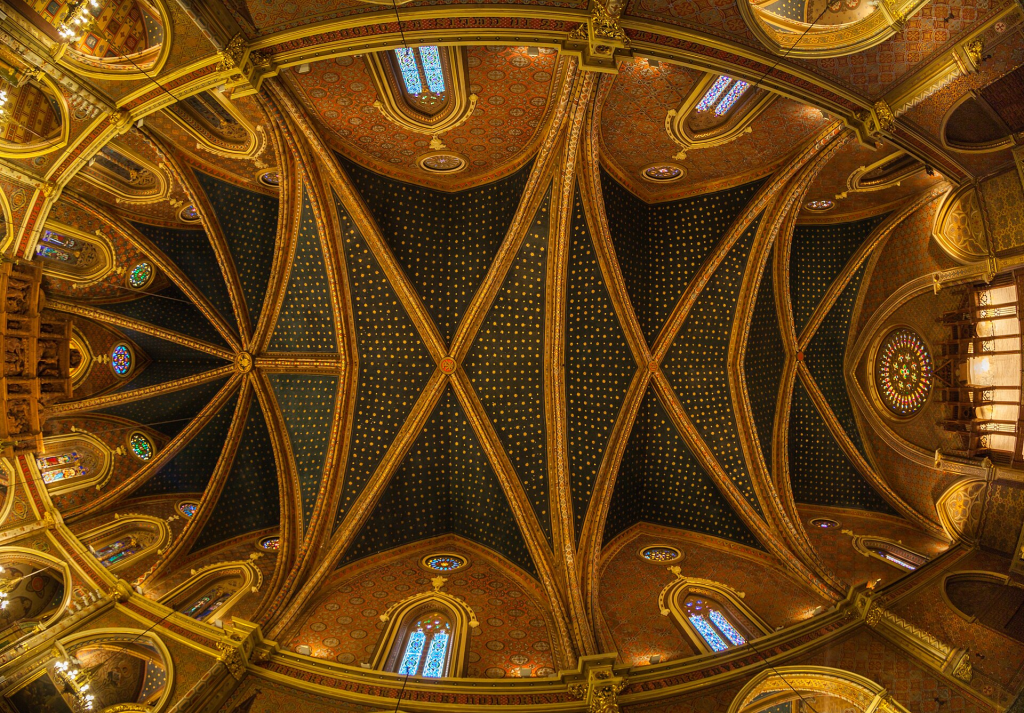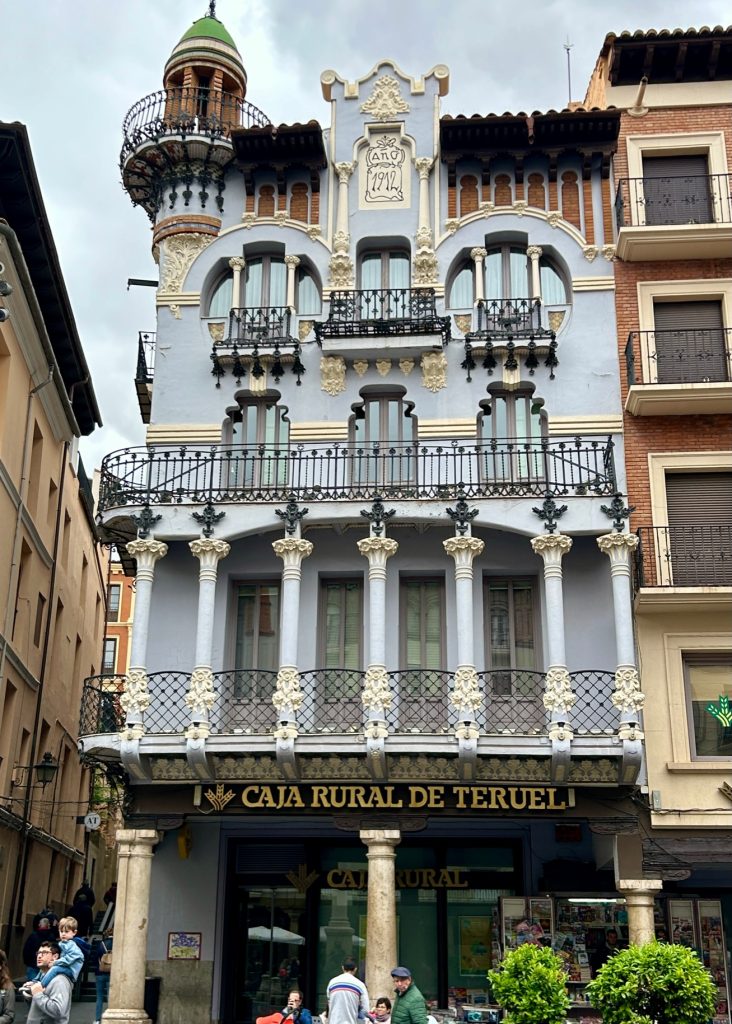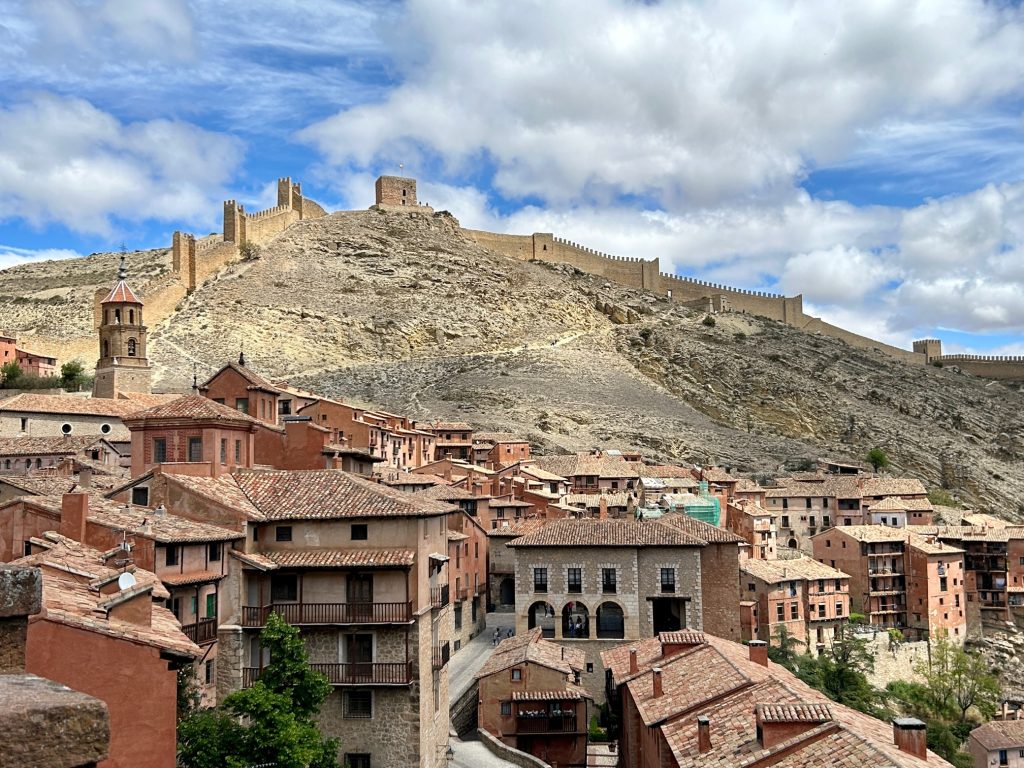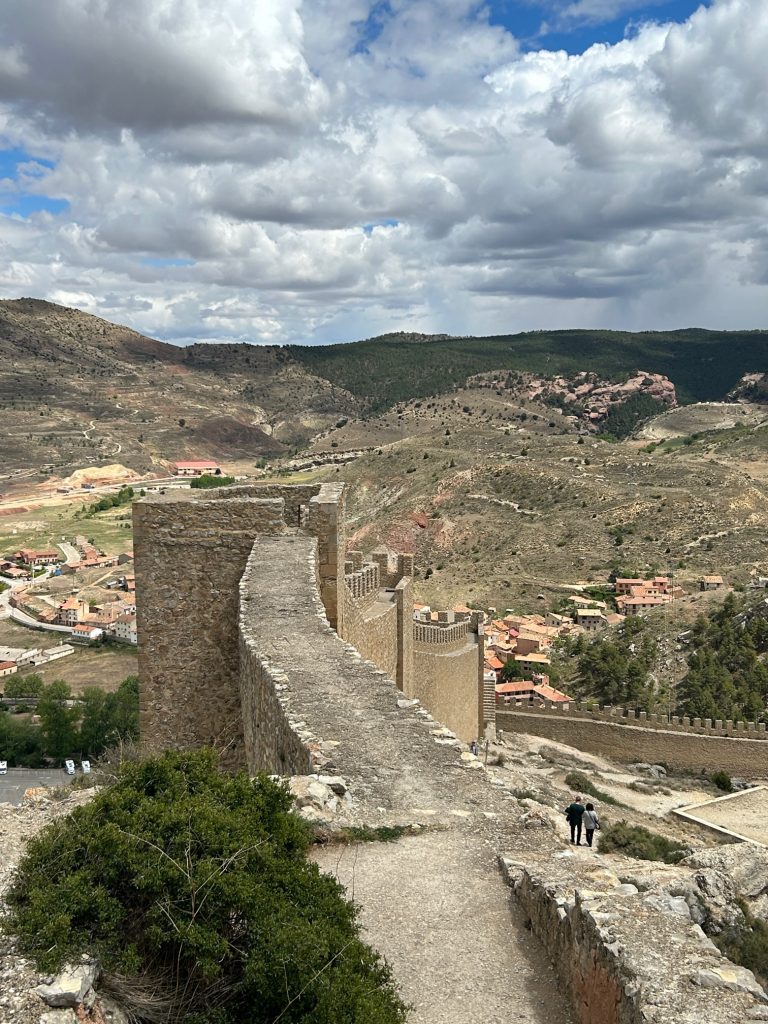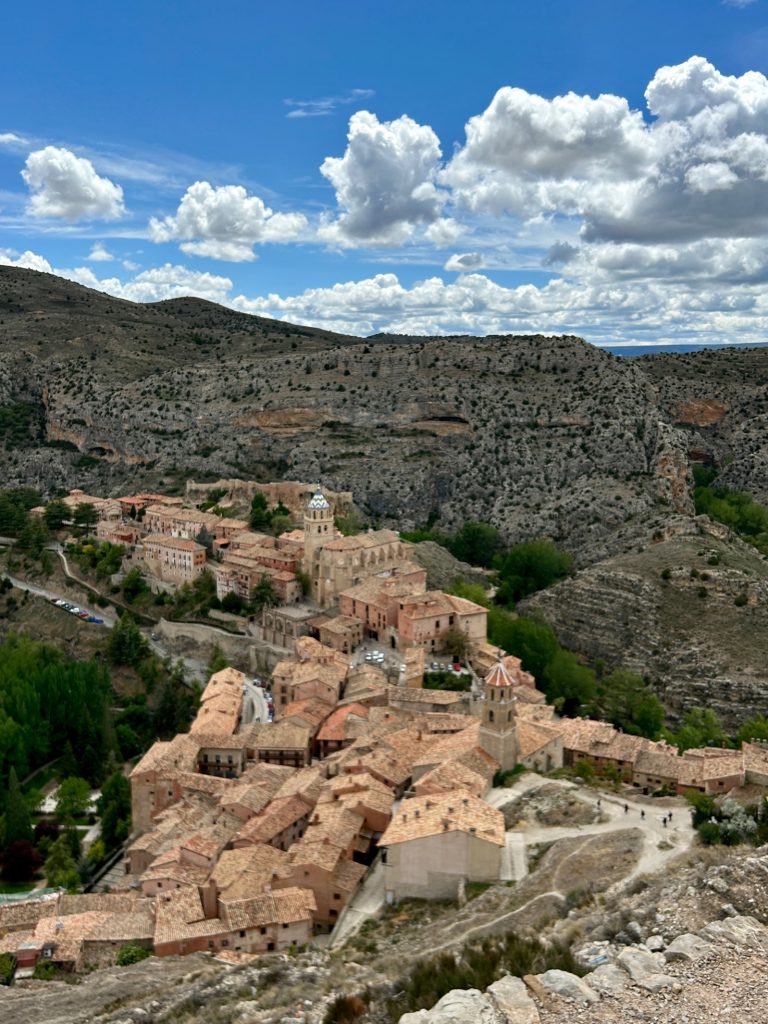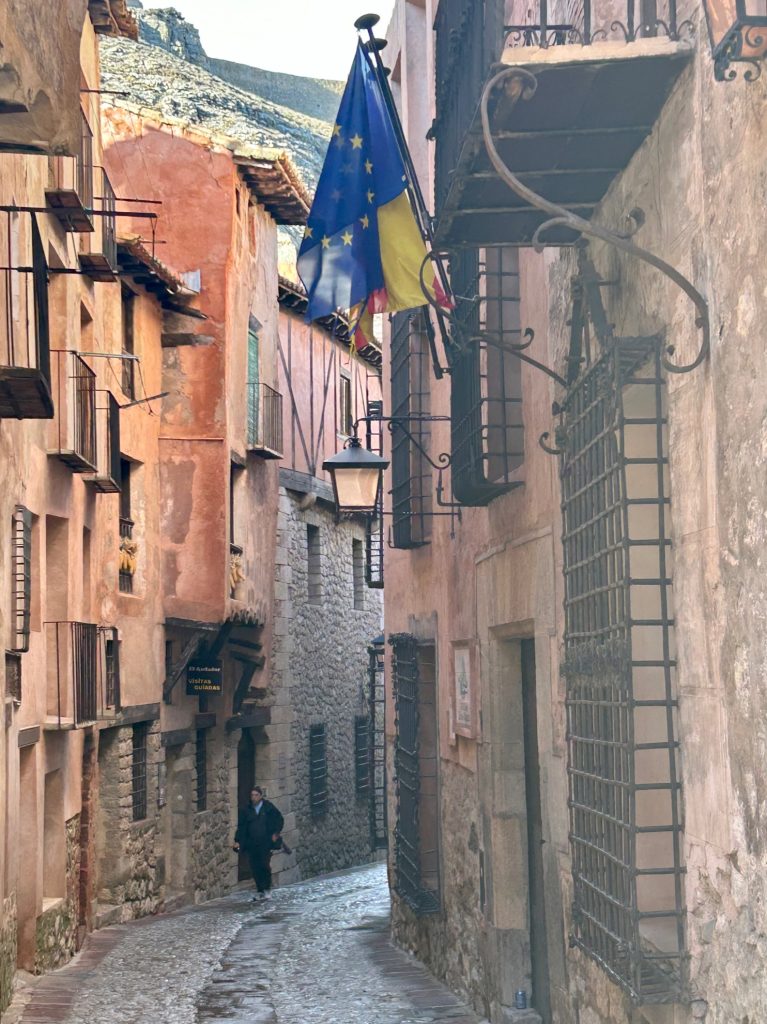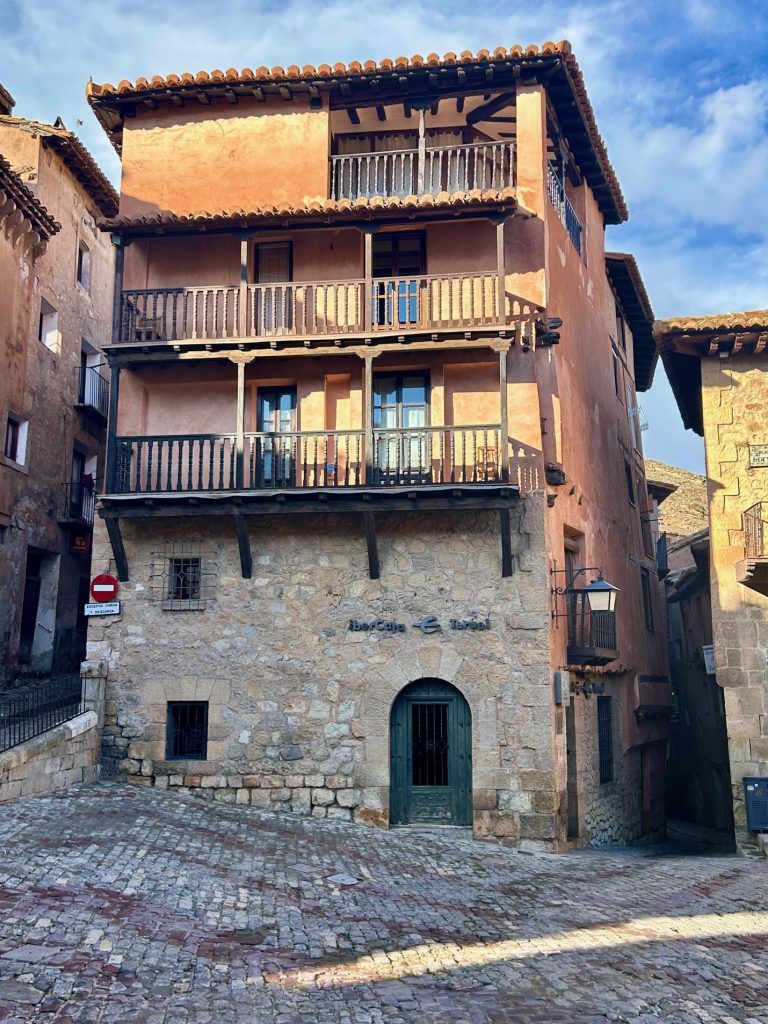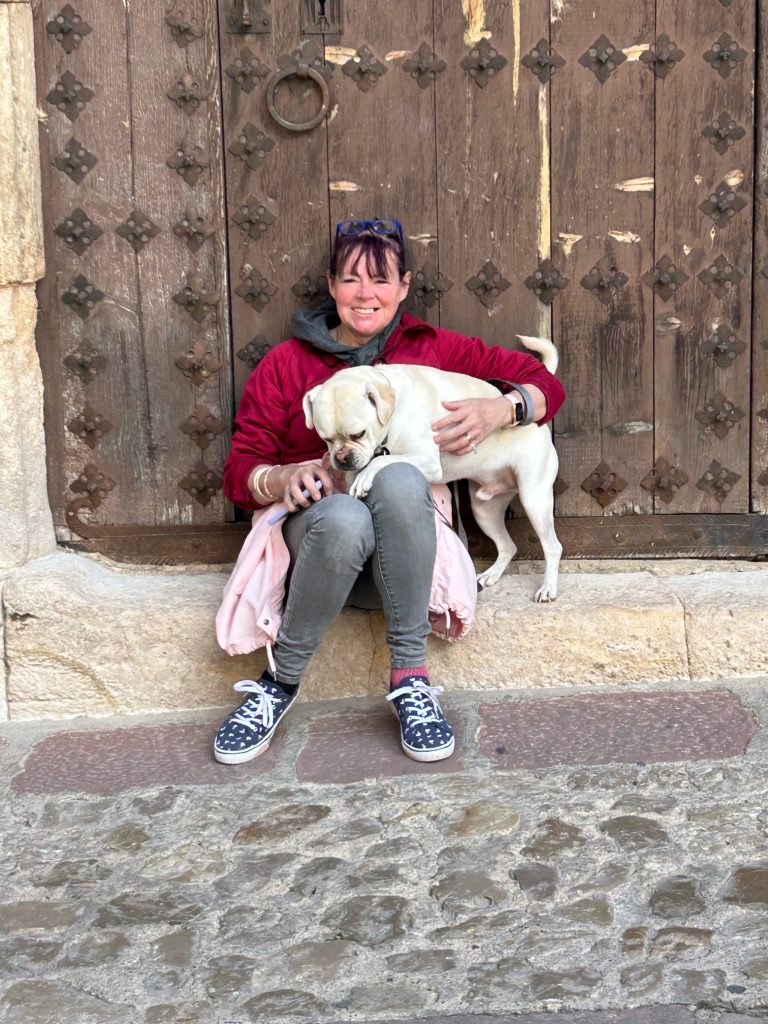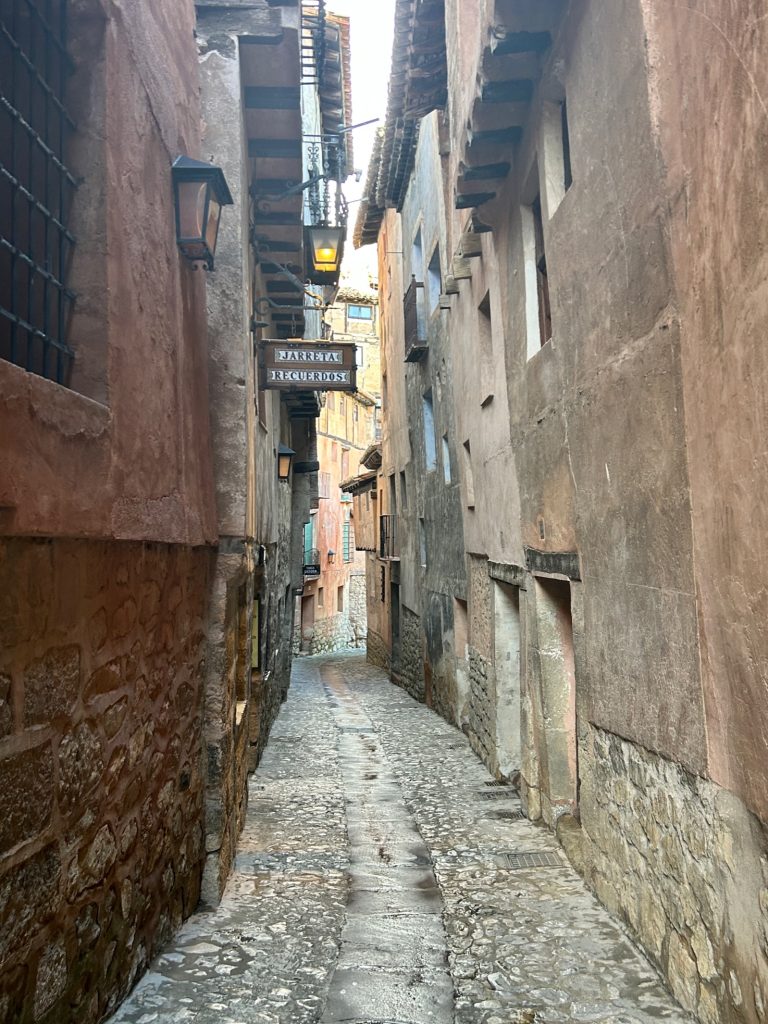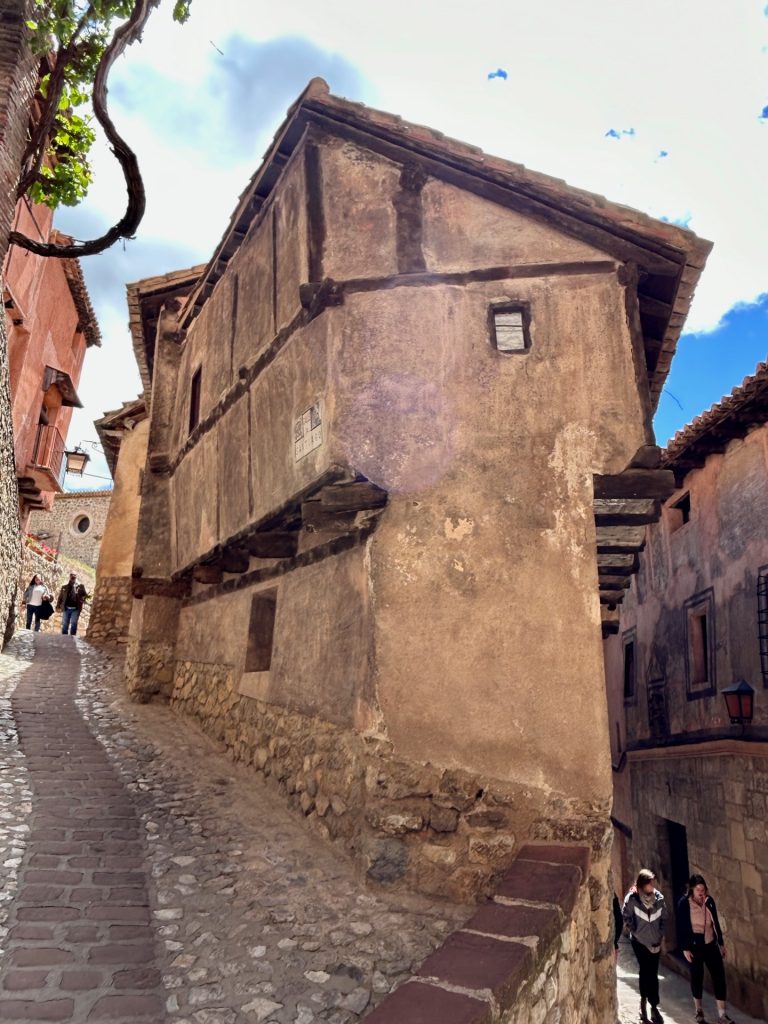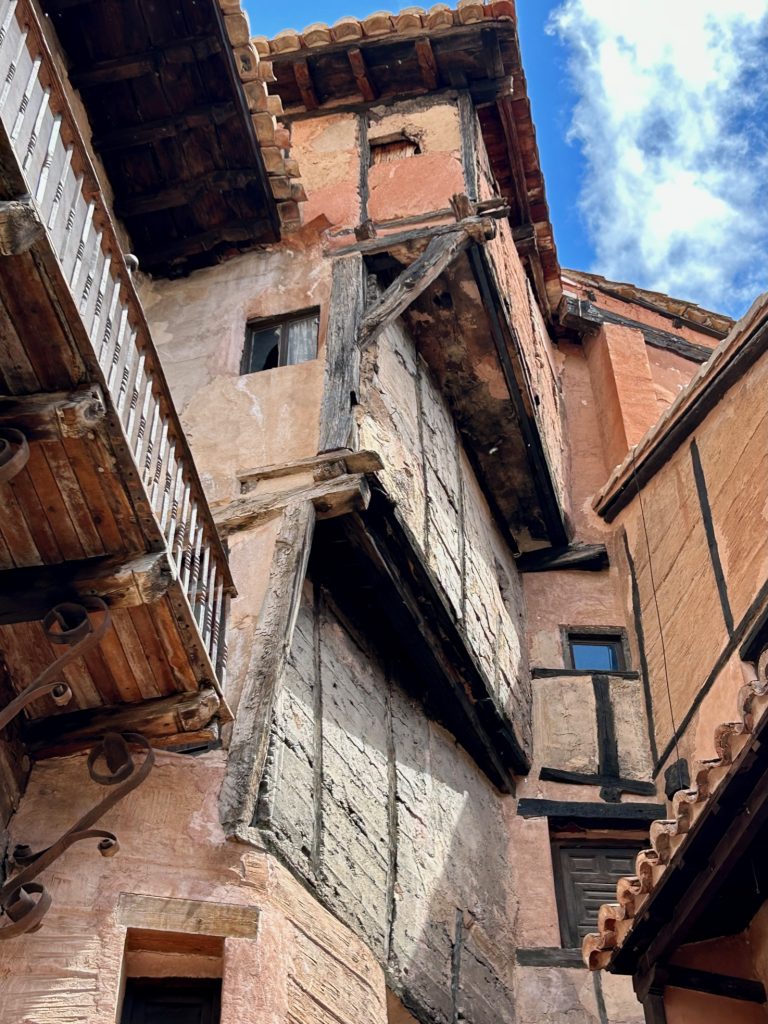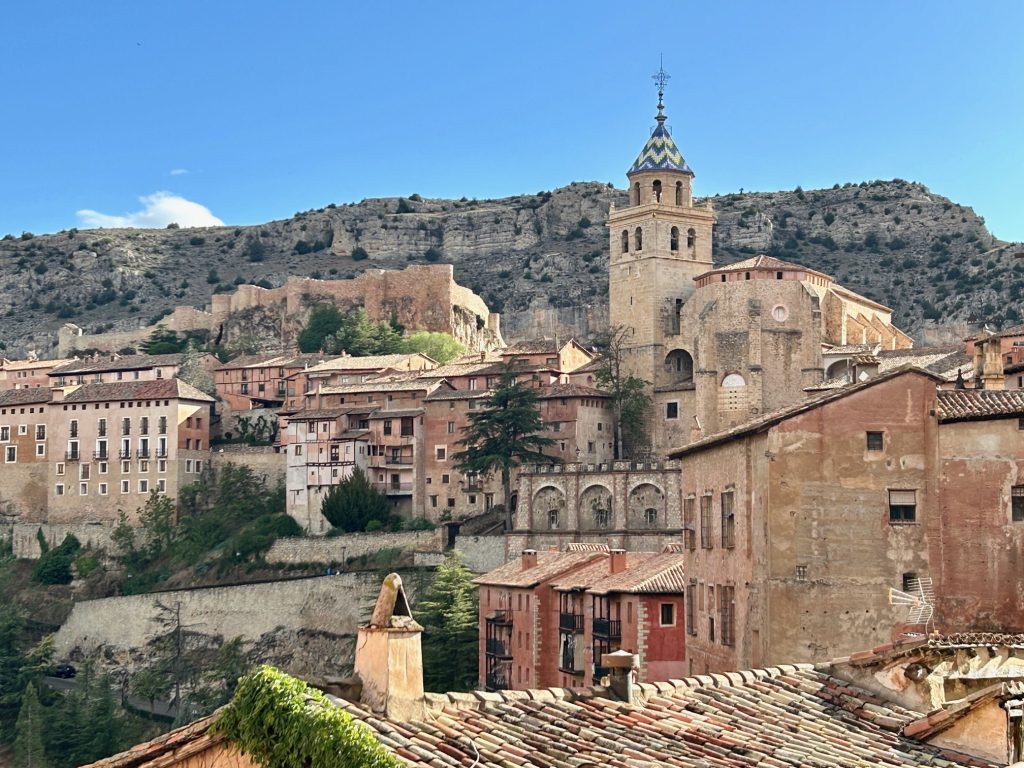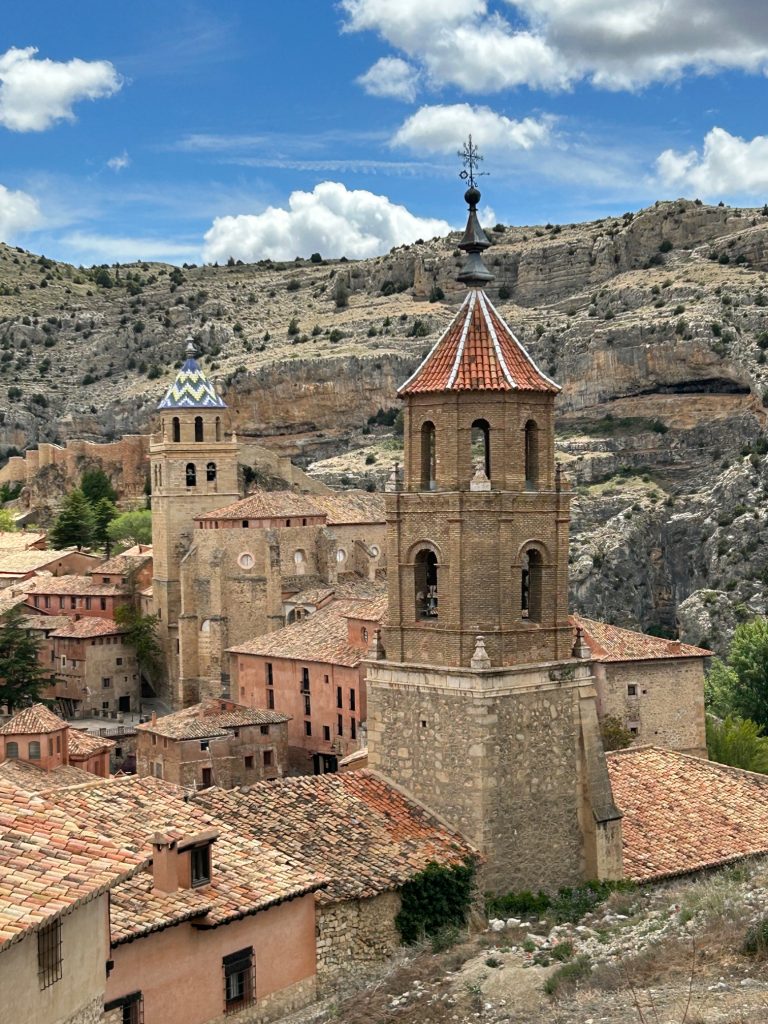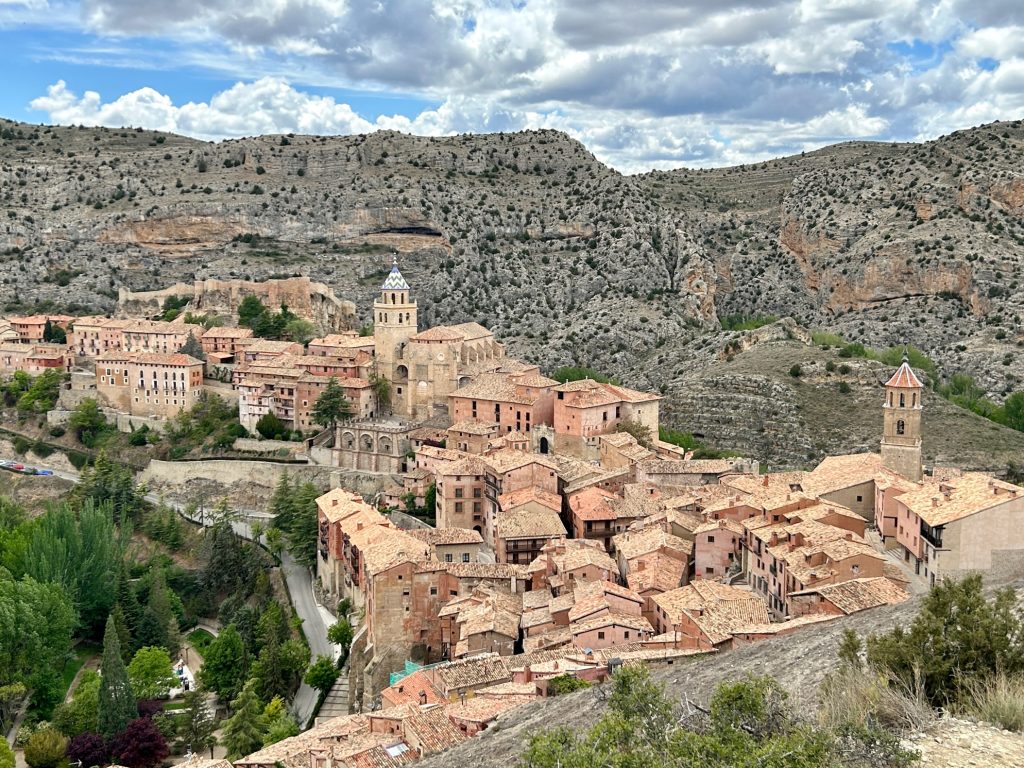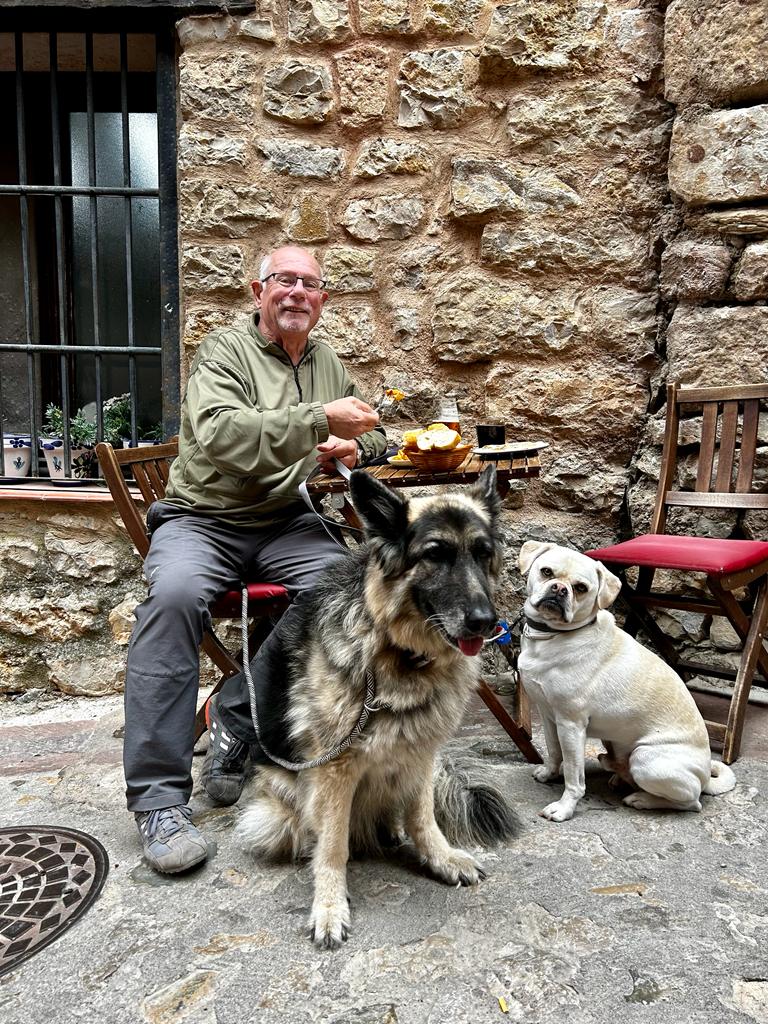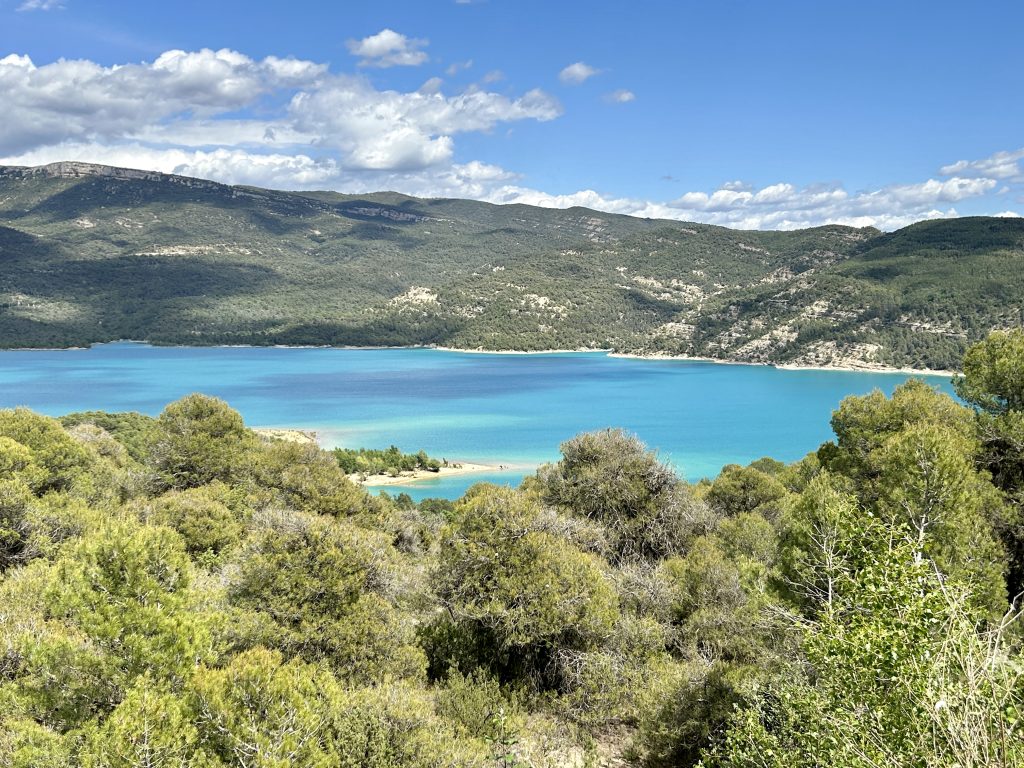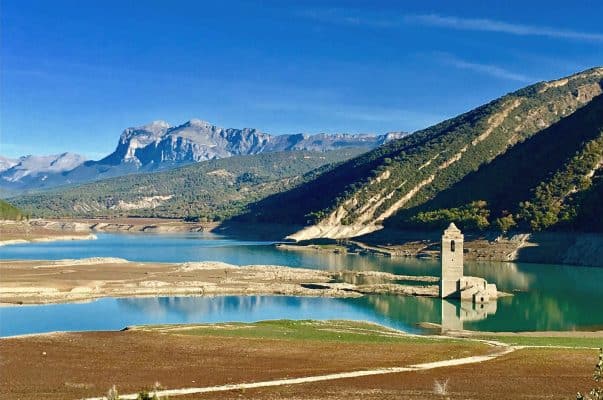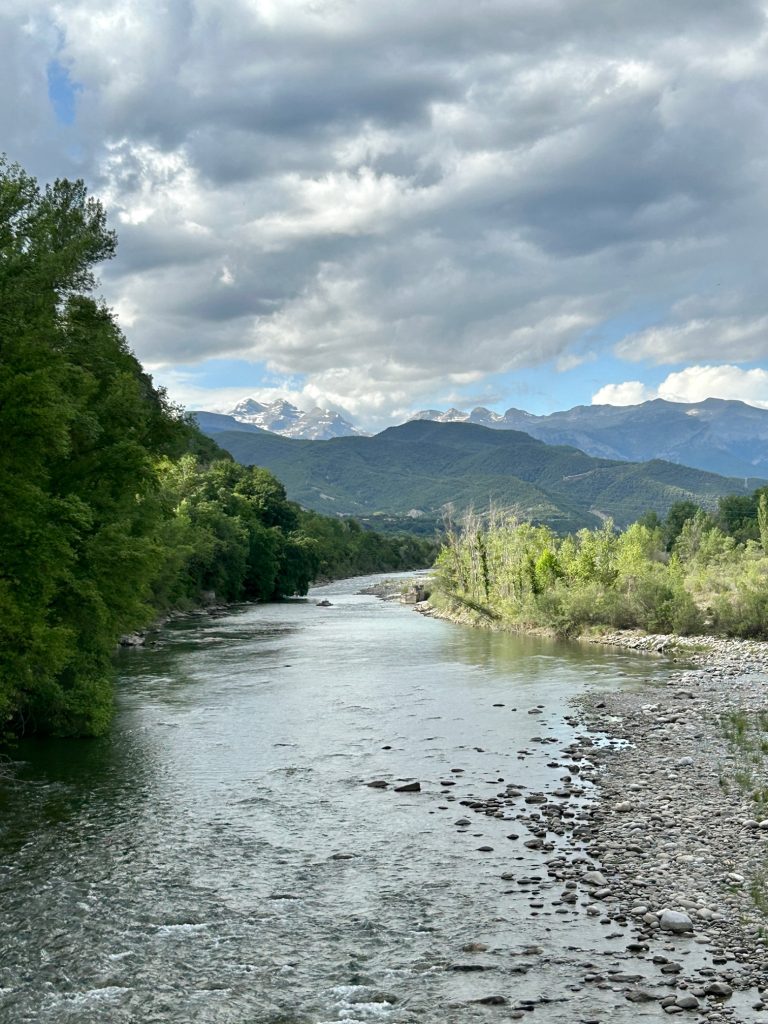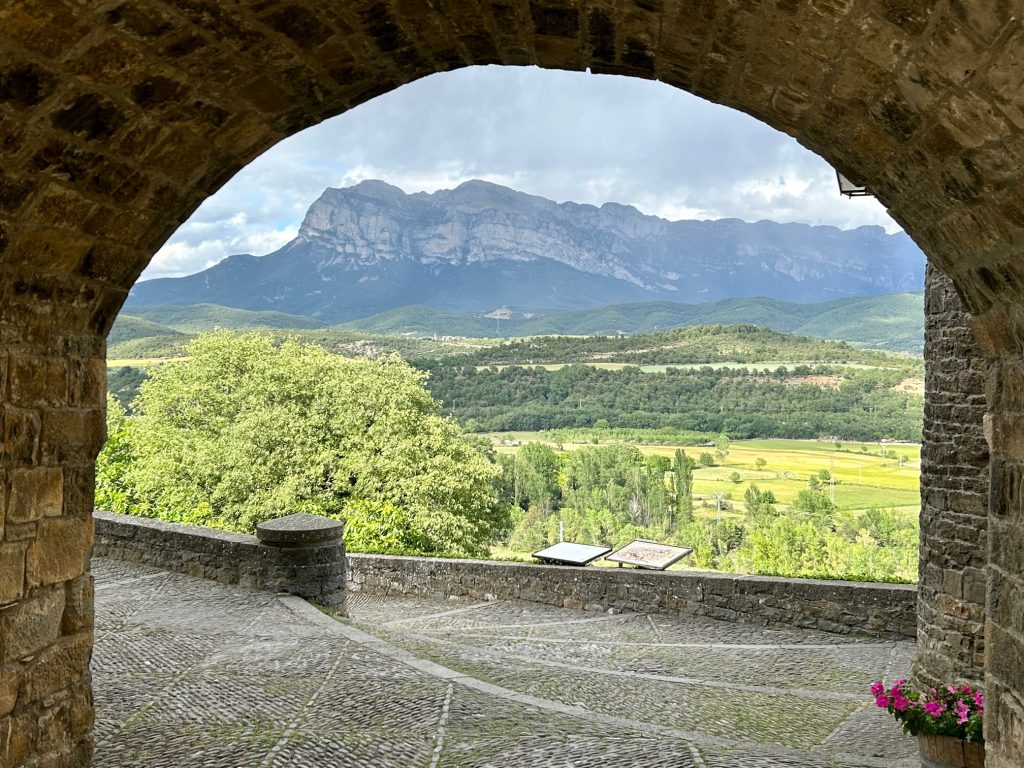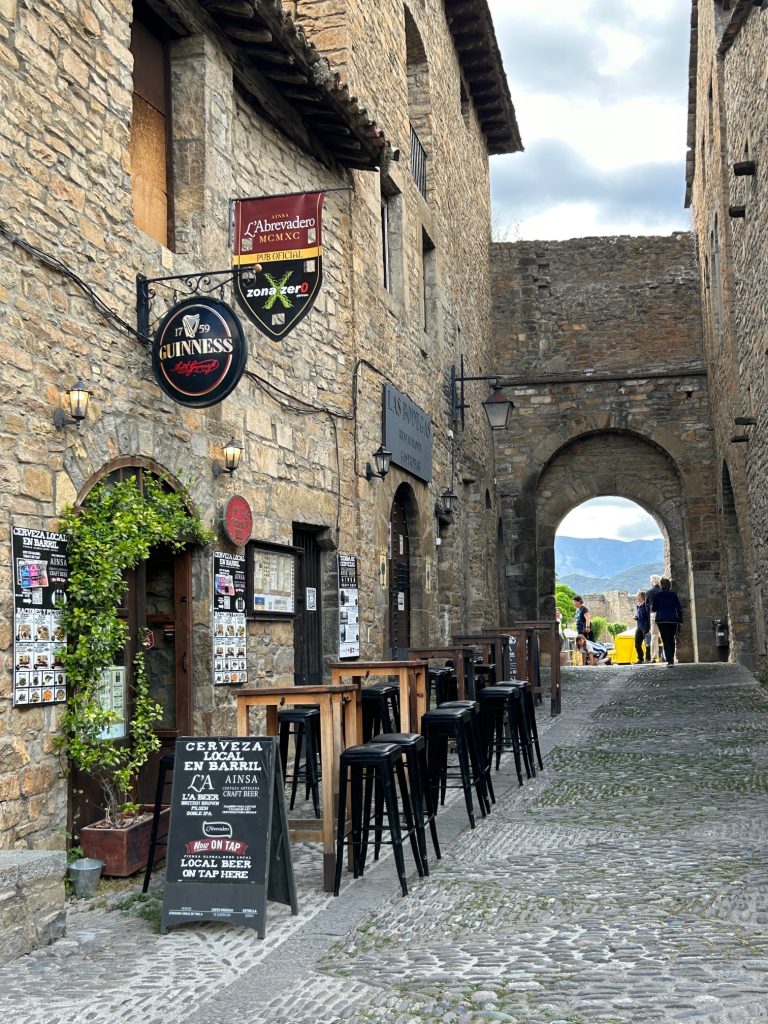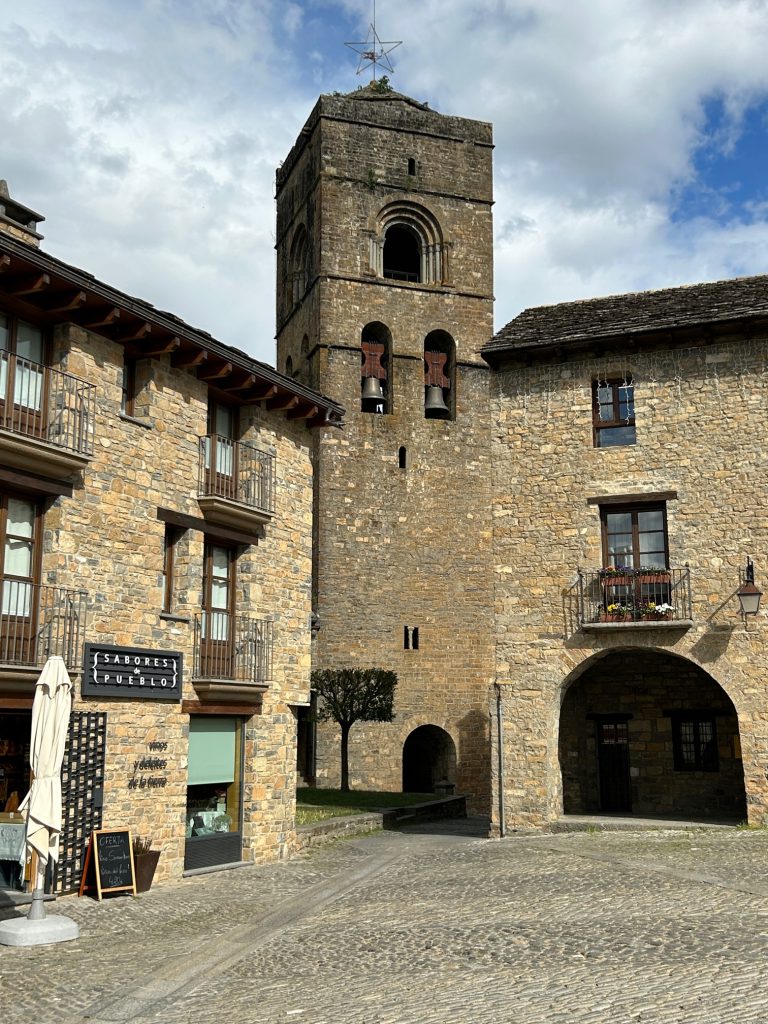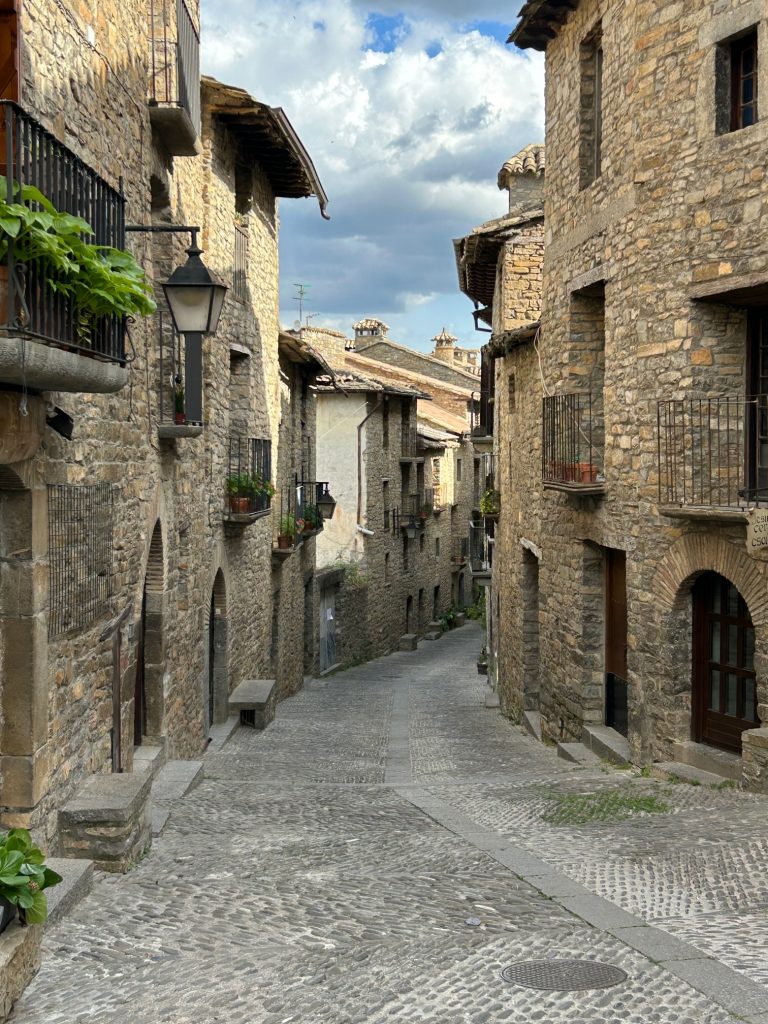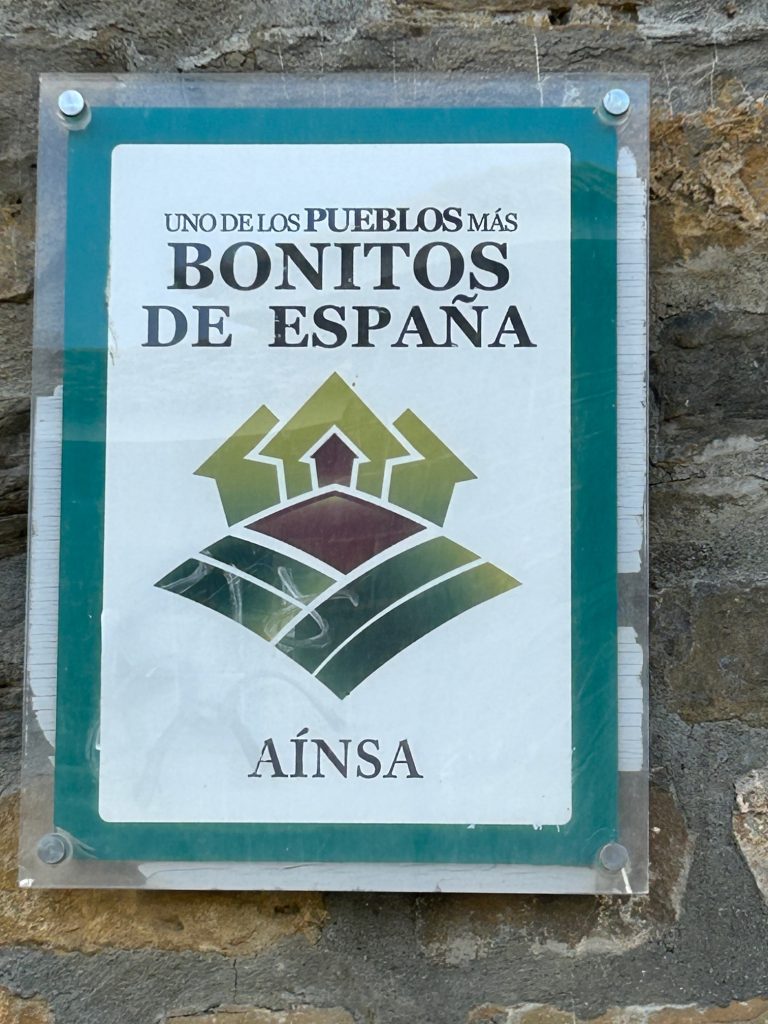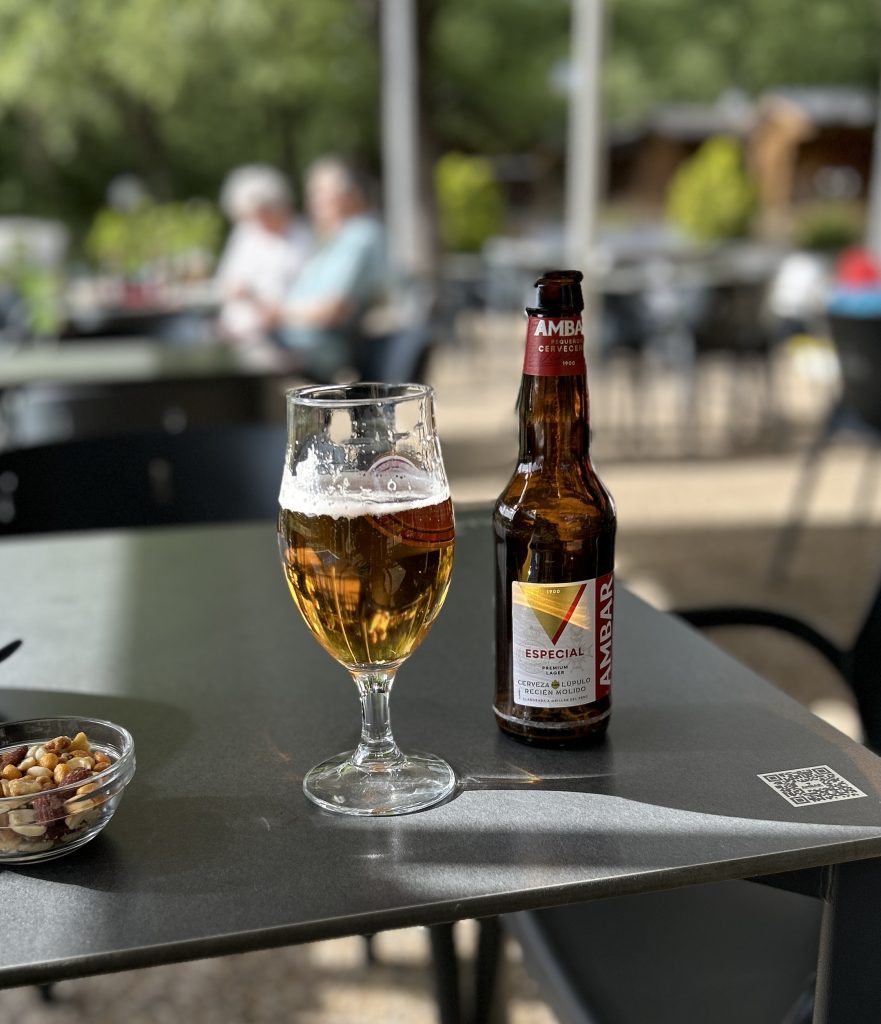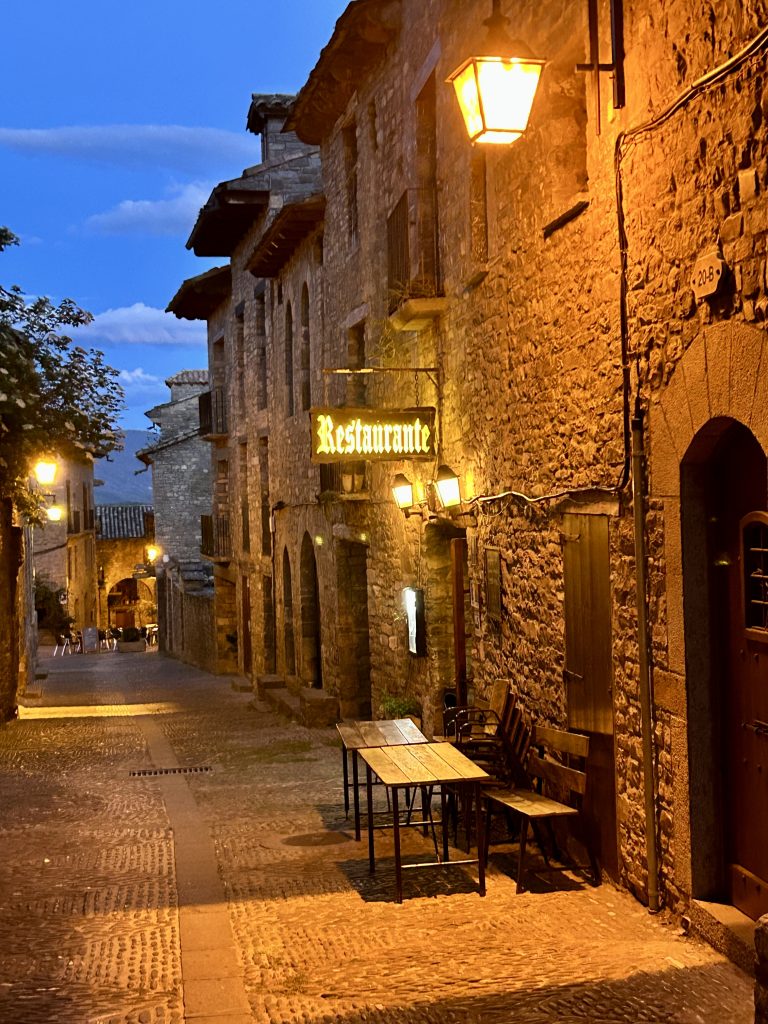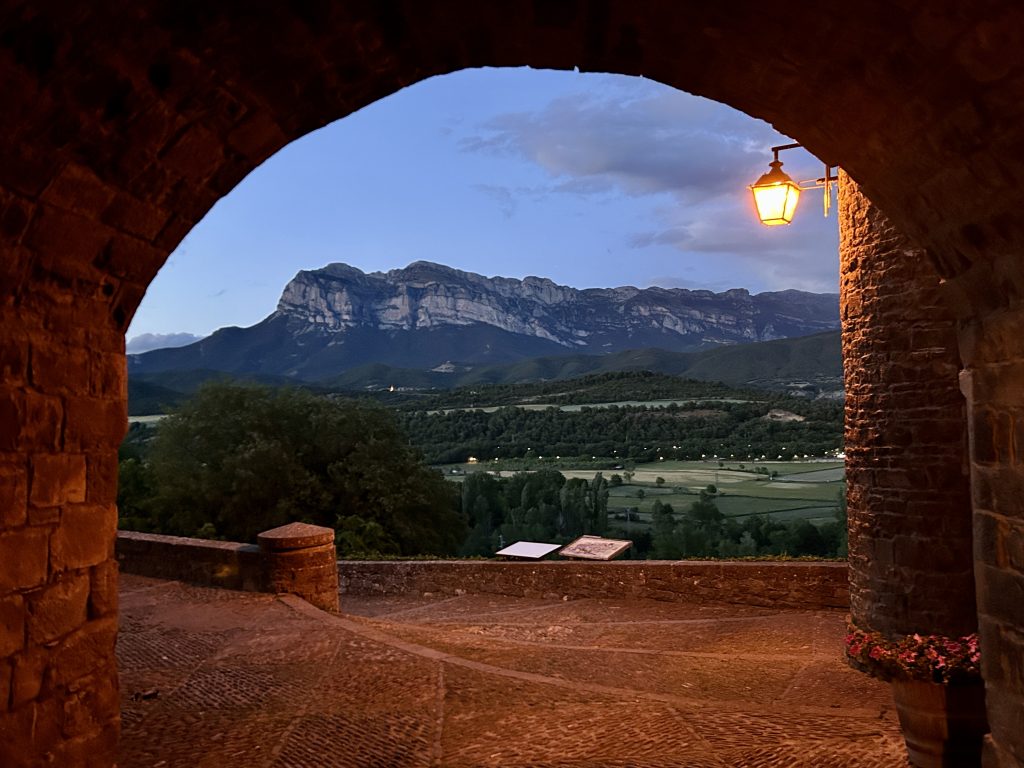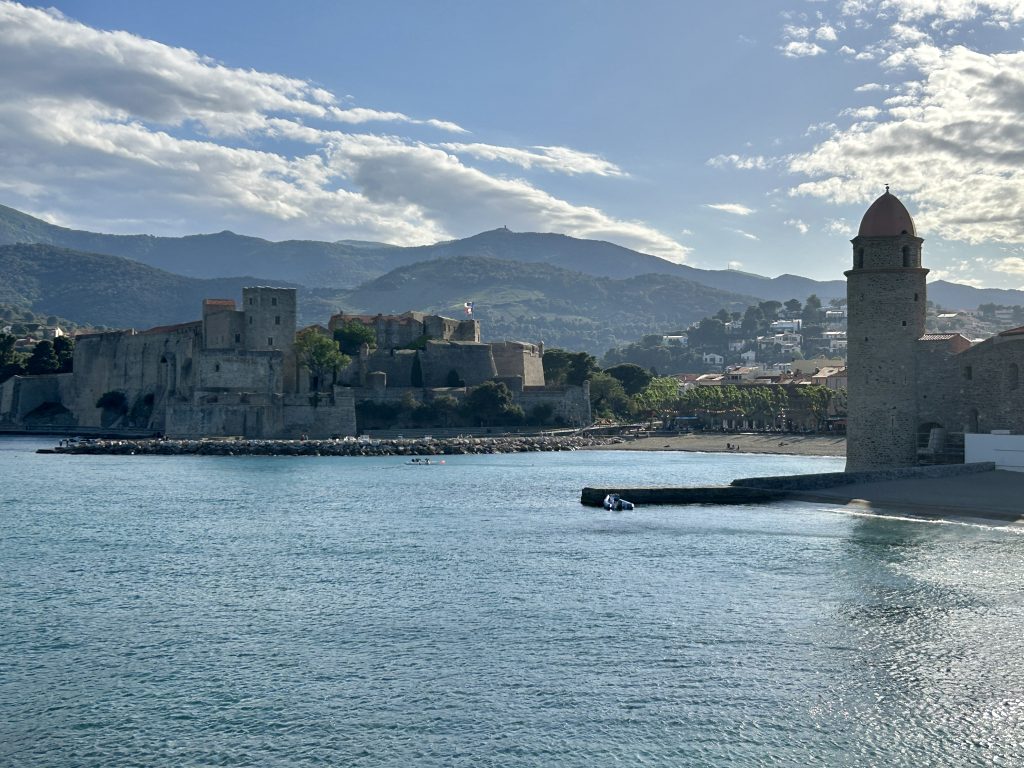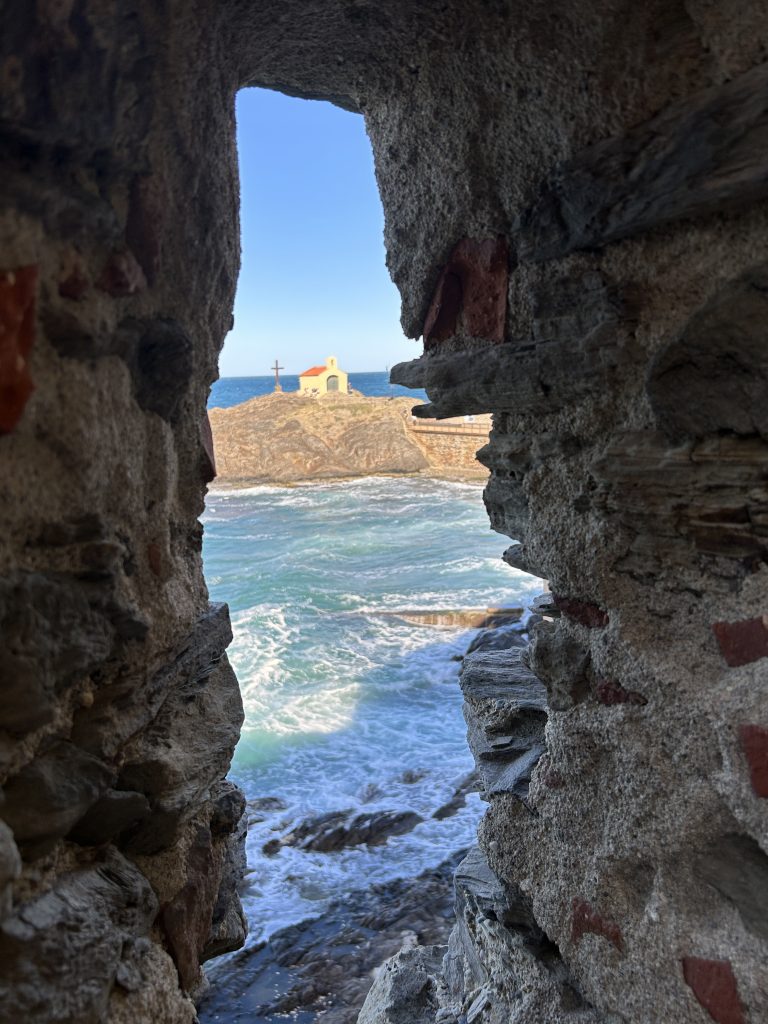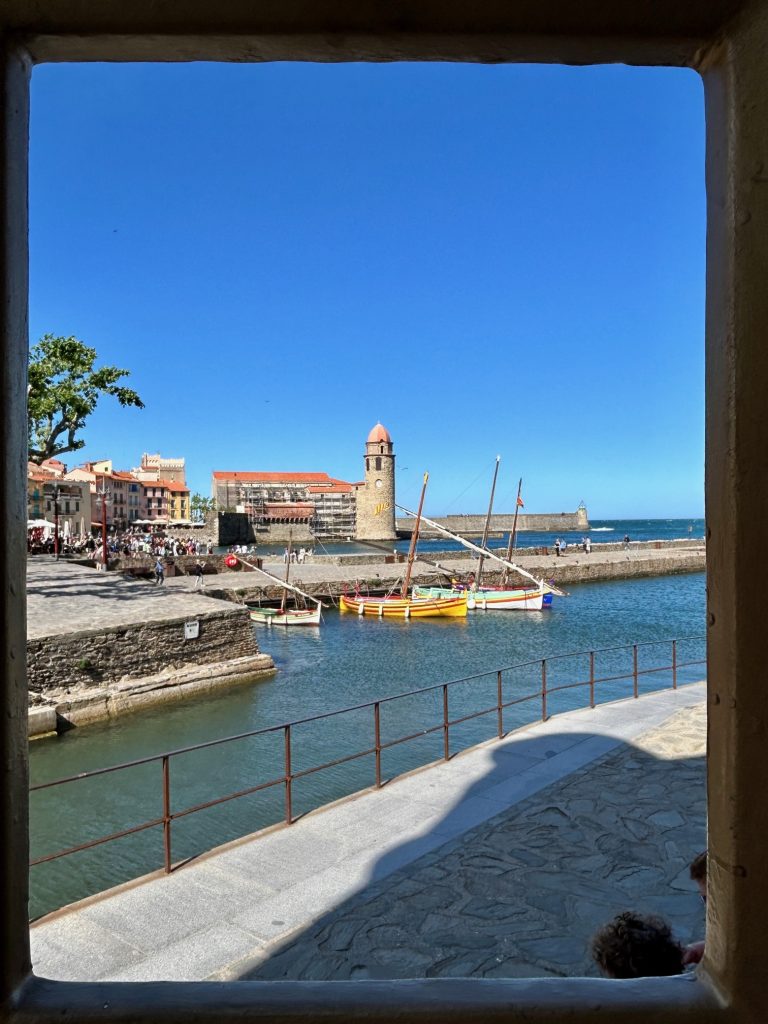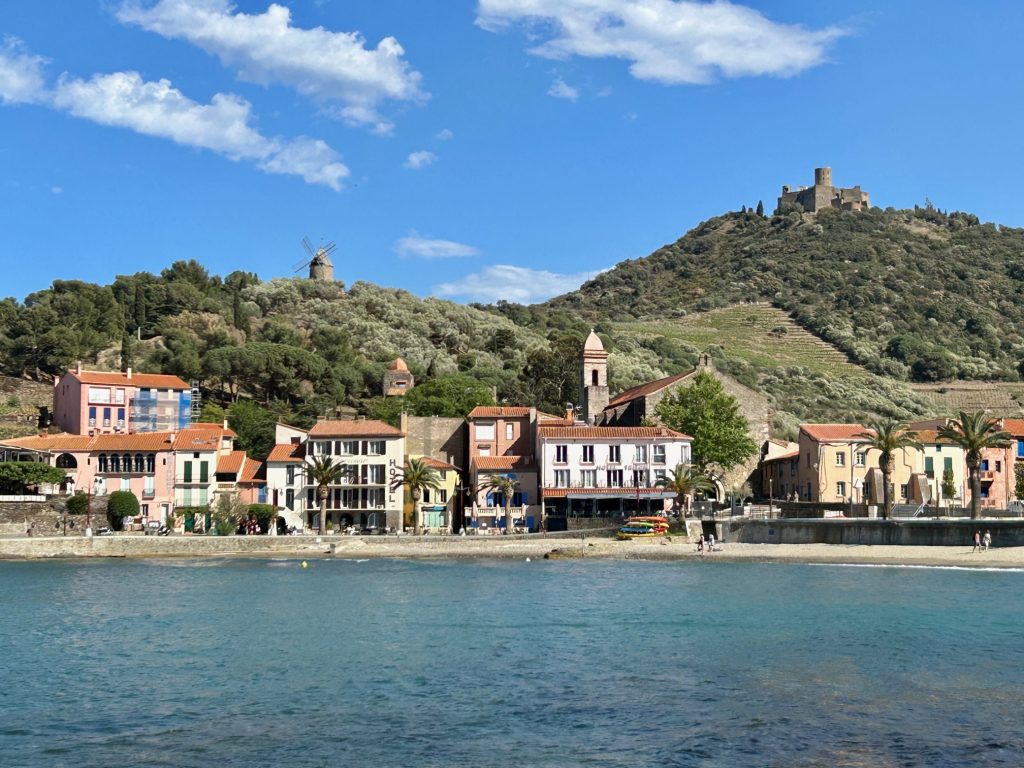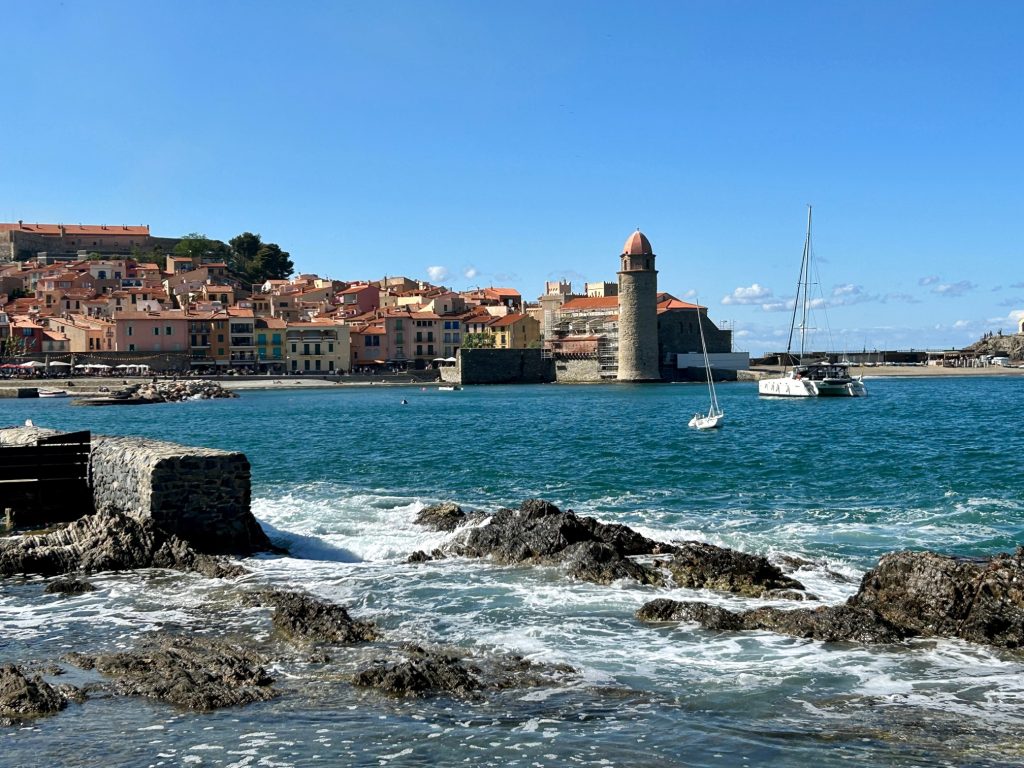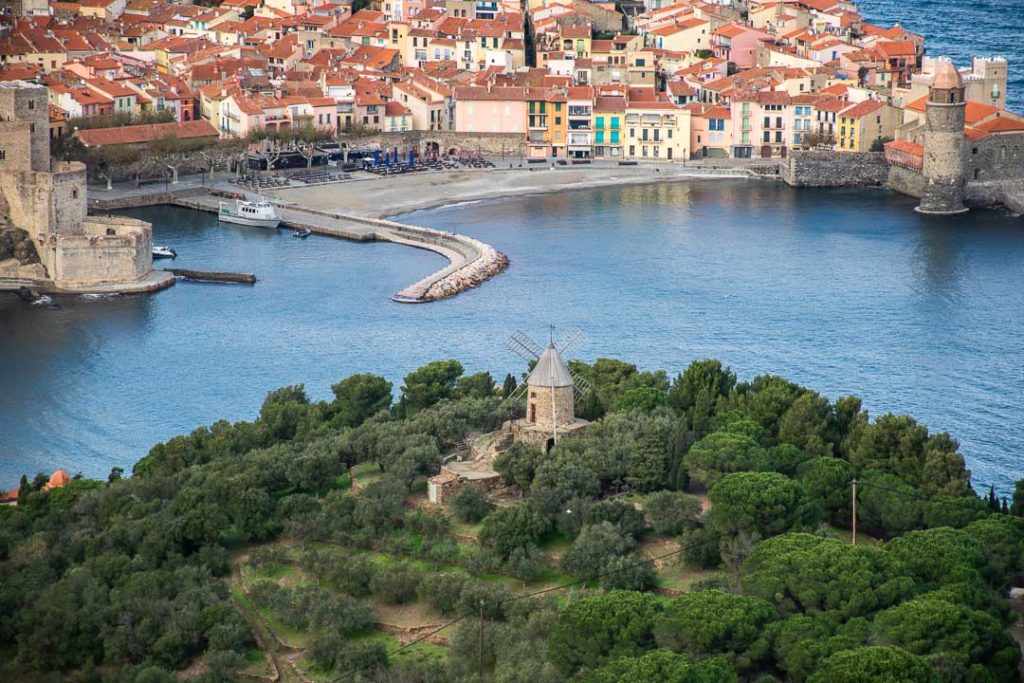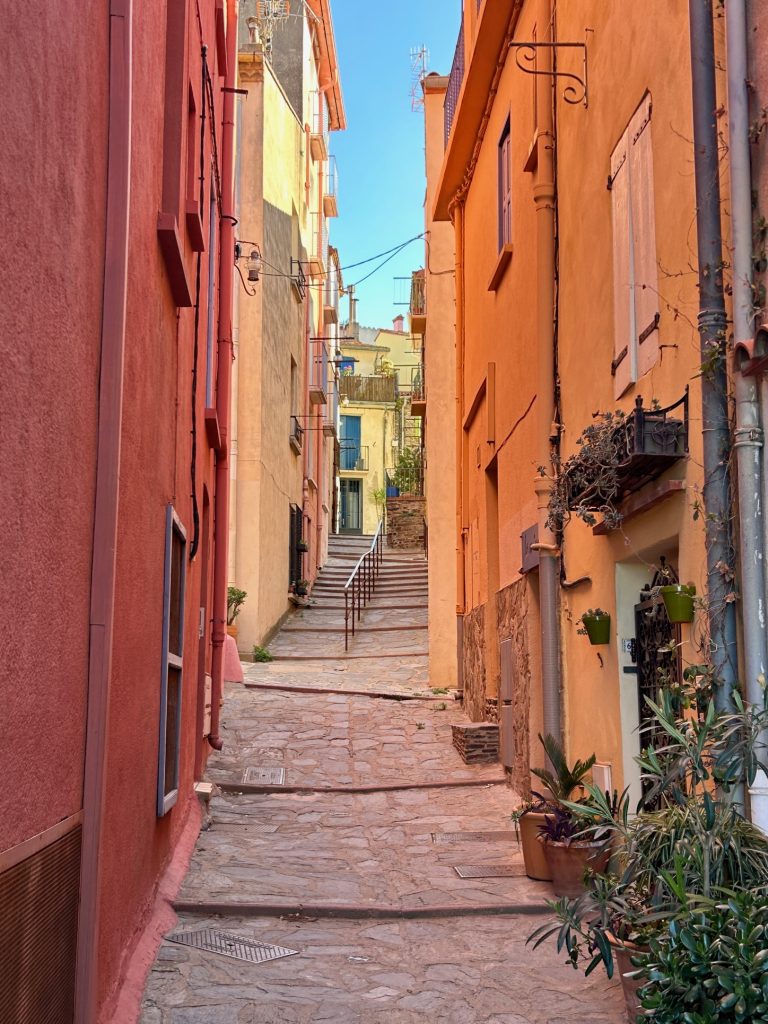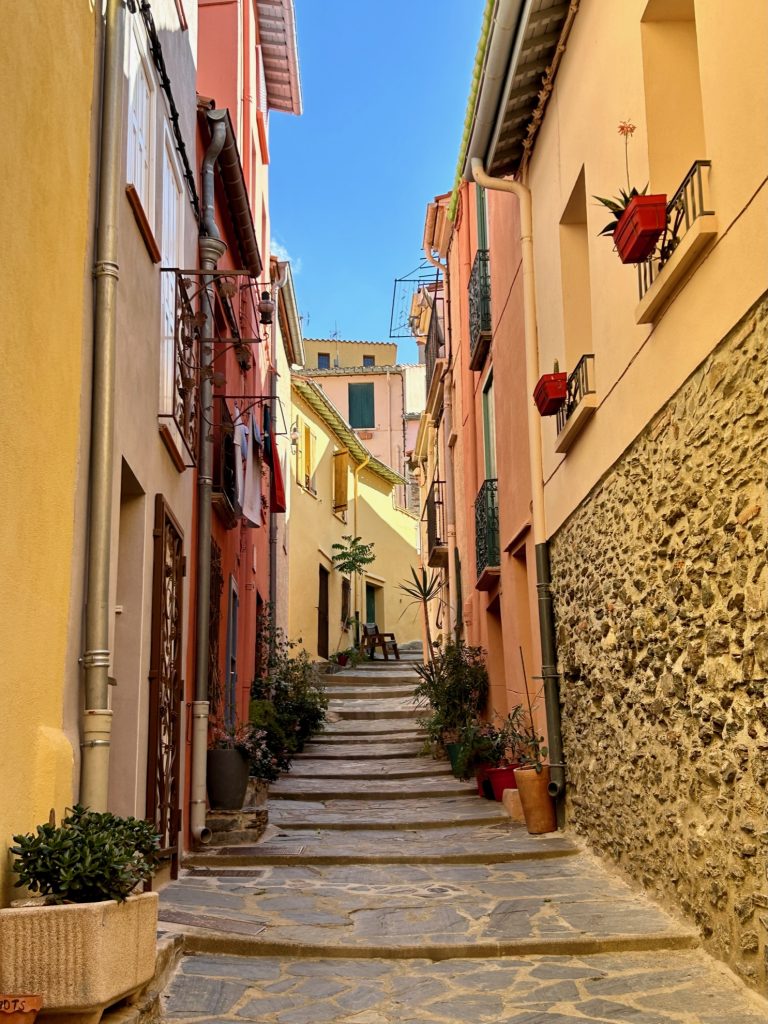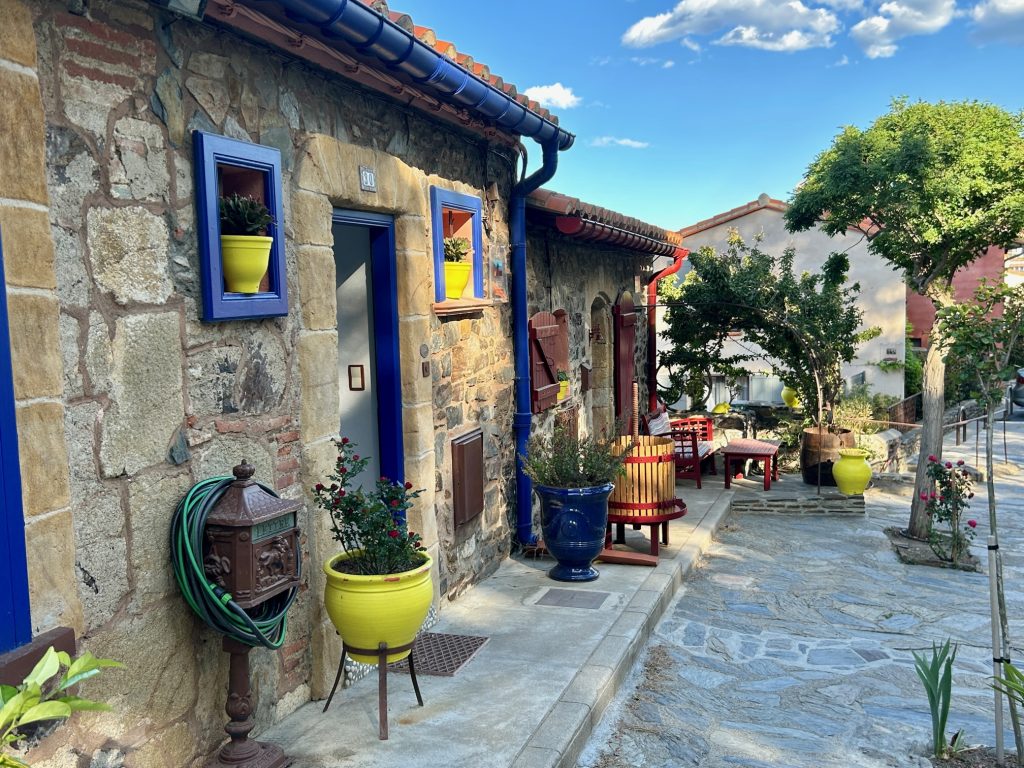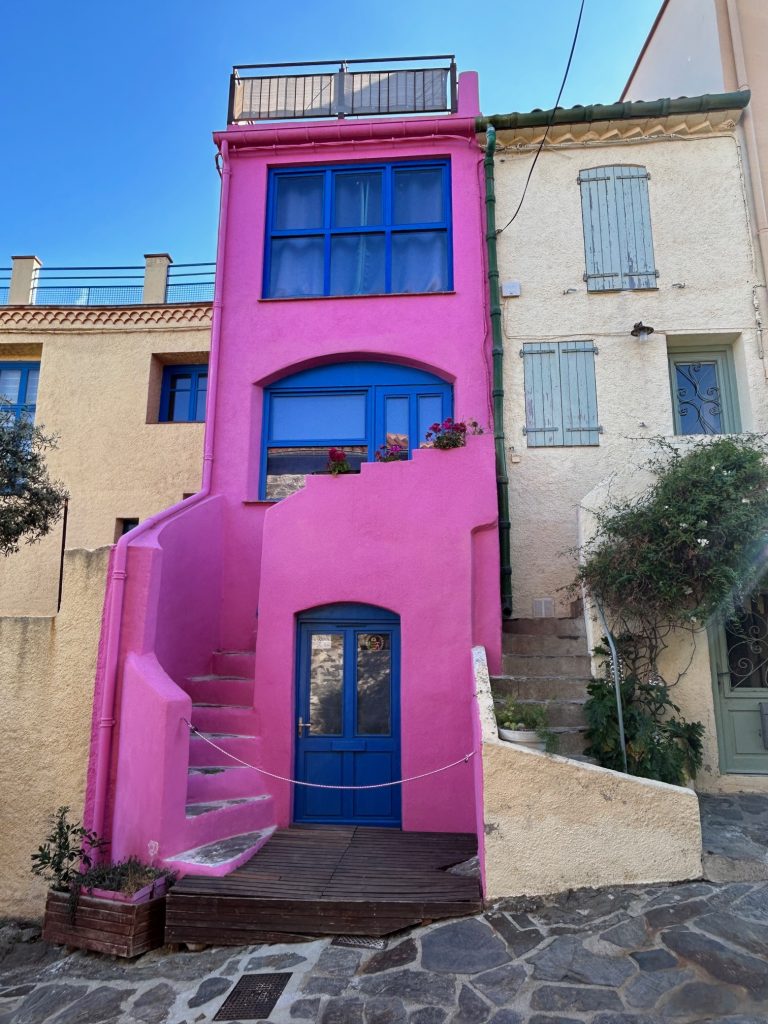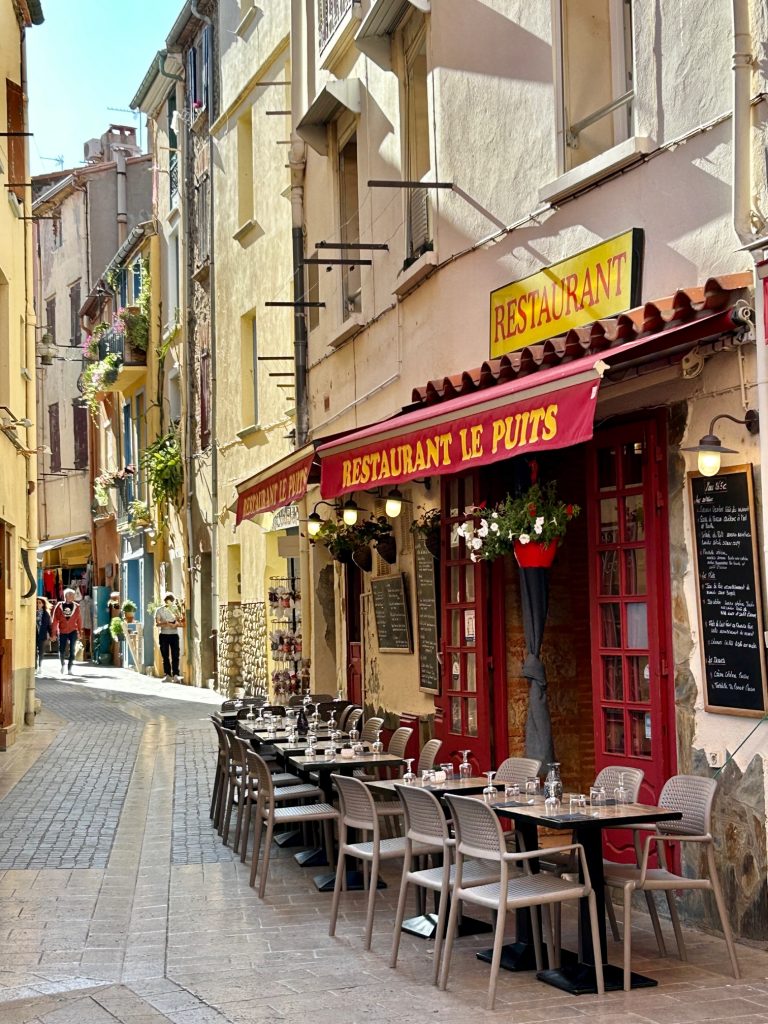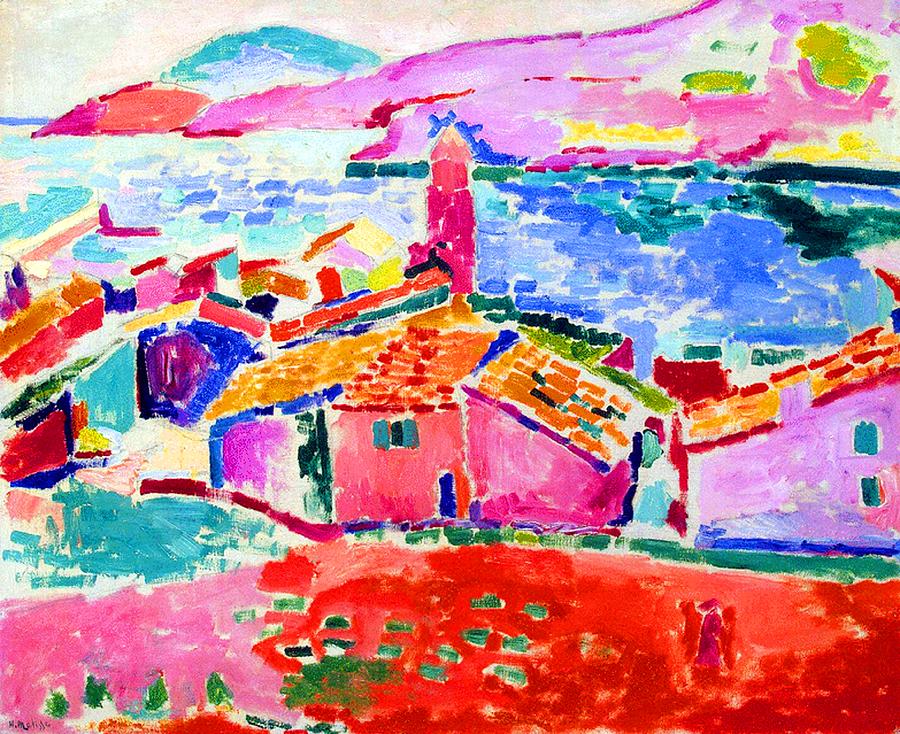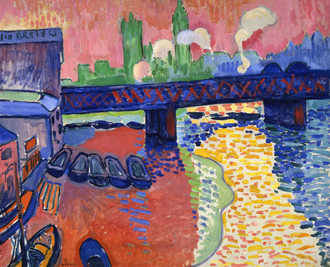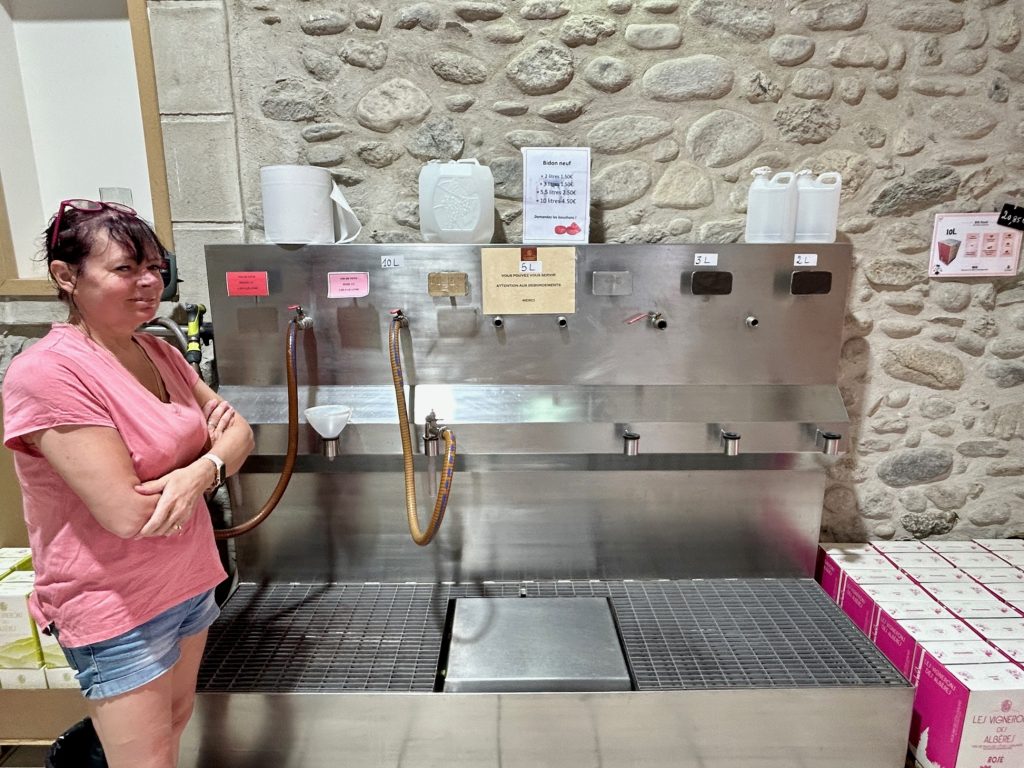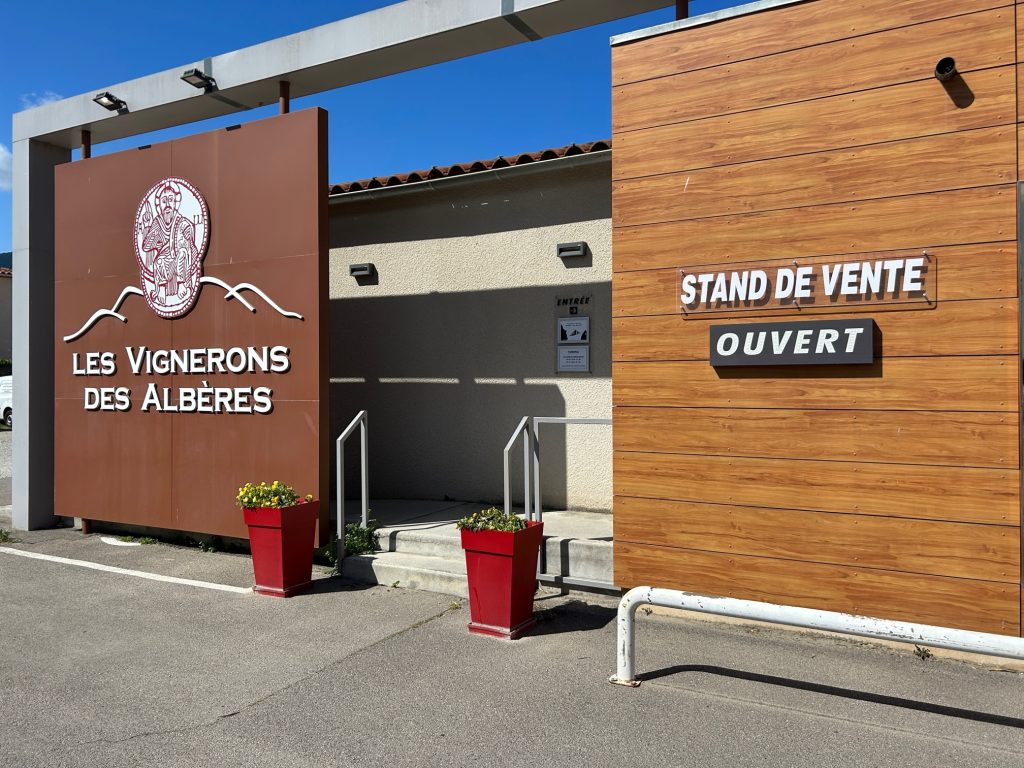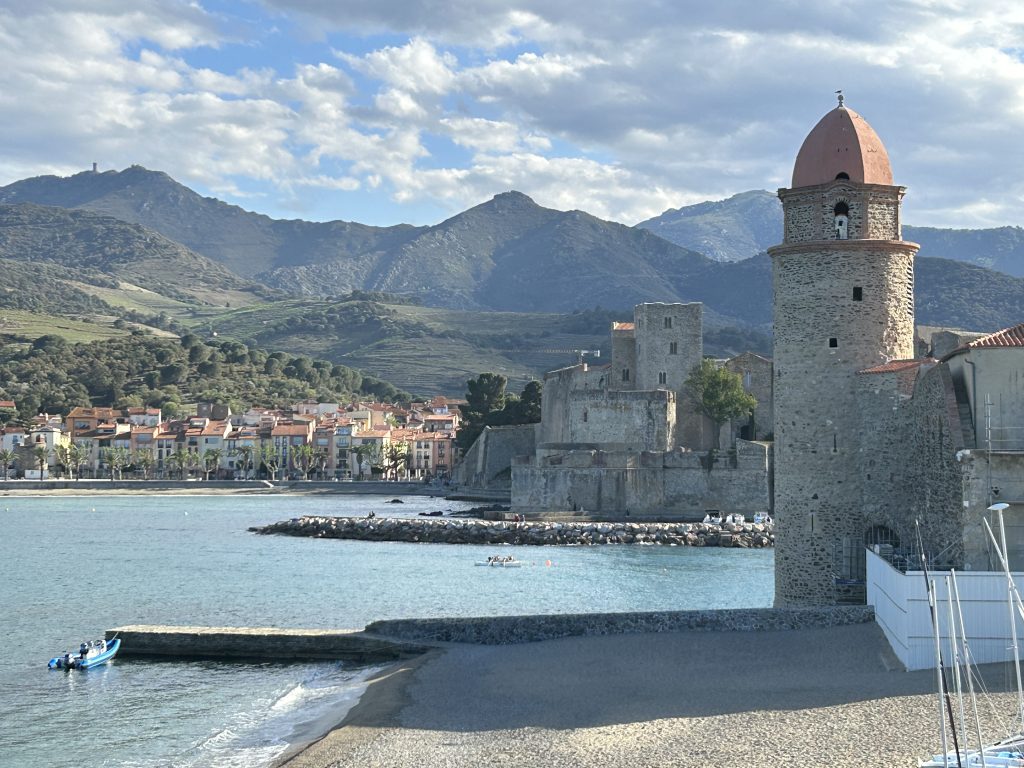As has been said before, it is not often we revisit places during these Tours but we were always going to return to Cuzcurrita de Rio Tiron and Vanya’s “best ever boutique hotel”, the Hotel Teatrisso, with it’s distinctive themed rooms and the wonderfully warm welcome provided by it’s owners Laura and Jose Angel. During our first visit, last September, we stayed in the studio suite ‘Africa’. We promised then we would return and that our next visit would be over a weekend so as to enjoy the hotel’s evening activities. We took the last available room; a charming attic room the ‘Salon de Baille’ (the Dancing Room). The hotel was full except for this room because the owners were to host a wine tasting dinner on the Friday evening and a “Teatrisso Night” on the Saturday.

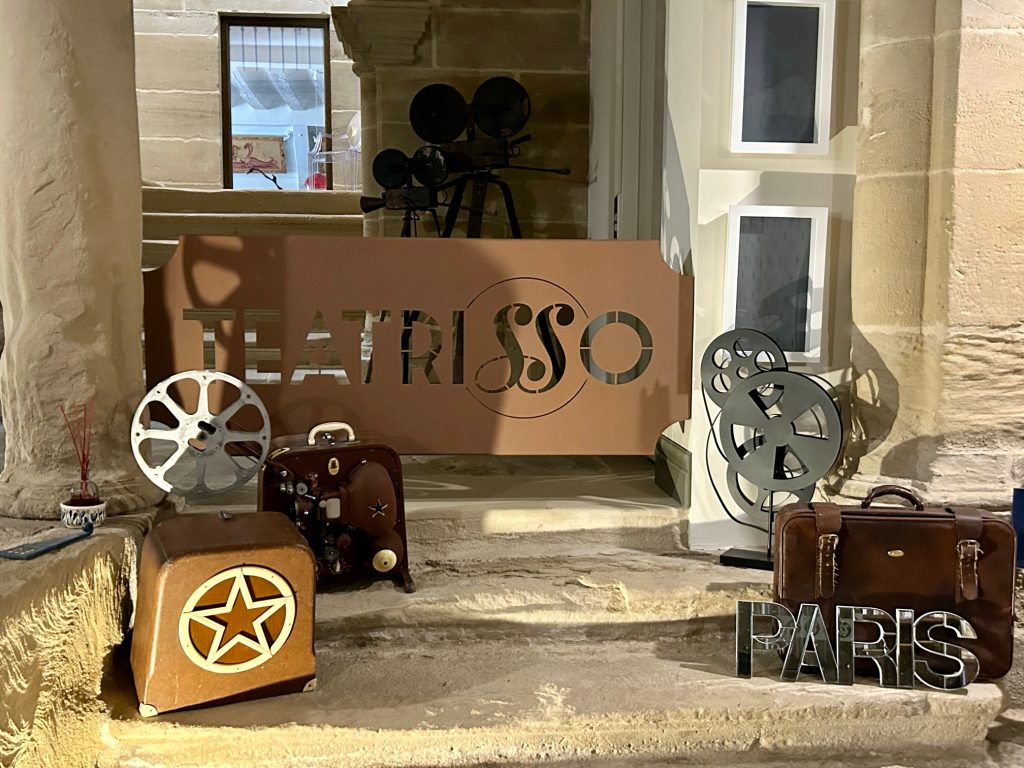
Laura and Jose Angel, owners of the Teatrisso.

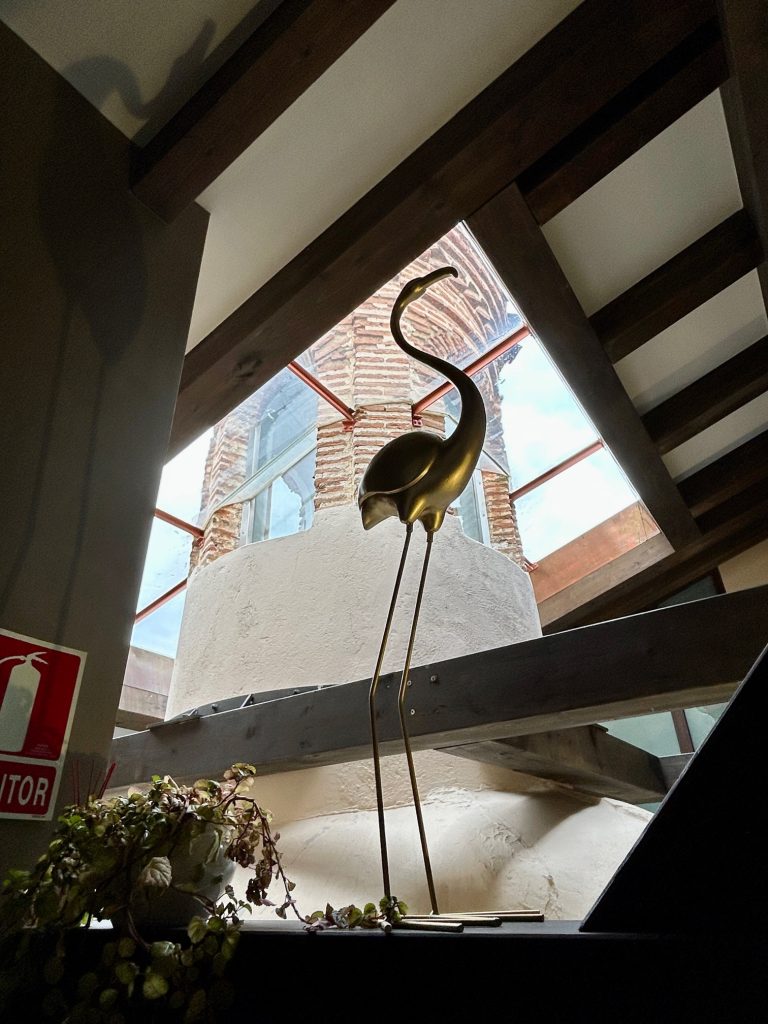
A couple of slightly ‘different’ photos I took of the hotel’s interior.
And so to the wine tasting. Headlining as the ‘Battle of the Wines’ this was wine tasting with a difference. Estela Lecea, the granddaughter of the founder of Bodegas Lecea, has travelled extensively throughout South America and was keen to share her experiences and compare two wines produced by Isabel Nicul in the Casablanca Valley in Chile with two produced by the Bodegas Lecea in the San Asensio area of La Rioja. Each of the wines were paired with gourmet tapas prepared by Teatrisso’s very own Jose Angel and it was a fascinating evening (notwithstanding my limited understanding of the Spanish language) with both wine and food proving amazing. Nevertheless, there was an easy winner – a sensational red Rioja produced by Bodegas Lecea named ‘Parabolas para Volar’ (literally ‘Parables to Fly’ which is the title of Estela’s book about her travels). This was a 100% garnacha rioja, limited edition wine (just 500 bottles), which was complemented with a ‘Casserole of Iberian Pig Cheeks glazed in Red Wine and served with Potato Parmentier’. Wow!!
By local standards the winning wine was not cheap but nothing could have stopped me buying some (three bottles) and Vanya and I determined there and then to visit the Bodega in San Asensio the very next day.
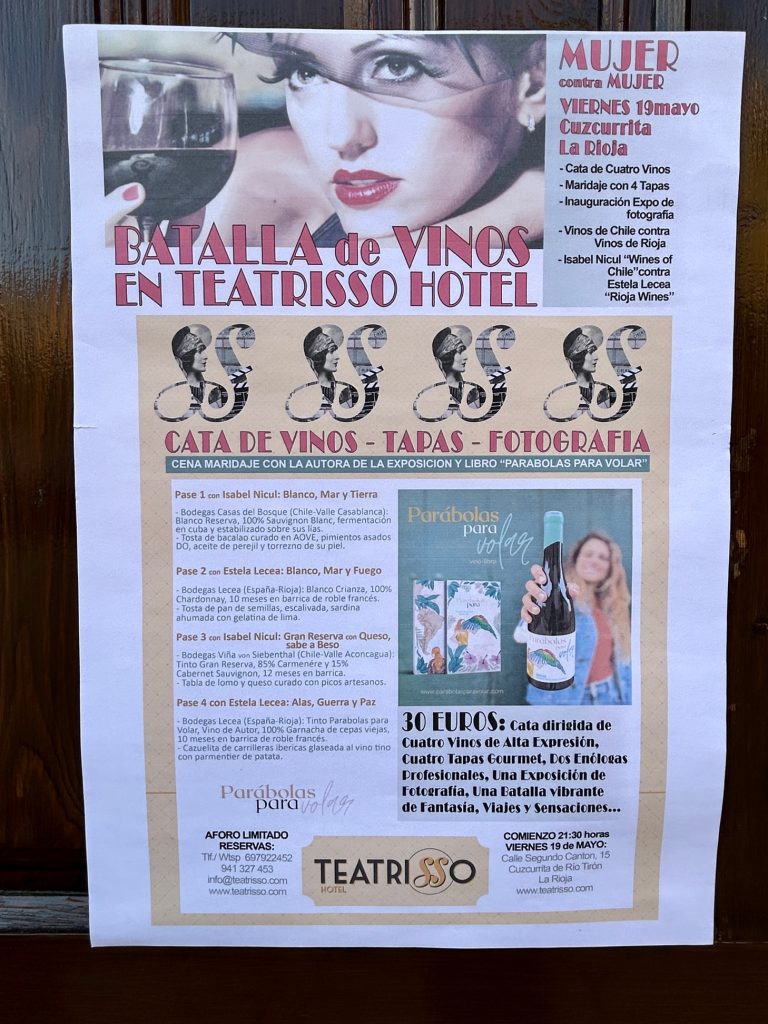
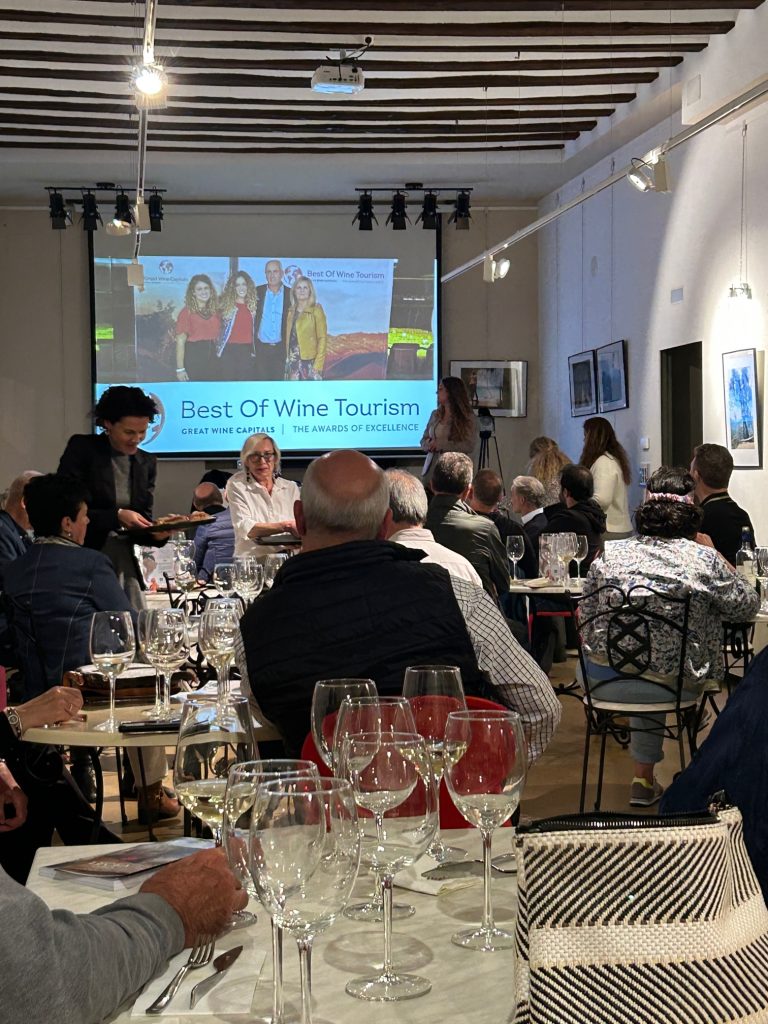
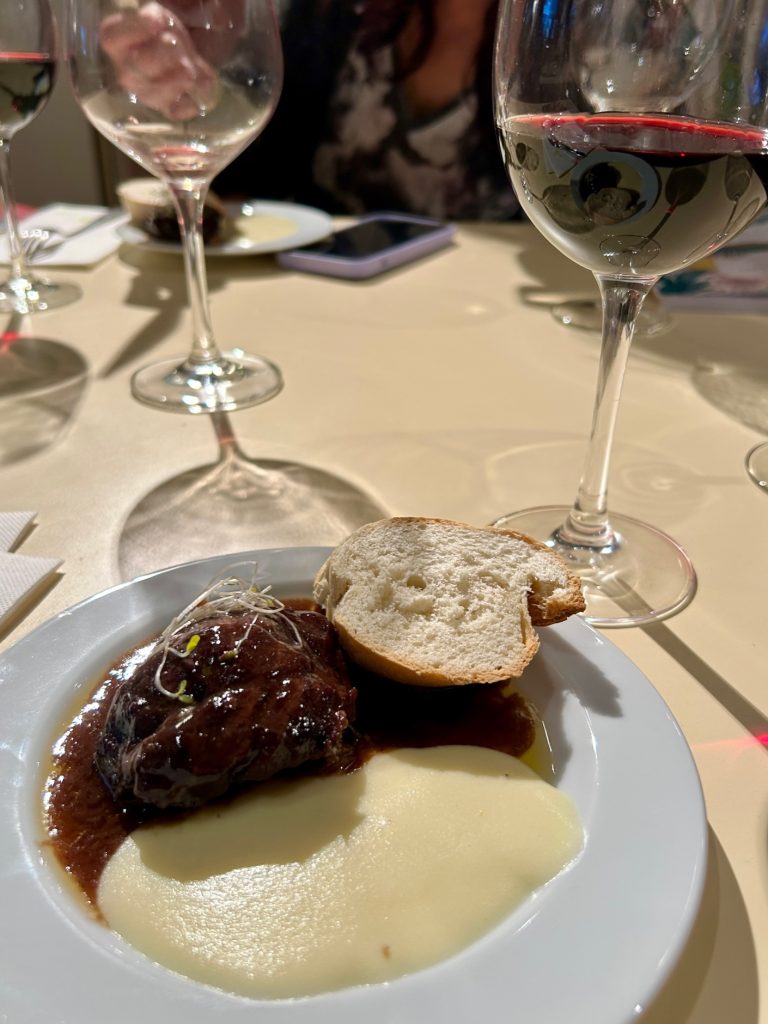
Left: A flyer advertising the ‘Battle of the Wines’. Centre: The battle is underway in the hotel’s old cinema with Estela Lecea presenting . Right: The ‘Casserole of Iberian Pig Cheeks glazed in Red Wine and served with Potato Parmentier’
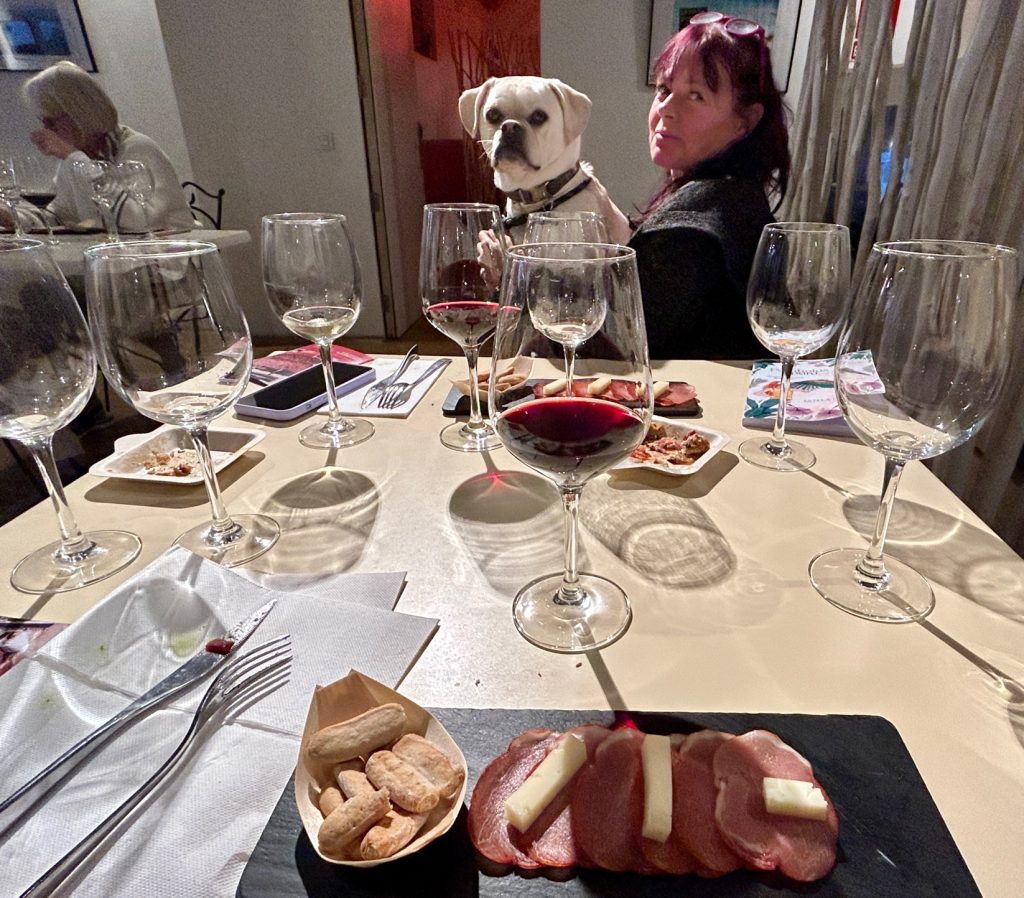
Beanie was as interested in events as anyone.
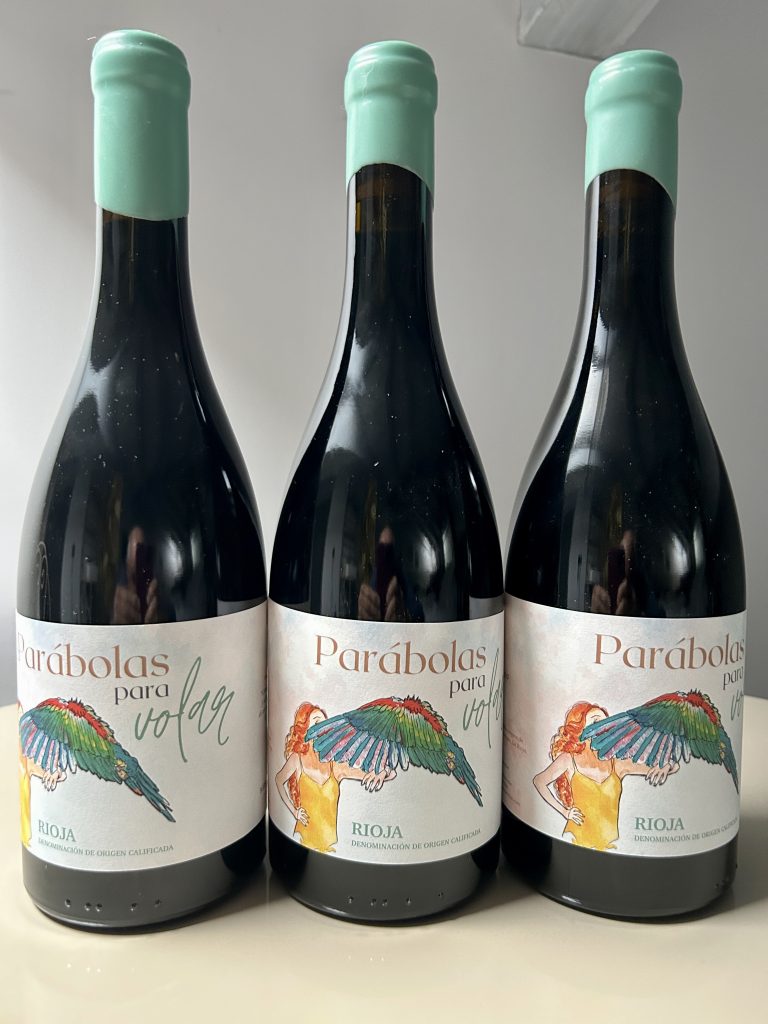
The winning wine and my favourite, Parabolas para Volar.
Things just couldn’t get much better. There was second function organised for the Saturday night. Termed the ‘Teatrisso Night’, it was a celebration of the owners having bought and converted a rather dilapidated 16th century merchant’s house (which had subsequently served as a 1920’s cinema, theatre and dance hall as well as being a barracks for Italian soldiers during the Spanish Civil War) into the lovely boutique hotel it is now.
The Teatrisso Night commenced with a brief wine tasting session in the hotel’s wine cellar where we were introduced to a very pleasant local rose wine (rosada in Spanish). The main events followed which were (a) a powerpoint presentation by Laura, who gave us a brief history of the building and outlined how she and Jose Angel went about transforming it and (b) a small banquet prepared by Jose Angel of 6 gourmet tapas, each with an appropriate local wine. I think I floated up to our bedroom at the end of the evening.


Left: Another flyer, this one advertising the Teatrisso Night. Right: Sampling the rose wine in the cellar. Did I mention that there is a fresh water spring in the wine cellar?

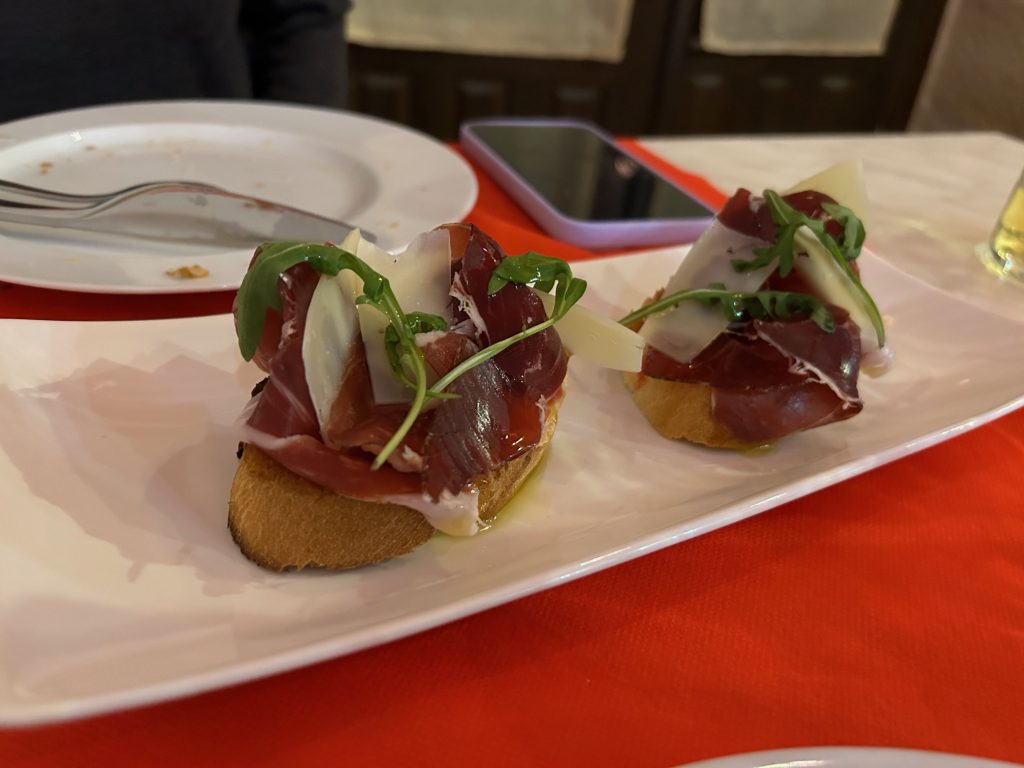
A couple of the gourmet tapas prepared by Jose Angel. His food was seriously good although I couldn’t quite manage the Bacalao (Cod). It was simply too strong.
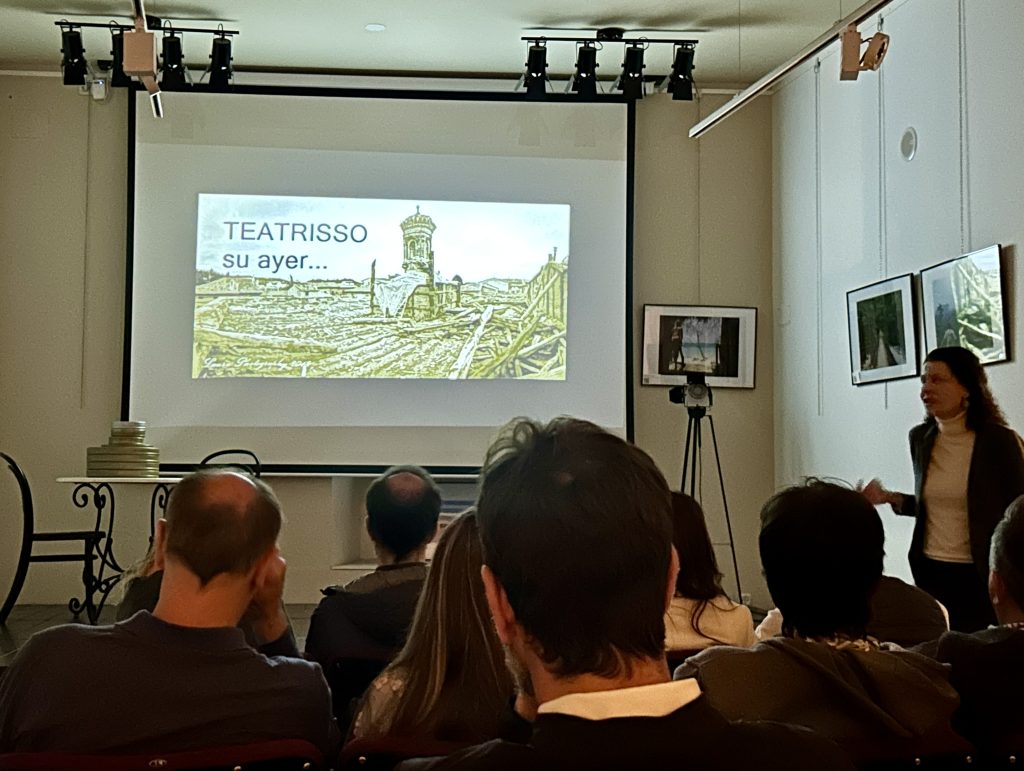
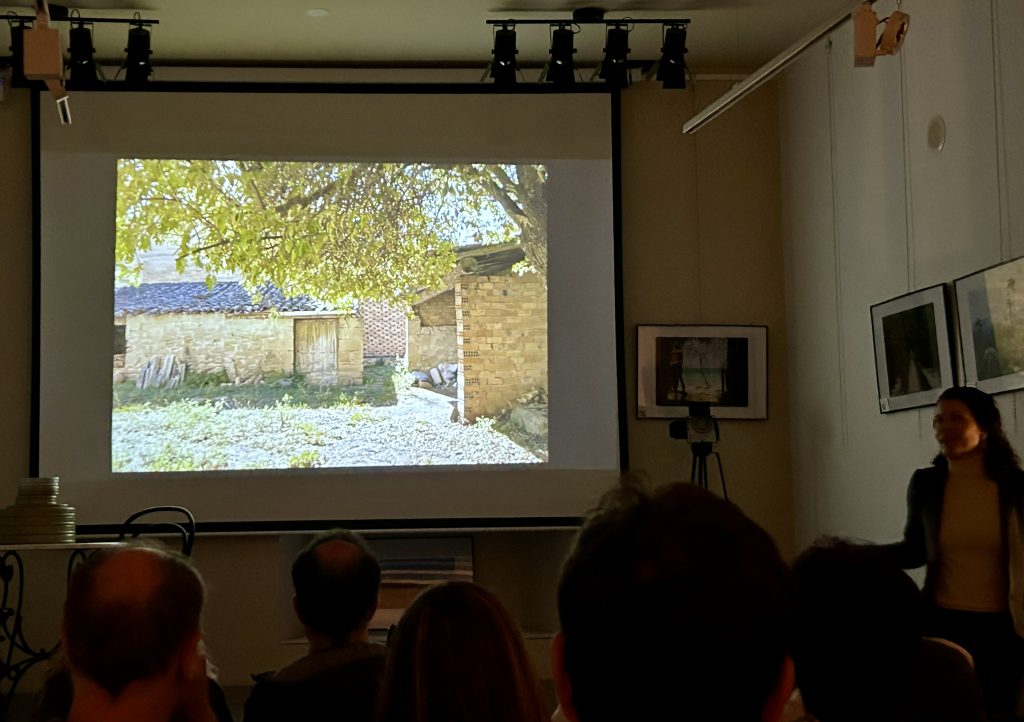
Four photos of slides from Laura’s presentation. These were photos of the building prior to the restoration. What they have achieved is amazing.
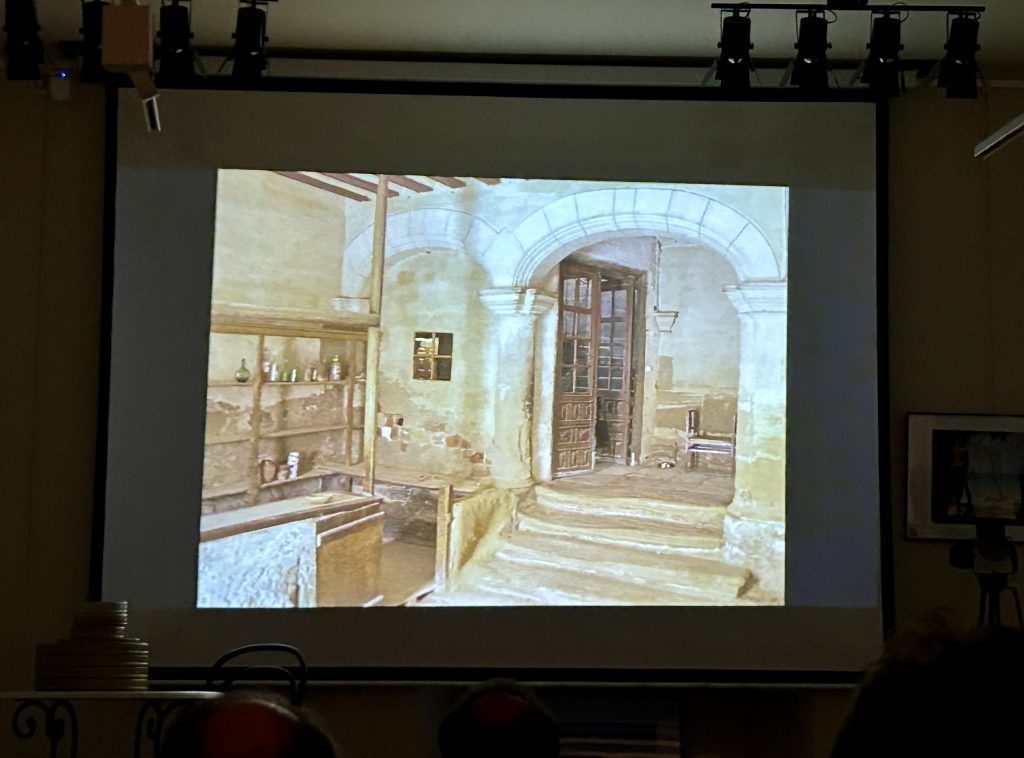
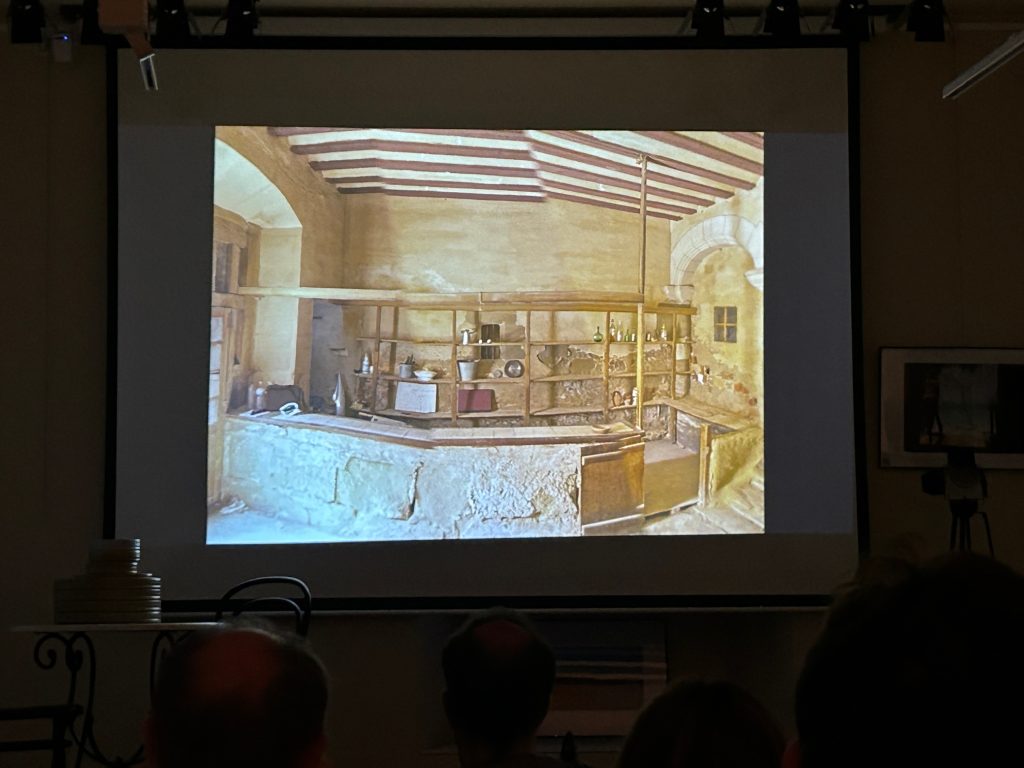
There’s more about Cuzcurrita and the Teatrisso in an earlier blog (Tour 6 in 2022). I’ll end this particular entry with a few more photos taken from on or around the Plaza Mayor.
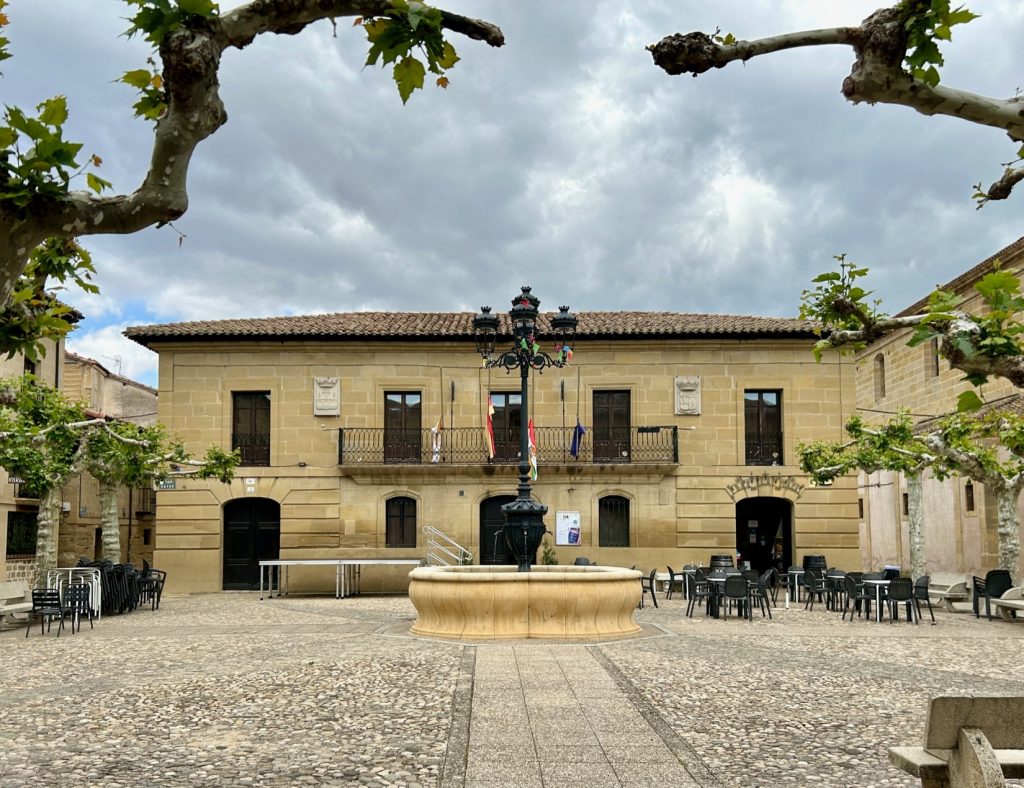
I had the bar on the main square to myself this visit. The bar down by the bridge over the Rio Tiron was busier but the village band was practising there. I’ll let you know!

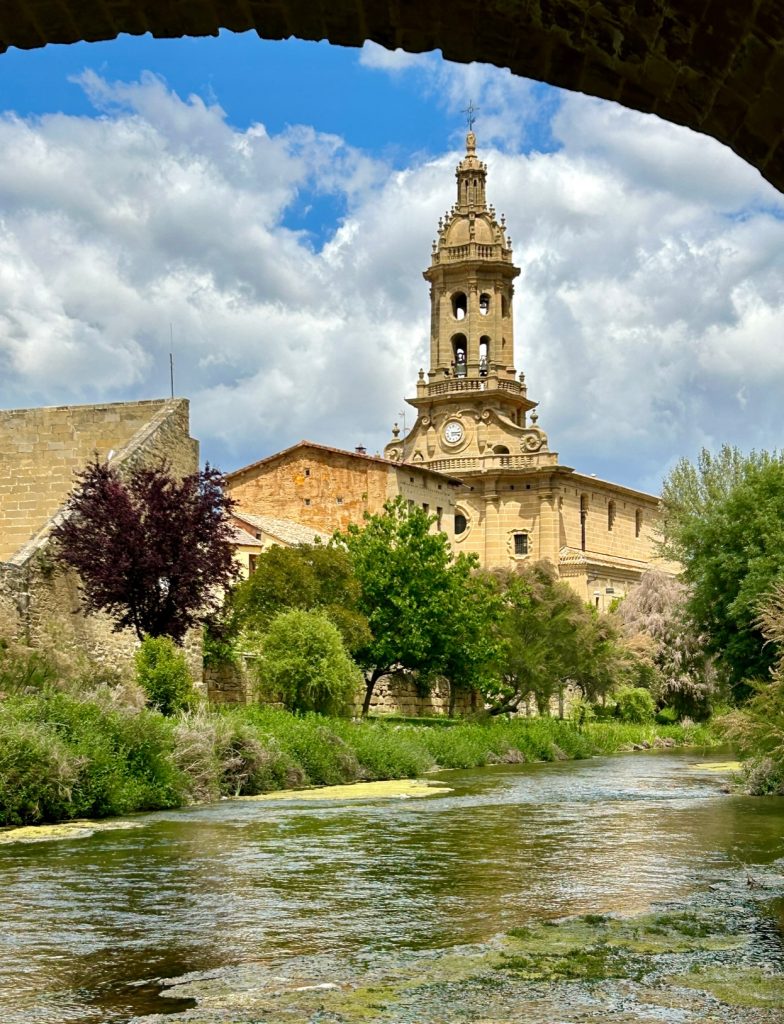
Left: The village church,the Parroquai di San Miguel Arcangel, from the main square. Right: The same church from under the 15th century road bridge across the Rio Tiron.
The last time we visited Cuzcurrita I never got to see inside the church. It was the same again this time. We’ll just have to try again (next year?).
Meanwhile, more wine tasting in San Asensio tomorrow.

